Artsy Traveler
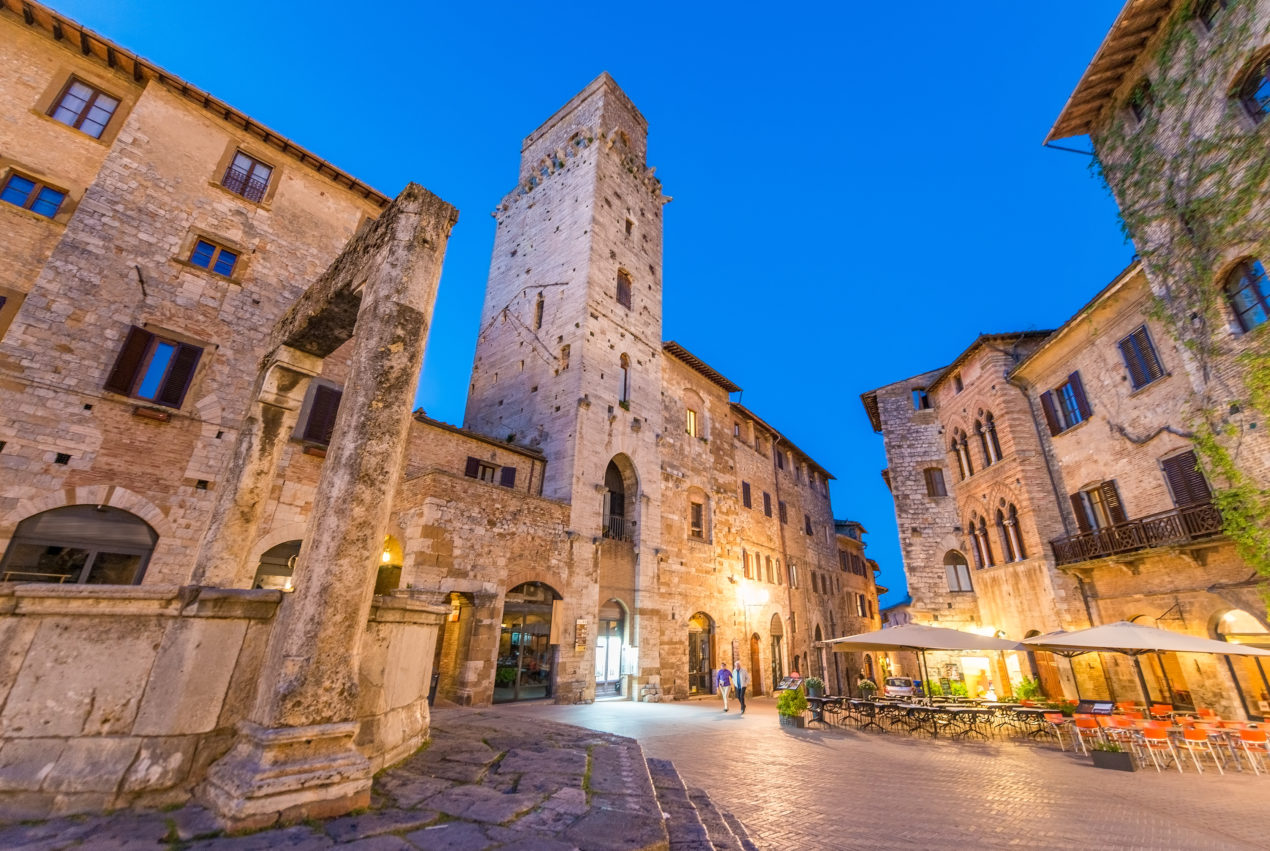

Best Itinieraries for Exploring Tuscany, Umbria and La Dolce Vita
Last updated on April 6th, 2023 at 05:52 pm
If you love incredible art, gorgeous landscapes, fabulous food, and world-class wines, then consider exploring Tuscany and Umbria. Along the way, you’re sure to experience la dolce vita –the sweet life.
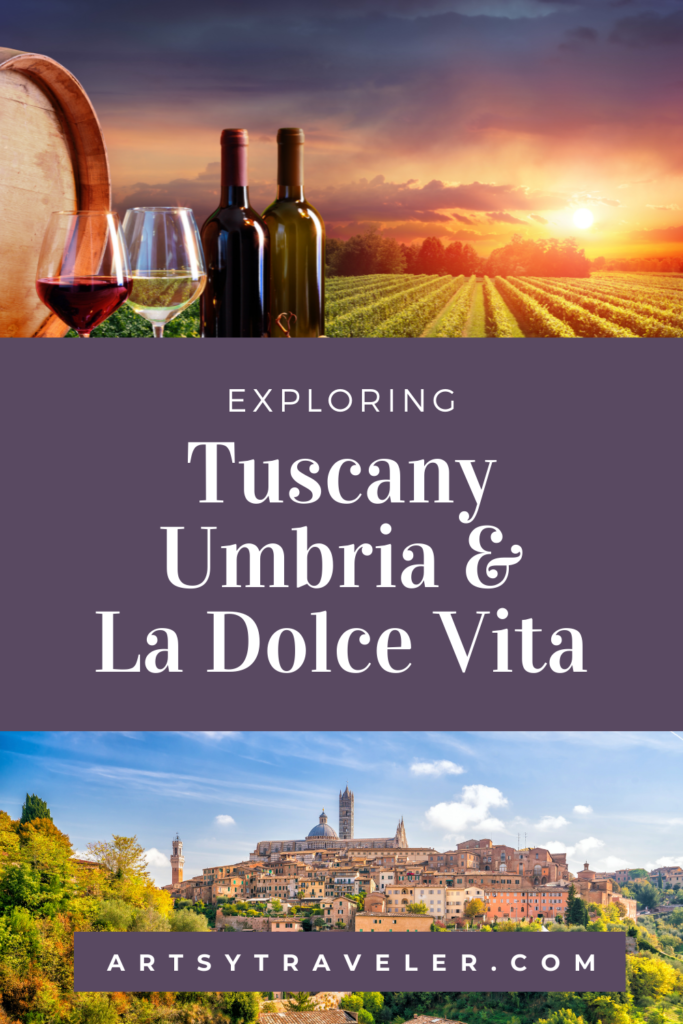
Suggested Itineraries for Exploring Tuscany & Umbria
Explore both Tuscany and Umbria by car or home-base in one or more of the towns and take day tours to others.
For Tuscany, one strategy is to spend a few days in Florence (see my suggestions below for enjoying this most Renaissance of cities), three nights in Siena, and two nights in San Gimignano. During those five days in the Tuscan countryside, be sure to take a wine tour.
For Umbria, divide your time between the three main towns: Orvieto, Perugia, and Assisi, and reserve time for enjoying the rugged countryside.
If you want to explore Tuscany and Umbria by car, pick up your rental car at the Florence airport. Avoid picking your car up at the train station or some other area in central Florence. You don’t need the headache of navigating your way out of the city.
After picking up your car at the Florence airport, you’ll be out on the highway within minutes.
TIP : Bear in mind that driving in Tuscany and Umbria can be slow going. If you home-base in a specific area or town, reserve a few days for just staying put and enjoying la dolce vita . Spending every day driving the twisting, narrow roads can get tiring.
After a week (or maybe two!) in Tuscany, spend another week in Umbria if time allows. Perugia or Assisi are good choices.
We’ve been visiting Tuscany for years and plan to return. We’ve only recently “discovered” Umbria and were taken with its less touristy, more authentic atmosphere. While I do love Tuscany, it can get overrun with visitors, particularly in Florence.
Here are my recommendations for top towns to visit in Tuscany and Umbria.
If you have only a week to see Tuscany, I suggest you make time for Florence and two of the other towns, such as Siena (my favorite) and San Gimignano, with perhaps a day trip to one other town, such as Montalcino or Volterra.
For accommodation recommendations, see Where to Stay in Italy: My Best Picks .
You kinda have to visit Florence because it’s, well, Florence. A sizable percentage of Italy’s finest art is found in Florence, and you owe it to yourself to see it. Unfortunately, half of the known universe descends on Florence every day (or at least that’s how it feels). I remember wondering if the medieval Ponte Vecchio was strong enough to bear the throngs streaming across it.
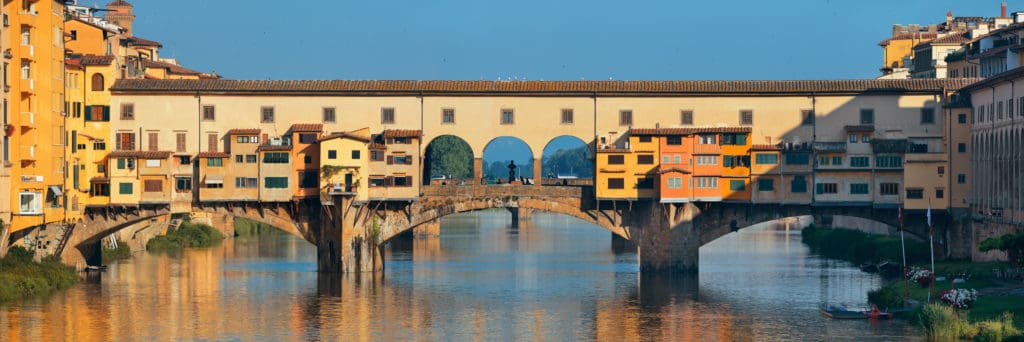
TIP : Combat the crowds by visiting the hot spots, such as the Uffizi, the Duomo, and the Piazza della Signoria in front of the Palazzo Vecchio, early in the morning or late in the day.
During the middle of the day, opt for lesser known but still amazing sites, such as the Masaccio frescoes in the Brancacci Chapel across the river from central Florence and the Museo Nazionale di San Marco which houses the frescoes by Fra Angelico.
Here are sightseeing suggestions for Florence. Make sure you purchase tickets ahead of time for the Uffizi and the Accademia.
Spend at least two nights, preferably more, in Siena. Siena is my favorite city in Tuscany, with enough great artsy sightseeing to keep you as busy as you want to be. You’ll also have time to just hang out in Siena–walk the narrow cobbled streets, relax in the Campo, and eat a great meal or two complemented by good Tuscan wine.
TIP : When you arrive in Siena, head first to the Campo. If the weather is dry, plop down on the 700-year-old bricks and soak up the history.
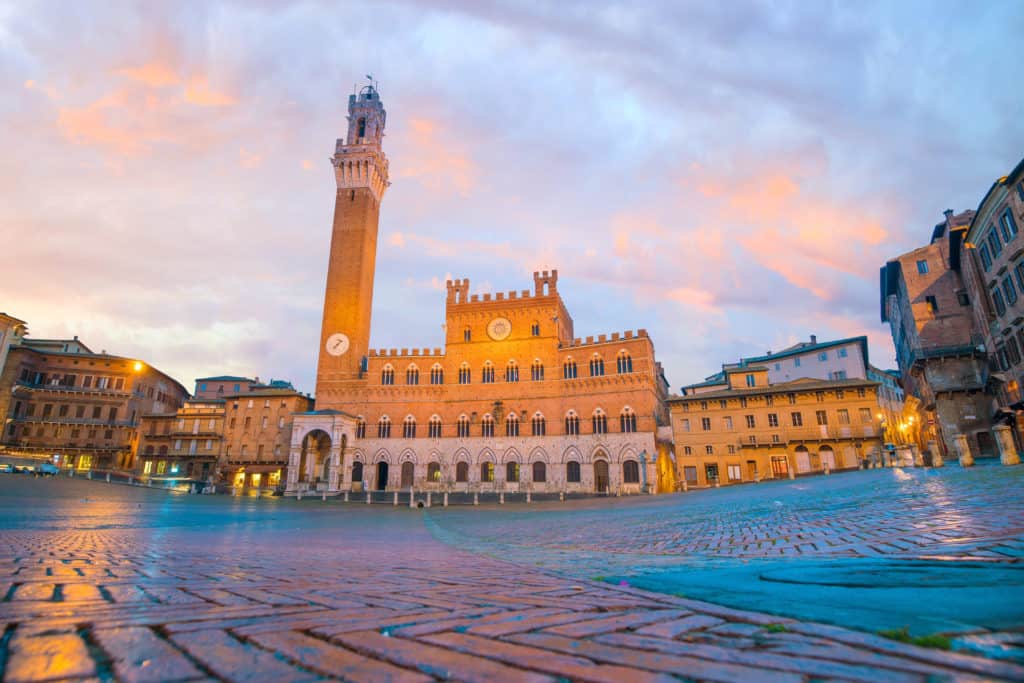
The Campo can get very crowded during the day. Arrive later in the afternoon, enjoy a glass of wine at one of the cafés bordering the piazza, and watch the crowds disperse as the sun turns the Torre Mangia golden. Your glass of wine will be overpriced, but who cares? You have a ringside seat to one of Europe’s most beautiful public piazzas.
Allocate one of your days in Tuscany to taking a wine tour of the region. Choose a tour that includes Montalcino, home of the scrumptious (and potent) Brunello di Montalcino. The tour I took included a marvelous three-course lunch and visits to three wineries that also included tastings. Let your guide do the driving!
Staying in Siena
You’ll find good accommodation options in Siena in the post Where to Stay in Italy: My Best Picks . Here are more sightseeing options in Siena.
San Gimignano
Yes, it’s crowded during the day with tour busses, but once they leave, you’ll have beautiful San Gimignano, medieval city of towers, all to yourself. Enjoy top-class restaurants ( Cum Quibus Ristorante is to die for and it’s not the only one) and stroll flood-lit streets that, apart from the souvenir shops, have barely changed in 700 years.
For an in-depth look at San Gimignano and why it deserves top billing in your itinerary, read Exploring San Gimignano in Tuscany .
Fans of the Medici series on Netflix will recognize the town hall in Volterra as the stand-in for Florence’s Palazzo Vecchio. Volterra–known as the City of Alabaster–is considerably less crowded than its neighbor, San Gimignano, and has just as much (maybe more) to offer the artsy traveler.
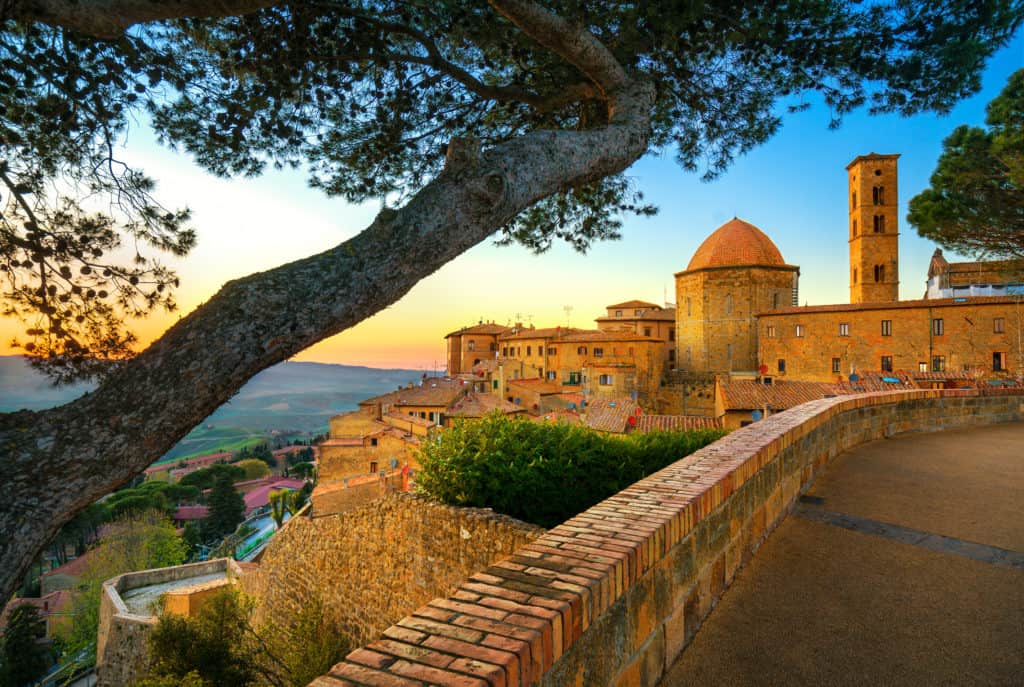
Noteworthy sites include the medieval frescoes in the Palazzo dei Priori, the remains of the Etruscan Acropolis (the Etruscans were big in these parts), the wonderful Guarnacci Etruscan Museum (more Etruscans), and the Roman Theater complex that includes the ruins of 3rd-century baths.
Read more about the Etruscans in the Artsy Sightseeing section of the Italy Destinations page.
The walled city of Lucca is a charming place to spend half a day. Walk along the top of the walls, visit Lucca Cathedral (Lucca is known as the city of a hundred churches so there’s more to choose from), and breathe in the medieval atmosphere.
When we visited, a group of young people dressed in medieval garb were presenting a flag-waving demonstration to the accompaniment of some serious medieval drumming. We were entranced.
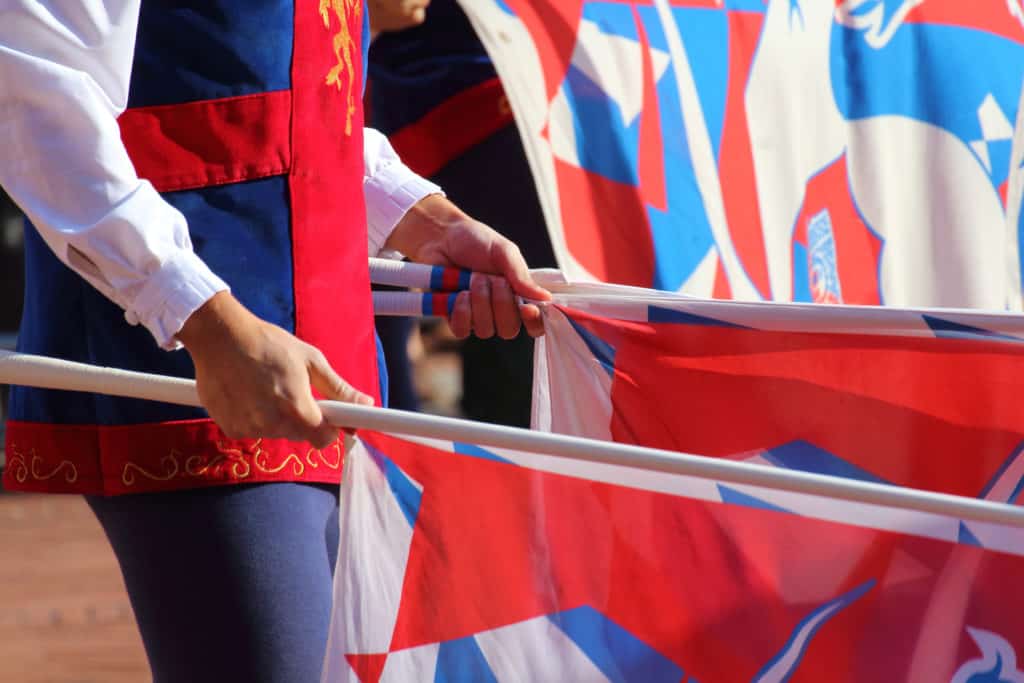
I’ve visited Pisa once, and that’s enough for me – though perhaps I’m being unfair. The area around the famous Leaning Tower teems with tacky souvenir stalls. I like a good tacky souvenir as much as the next gal, but even I reached my limit in Pisa.
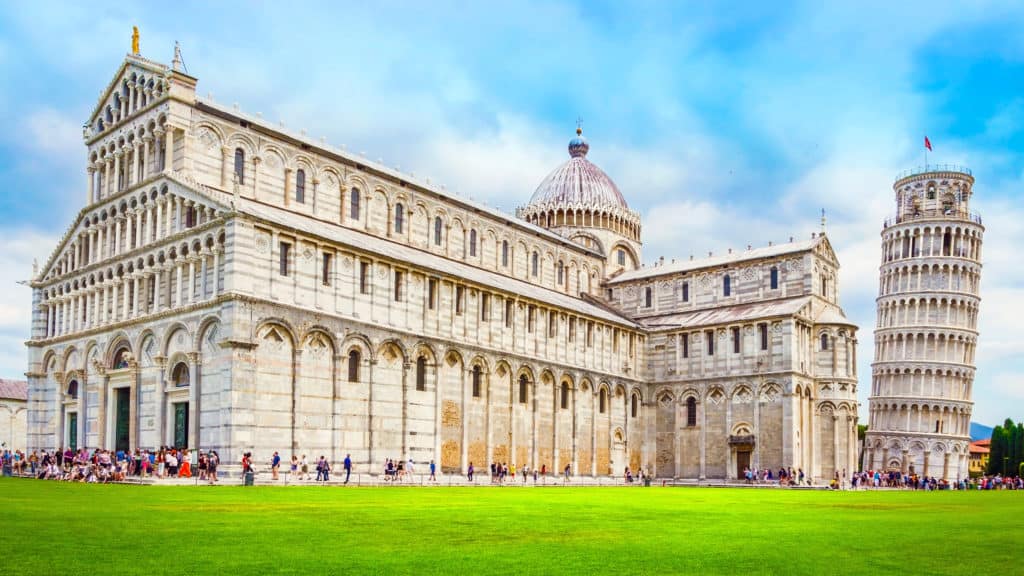
The cathedral is worth visiting, and you must get someone to take the obligatory shot of you holding up the tower. Drop in to Pisa if you’re driving and you have time; otherwise, don’t sweat it. Tuscany has many more treasures to offer.
Other Towns in Tuscany
Tuscany is one of the largest provinces in Italy, with many worthwhile hill towns to visit, including Montalcino, Montepulciano, Monteriggioni, Cortono, and Pienza.
These are all best visited by car. I’ve also traveled in Tuscany by bus, which works fine if you really don’t like driving.
Driving in Tuscany is relatively easy but not speedy. The roads are narrow and twisting. Slow down, relax, and enjoy the journey. Oh – and make way for locals who don’t ‘do’ slow.
TIP : Never (and I mean never !) attempt to drive into a Tuscan hill town. First, you risk getting a stiff fine (being a tourist is no excuse), second, you risk ripping one or both of your side mirrors off your rental car, and third, you risk never again speaking to your partner.
Find the parking lot outside the city walls and walk into the town. Yes, you’ll likely be walking uphill (that’s why they are called hill towns), but some towns such as San Gimignano thoughtfully provide an elevator to take you from the car park to the town. Others don’t, but if you’re going to travel in Tuscany, you need to be up for some good, stiff walking.
Umbria has much to offer the artsy traveler. The landscape is just as stunning as the landscape in Tuscany, with even more rugged mountains, and hill towns as interesting and historic. Highlights include Perugia, Assisi, Gubbio, and Orvieto.
Perugia is the capital of Umbria and one of its largest towns. We enjoyed strolling around the central piazza and ducking into the cathedral. Perugia is laid-back and not overly crowded.
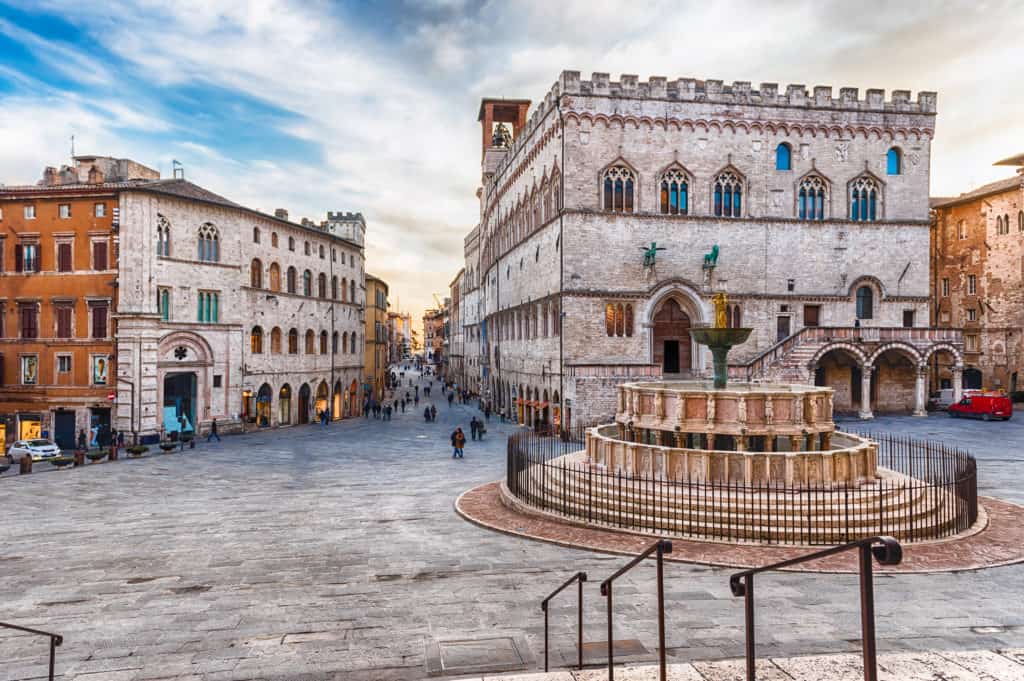
The highlight of our visit to Perugia was discovering the Civic Museum at the Palazzo della Penna. There, we viewed the work of Gerardo Dottori, the leader of the Umbrian Futurists and one of the founders of Aeropainting.
The Palazzo della Penna is one of Perugia’s little-known museums that’s worth seeking out. It’s constructed on the ruins of a Roman amphitheater and an ancient Roman road.
One of the highlights of artsy traveling is looking for these lesser-known but amazing small museums (of which Italy has many). They are almost always deserted, and most contain marvelous collections.
One of the hippest things I saw during our visit to Assisi wasn’t even on the tourist radar. I spied a small sign in a side street advertising a special exhibition of medieval costumes. As an historical novelist with a yen for all things medieval and Italian, I’d found my bliss. Here’s a few of the costumes included in the exhibition.
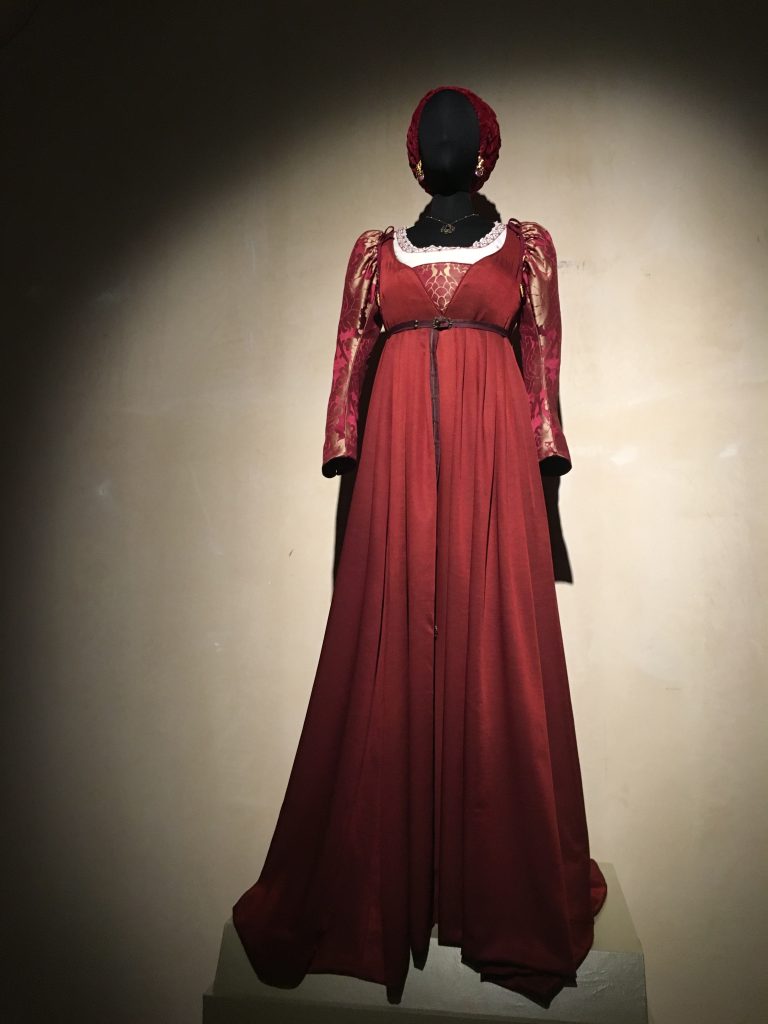
When traveling to small towns in Tuscany and Umbria, check at the tourist office for local exhibitions and events and keep an eye out for posters. You never know what gems you’ll find.
Also taking place while we were in Assisi was an annual festival where all the locals dressed in medieval garb and paraded through the streets. Many other events were included in the festival, but we had neglected to get tickets.
More reason to do your research before you go!
The big draw to Assisi is, of course, the Basilica of Saint Francis of Assisi, with its marvelous frescoes by Giotto. Start your visit to Assisi here, then walk up into the medieval town, and from there continue up to the fortezza for some stunning views.
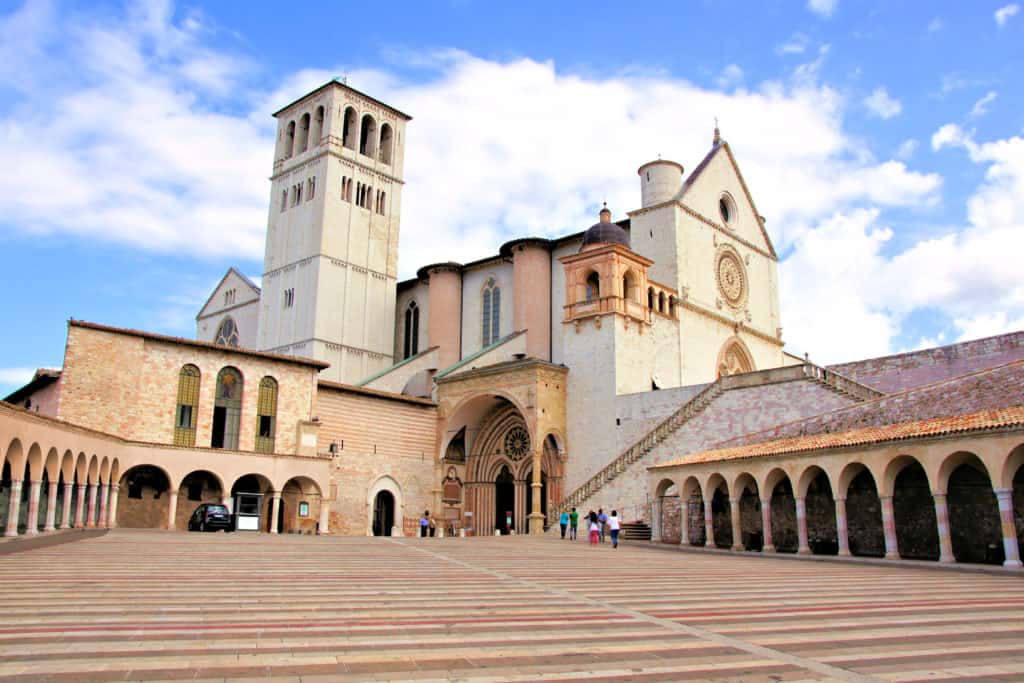
What a delightful town! Nicknamed the City of Fools, Gubbio is unpretentious and relaxed. We spent a pleasant day wandering its cobbled streets, enjoying lunch in the panoramic Piazza Grande, and visiting the municipal museum.
One of the fun attractions of Gubbio is the Big Barrel, otherwise known as La Botte dei Canonici . The barrel is reputed to be the world’s largest and oldest. It’s worth a photo op, and there’s a gift shop. Entrance is free, so if you pass it during your wanderings around Gubbio, pop in and find out more.
We also checked out the Roman Theatre outside the walls of Gubbio near where we parked.
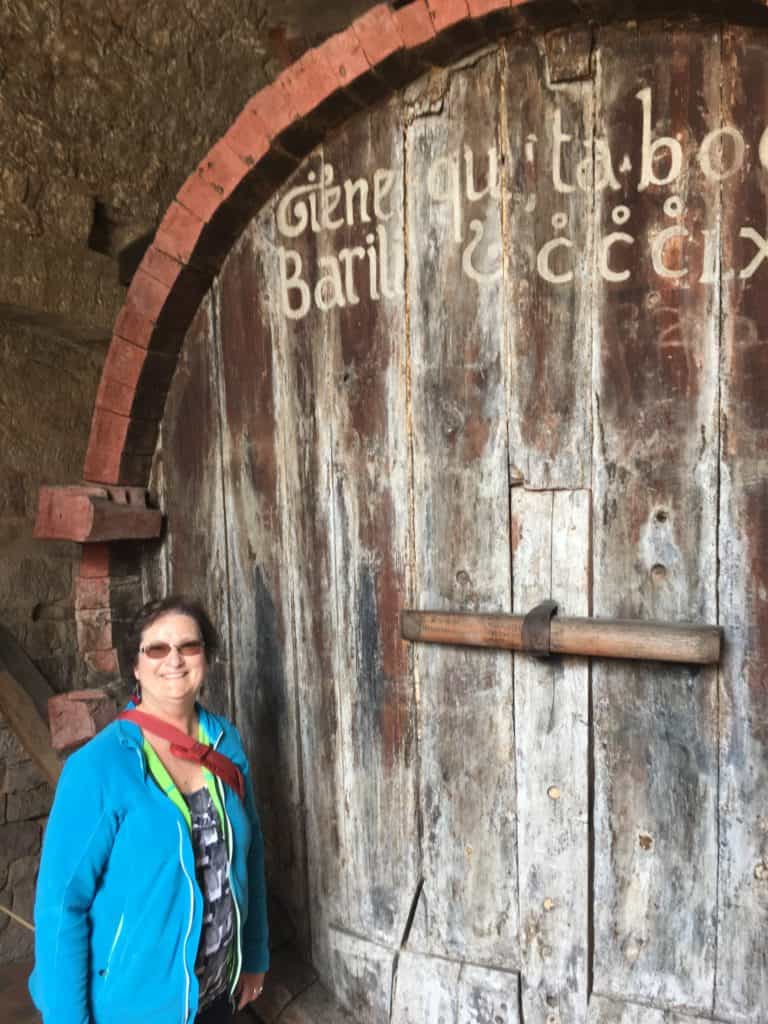
Remember–always park outside the city walls!
The stunning cathedral is the draw to Orvieto, a beautiful Umbrian town perched atop a volcanic plug and worth an overnight stay. Unlike its better known Tuscan counterparts, Orvieto is relaxed and approachable. Park in the large lot at the bottom of the hill and take the elevator or escalator to the medieval upper town.
The facade of the cathedral is unusual in its inclusion of golden mosaics, sculpture, and stained glass.
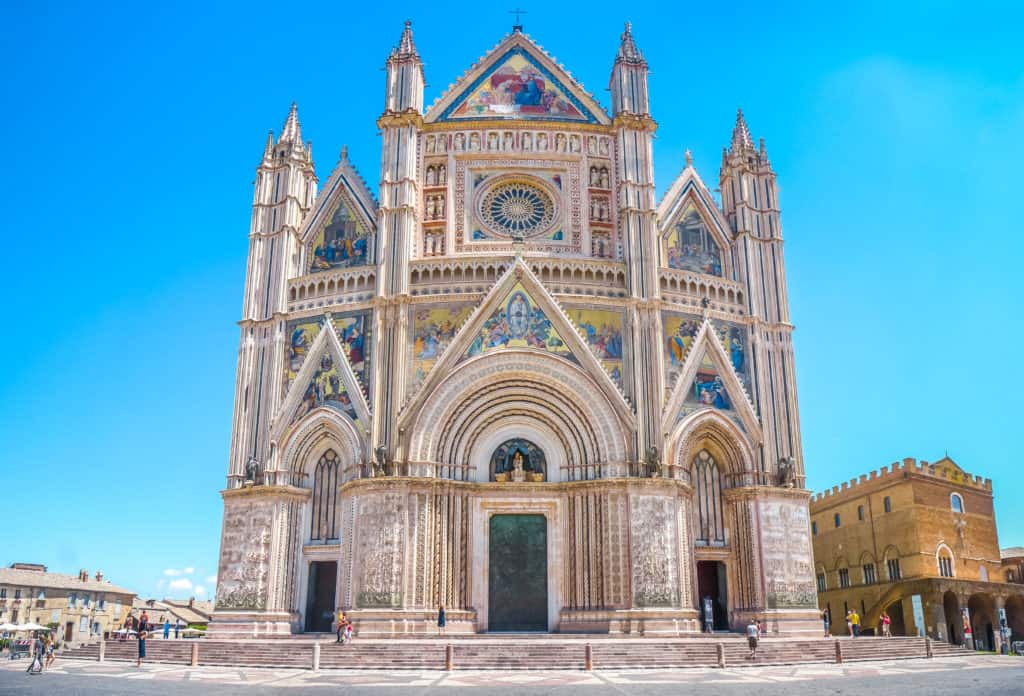
For more information about what to see in Orvieto, check out this article by Rick Steves, my fave travel writer.
Where to Stay
For detailed information about where to stay in Tuscany and Umbria, have a look at my post on Recommended Places to Stay in Italy That Will Make Great Memories . Some of my favorite places that I’ve stayed in Italy, such as the Hotel Pescille in San Gimignano, are located in Tuscany and Umbria.
Here are some more posts about what to see as an Artsy Traveler in Italy:
- Best of Rome in Three Days
- Ten Must-See Art Masterpieces in Tuscany
- Itinerary for a Perfect Week in Italy’s Campania
- Venice in Three Days for the Artsy Traveler
- Compelling Novels Set in Italy Perfect for the Artsy Traveler
Traveling to Vienna – The Waltz Begins
One week in northern italy: recommendations for an artsy trip.
[…] For plenty of recommendations and suggestions, read Exploring Tuscany and Umbria. […]
[…] Exploring Tuscany, Umbria and La Dolce Vita […]
[…] Tuscany and Umbria […]
[…] you’re driving into Italy through Turin, you’ll likely head south into Tuscany and Umbria, perhaps stopping on the way to check out the Cinque […]
Love your descriptions! If you were going to pick a home base in each area (Umbria and Tuscany) which would allow you to explore the nearby towns, which two cities would you pick?
I’d pick Siena in Tuscany and Perugia or Orvieto in Umbria! You can’t really go wrong. So much to see!
[…] Montepulciano and so decided that on this trip we’d skip our usual visits to San Gimignano and Siena and see something new. Good […]
Leave a Reply Cancel reply
Your email address will not be published. Required fields are marked *
Save my name, email, and website in this browser for the next time I comment.

36 Wonderful Things to do in Umbria, Italy (PLUS Map of Umbria)
From medieval hilltop hamlets to the world's tallest man-made waterfall, here are the very best things to do in umbria - italy's green heart.
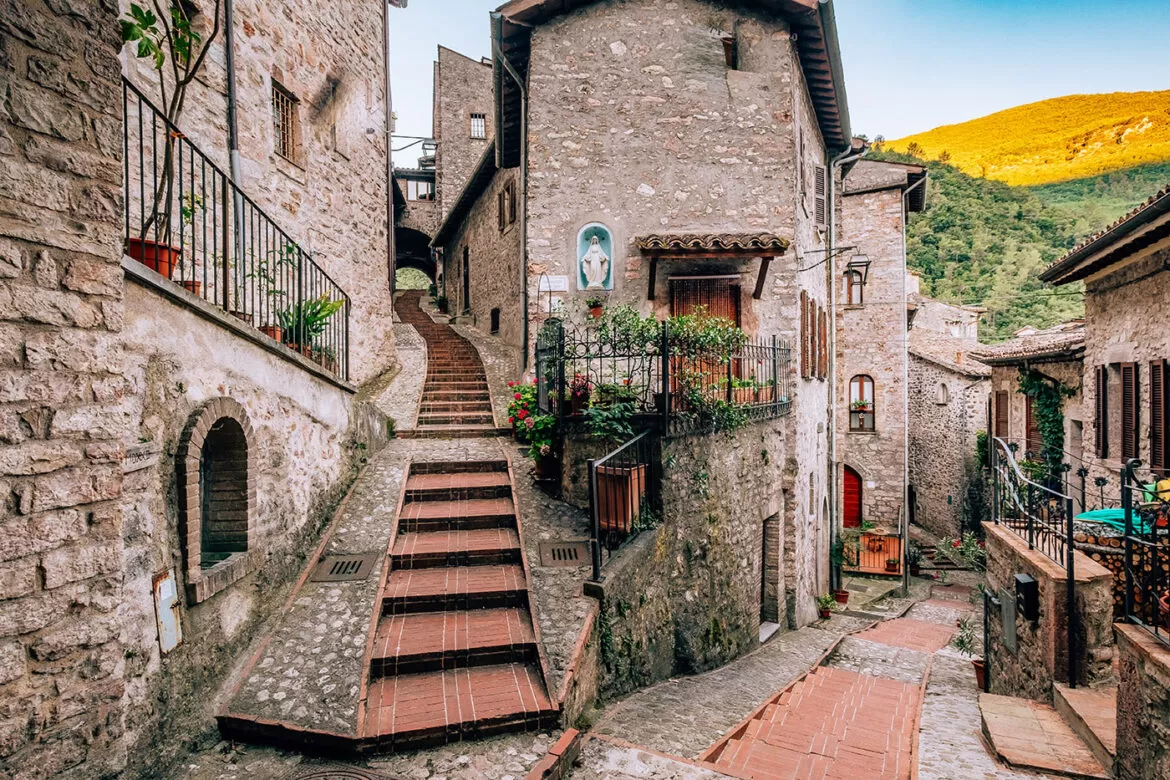
One thing’s for sure is it’s practically impossible to run out of things to do in Umbria. From exploring walled medieval hamlets to hiking in beautiful nature parks, it’s less about finding things to do than narrowing your list down!
So, where do you start in this magnificent Italian region? Don’t worry, I’ll share everything you need to know. In this comprehensive travel guide, I’ve gathered a bucket list of 36 of the best things to do in Umbria . There’s a good chance you won’t be able to fit them all into one trip, which is a great excuse to plan anotlher one.
To help you plan your Umbrian adventure, I’ve included a map of Umbria indicating all the places and activities mentioned in this guide. Make sure you save it in your Google account so you can easily access it during your trip.
Why you should visit Umbria
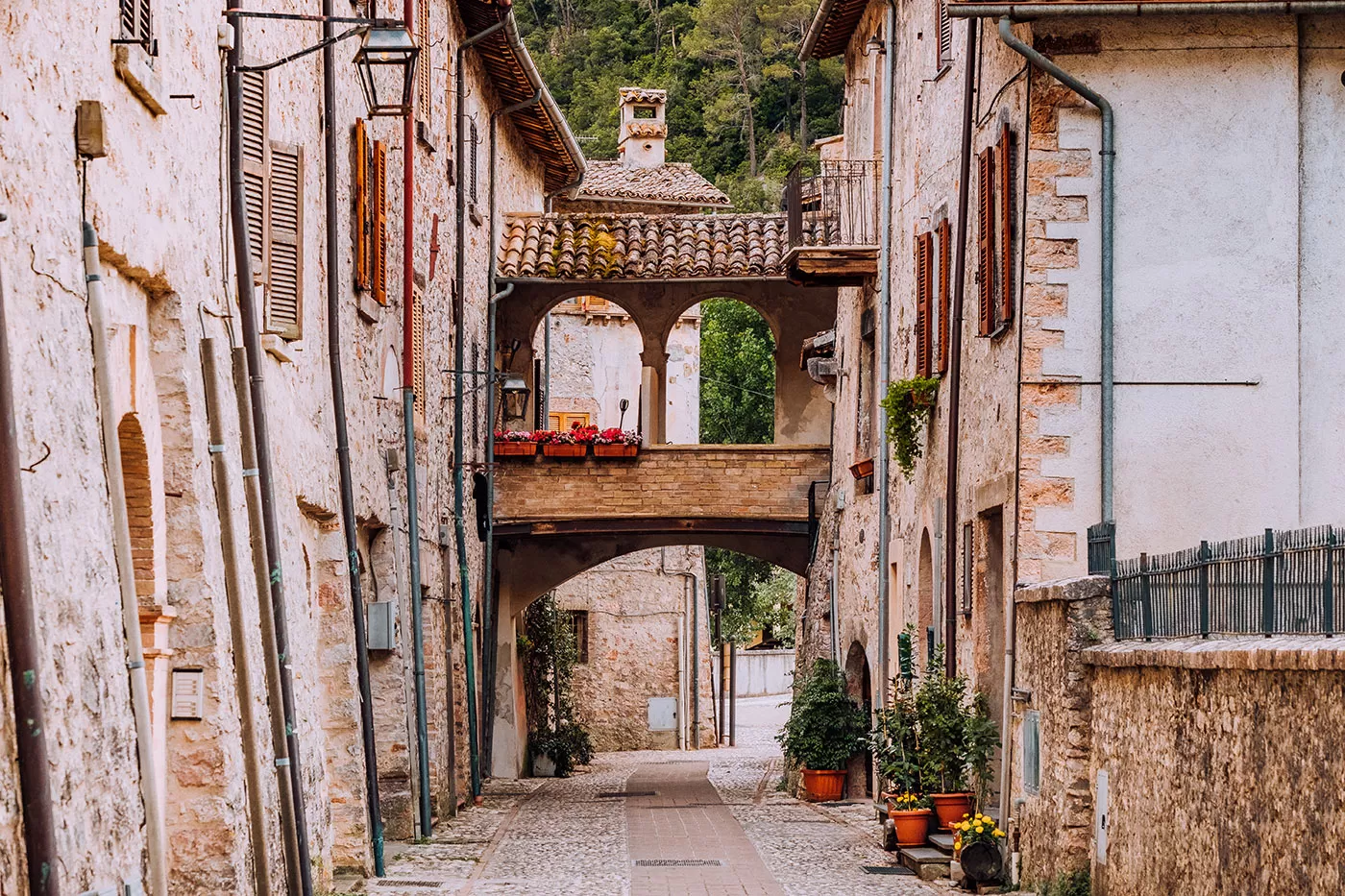
Across this corner of Italy, you’ll uncover exceptional natural beauty, fresco-clad churches, plates piled with cured meats, and a never-ending list of festivals. And the great thing is that, unlike its rockstar neighbour Tuscany, Umbria still maintains a wild, untouched feel, perfect for those who enjoy a slower, more laid-back pace.
How to visit Umbria and travel around
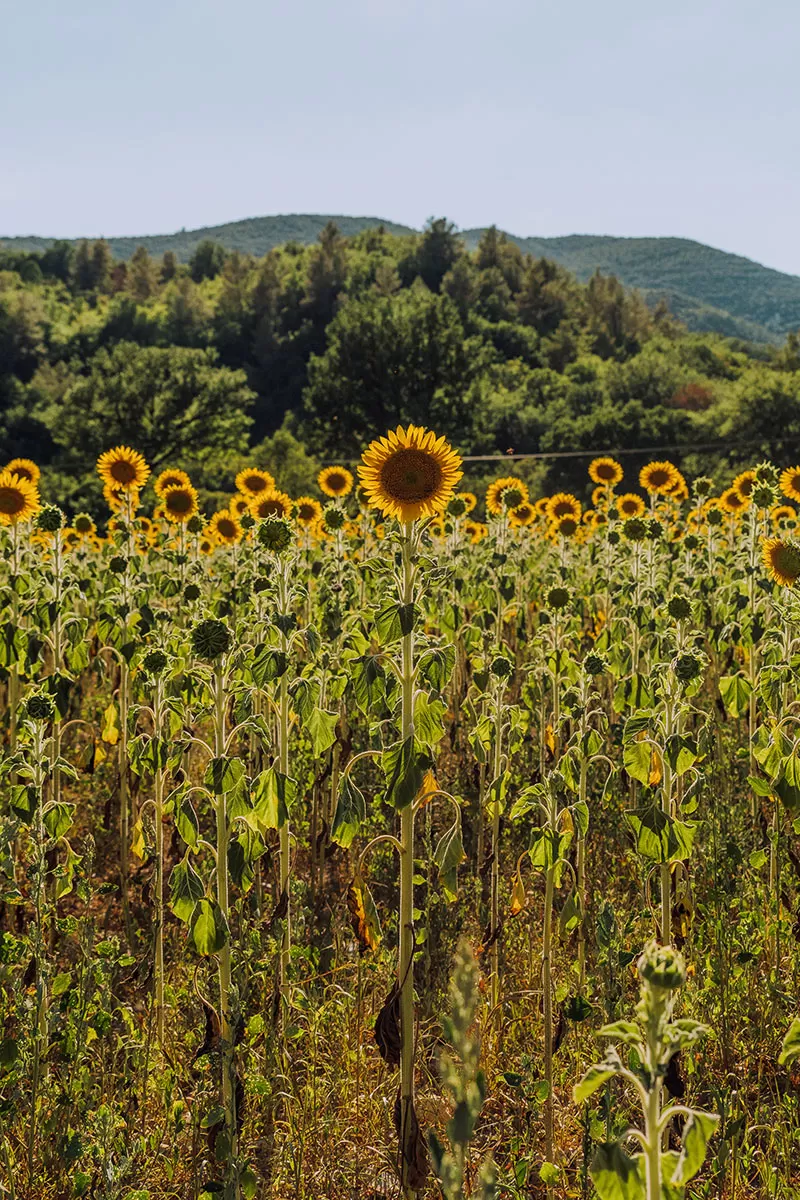
Fields of sunflowers dot the Umbrian landscape
Umbria is a relatively easy place to travel to and around. The San Francesco d’Assisi international airport in Perugia ensures connections with major European cities. Alternatively, you can fly into Rome or Florence and reach Umbria by train or with a rental car. Check availability and rent your car here.
The easiest way to explore the region is by car. This will allow you to make the most of your time there and give you the freedom to see all the best things to do in Umbria at your own pace. You can rent a car in Perugia ; from here, all key places in Umbria are within a 1-hour drive.
By public transport
Another way of travelling around the region is by public transport. There’s a good local bus network connecting the main towns and villages. Routes and timetables are available on the FS Busitalia website . Trains, too, are good options. The Frecciarossa high-speed line connects Umbria with major Italian cities. At the same time, regional trains ensure connections to all the main destinations within the region. Take a look at either the Trenitalia website or Trainline for more details and to book your journey.
You can purchase the UMBRIA.GO travel ticket which gives you unlimited trips throughout the Region. This includes urban and suburban buses, Minimetrò of Perugia, Trasimeno Lake ferry service, regional trains and the funicular in Orvieto. To get your travel pass, visit any Busitalia and Trenitalia ticket offices in Umbria or visit any of the authorized resellers here. ( Note: this page is in Italian. Click on the “ DOVE SI ACQUISTANO ” [WHERE TO BUY] tab for details)
By guided tour
Alternatively, if you’re based in any of the surrounding regions and short on time, you can join a guided day tour like this one from Rome which will ensure you see the highlights of Umbria without the fuss of organising it all yourself.
Map of Umbria
To help you plan your trip, here’s a map of Umbria that highlights everything listed in this article. You can also download it to your phone and take it with you.
Top things to do in Umbria
Umbria has so much to offer, but I’ve narrowed the list down to 36 of my favourites. You’ll find a good mix of the best natural, cultural, and historical attractions to be explored in Italy’s green region. So, here are the best things to do in Umbria that will help you make the most of the region.
1. Visit Perugia, the capital of Umbria
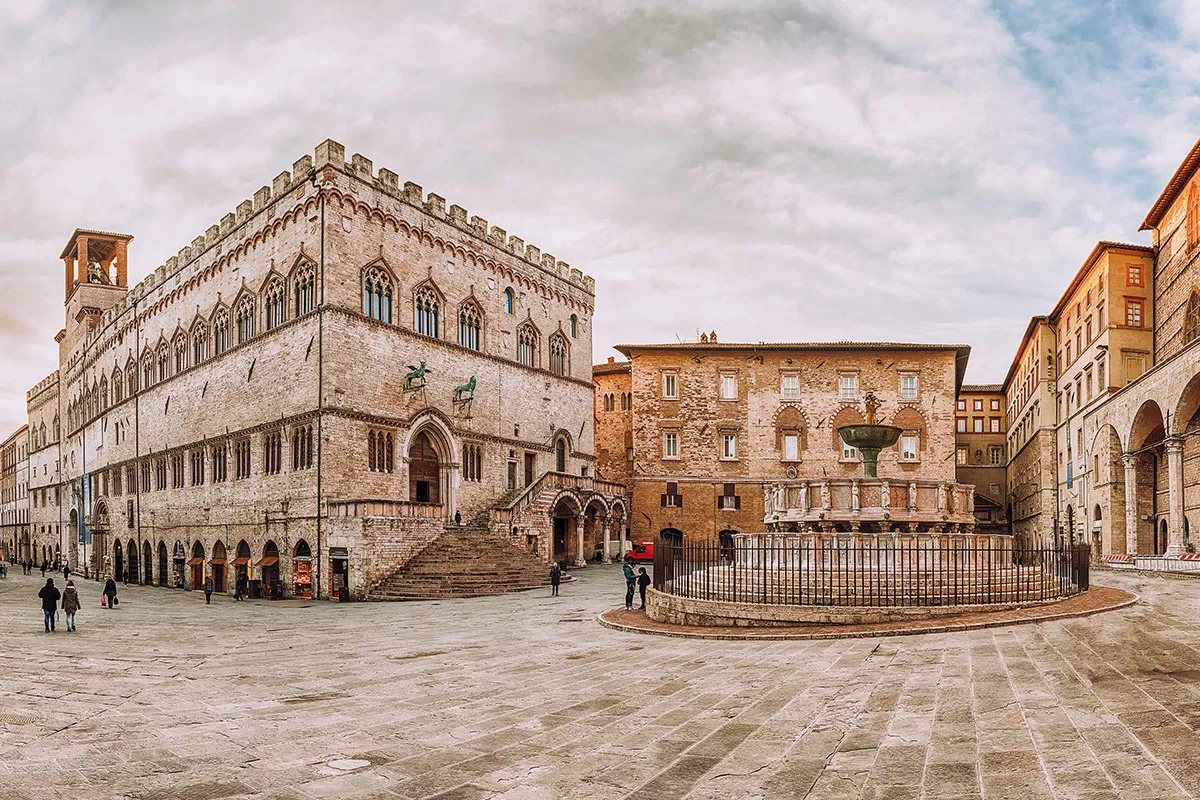
Piazza IV Novembre in Perugia
In the centre of Umbria, Perugia is the region’s main town. It boasts an impressive cultural history, with roots in its Etruscan past. The old town is packed with interesting sights, including the Palazzo dei Priori located in Piazza IV Novembre which hosts the prime art collection of Umbria’s National Gallery.
With one of Italy’s most prominent academic institutions and the first wine school in the world, the town has a cosmopolitan student population that makes it truly lively. Also, chocolate is an essential ingredient on local tables. The famous Perugina brand is based here and Eurochocolate , the biggest European festival dedicated to chocolate, takes place here every October.
Don’t miss: visit the Perugina Museum (Casa del Cioccolato Perugina), n ot just for the chocolate but to learn about the history of one of Italy’s beloved brands.
2. Discover Orvieto’s stunning cathedral
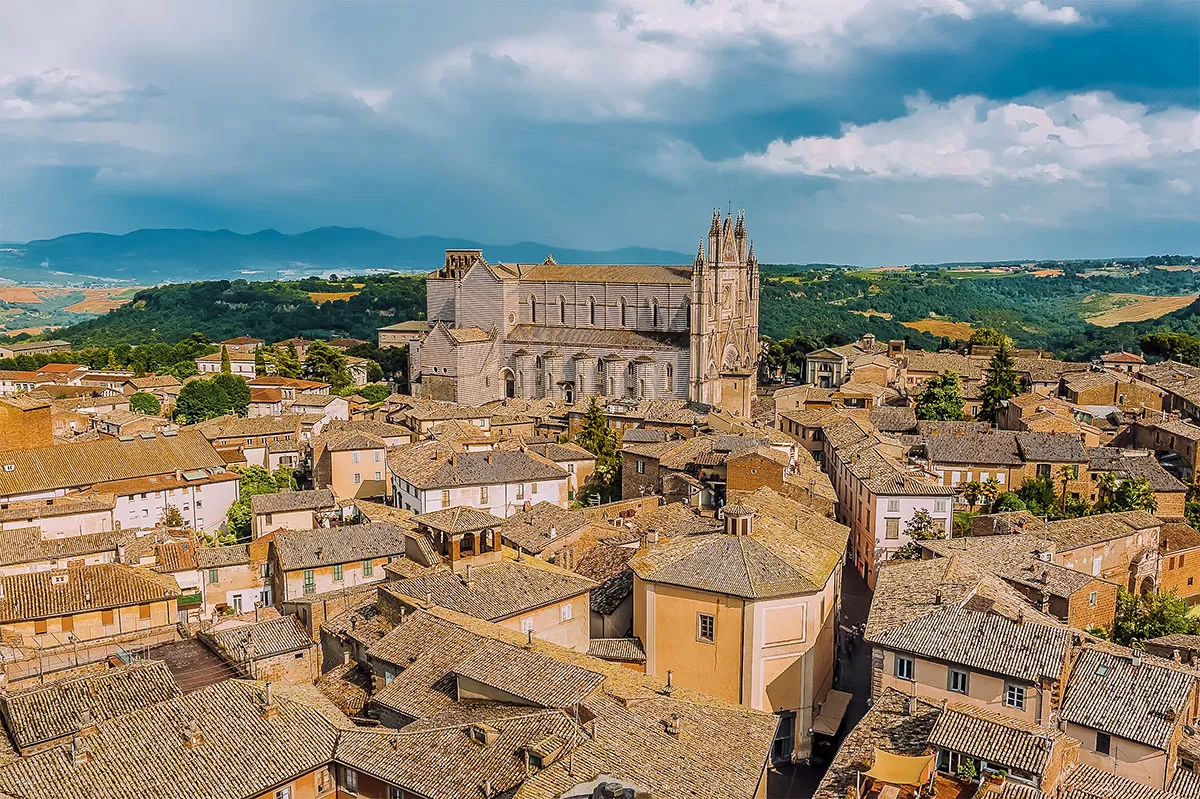
The town’s Gothic cathedral definitely calls attention to itself, adorning the main piazza with a grand display of spires, elaborate carvings, and stained glass, making it one of Italy’s most beautiful churches. Plus, its mosaicked facade is a visual treat.
Don’t miss: St Patrick’s Well (Pozzo di San Patrizio) is a unique piece of Renaissance engineering 200 feet deep and 42 feet wide, it was built in the 16th century to ensure the water supply was protected if the town was besieged. You can climb into it and admire the ingenious helix system of steps designed to make traffic flow efficiently. The round trip is 496 steps.
3. See Lake Trasimeno, the “sea” of Umbria
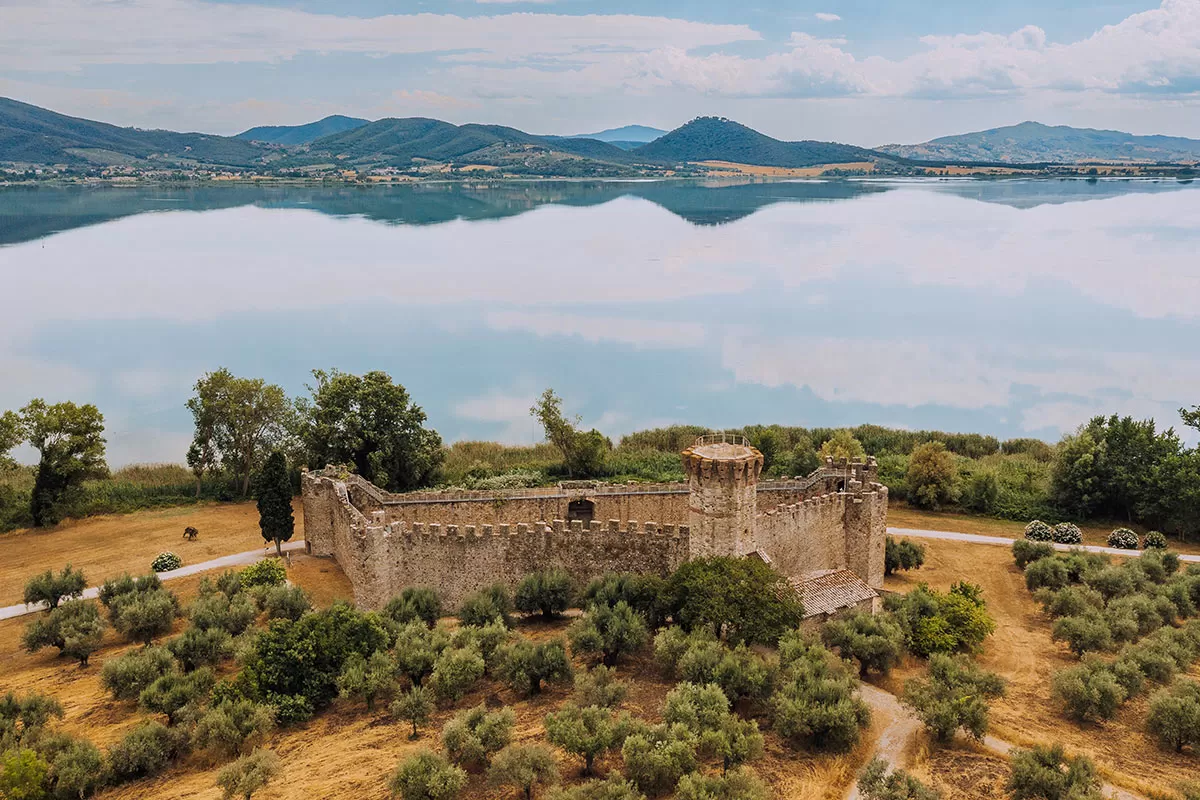
Isola Polvese Castello
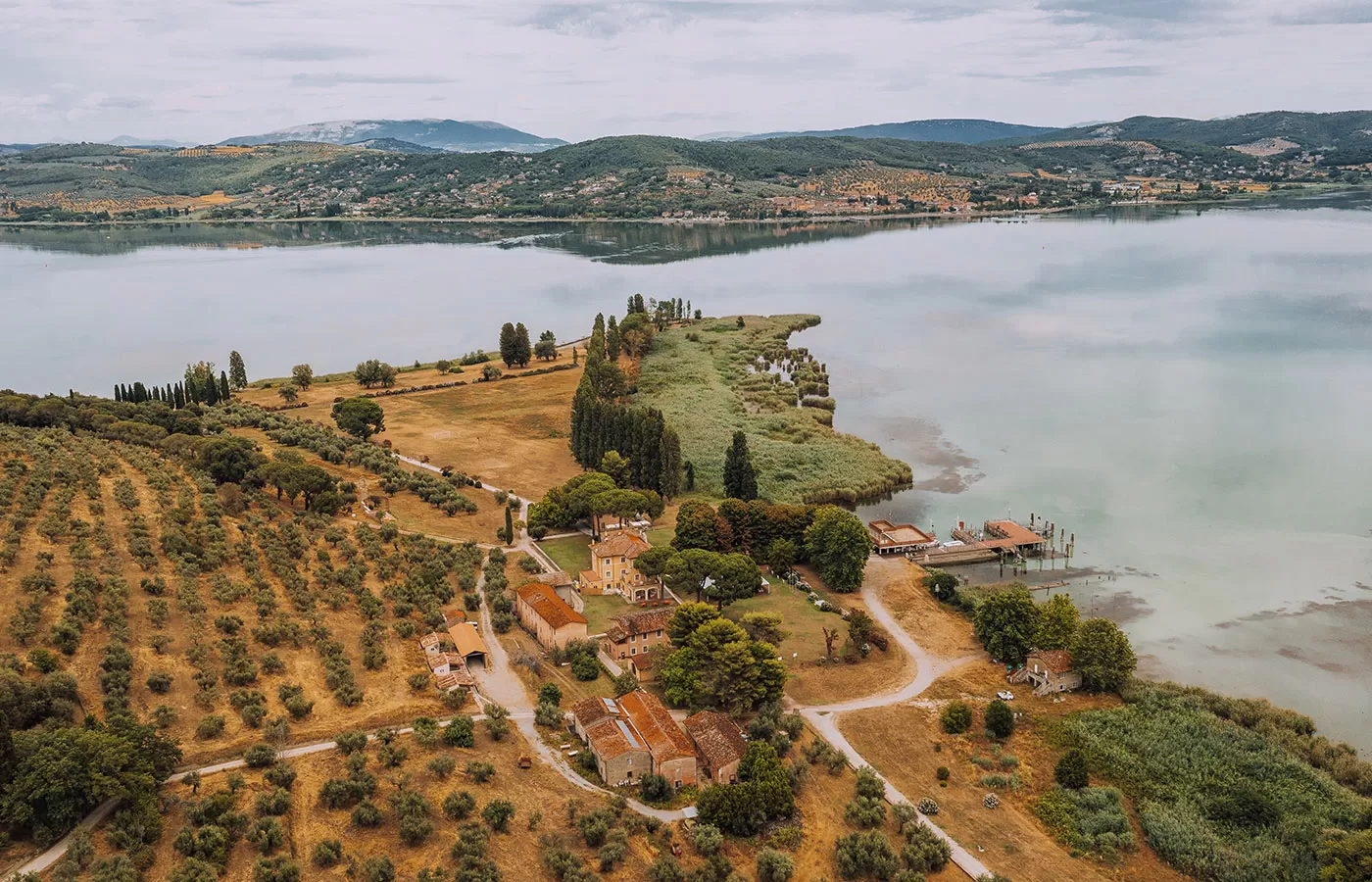
Today, all is calm and blissful here. The area was made a regional park in 1995 and is now the habitat of many fish and bird species. All around the lake, olive groves, sunflower fields and vineyards frame quaint medieval towns such as Passignano and Castiglione del Lago, which are well worth a visit.
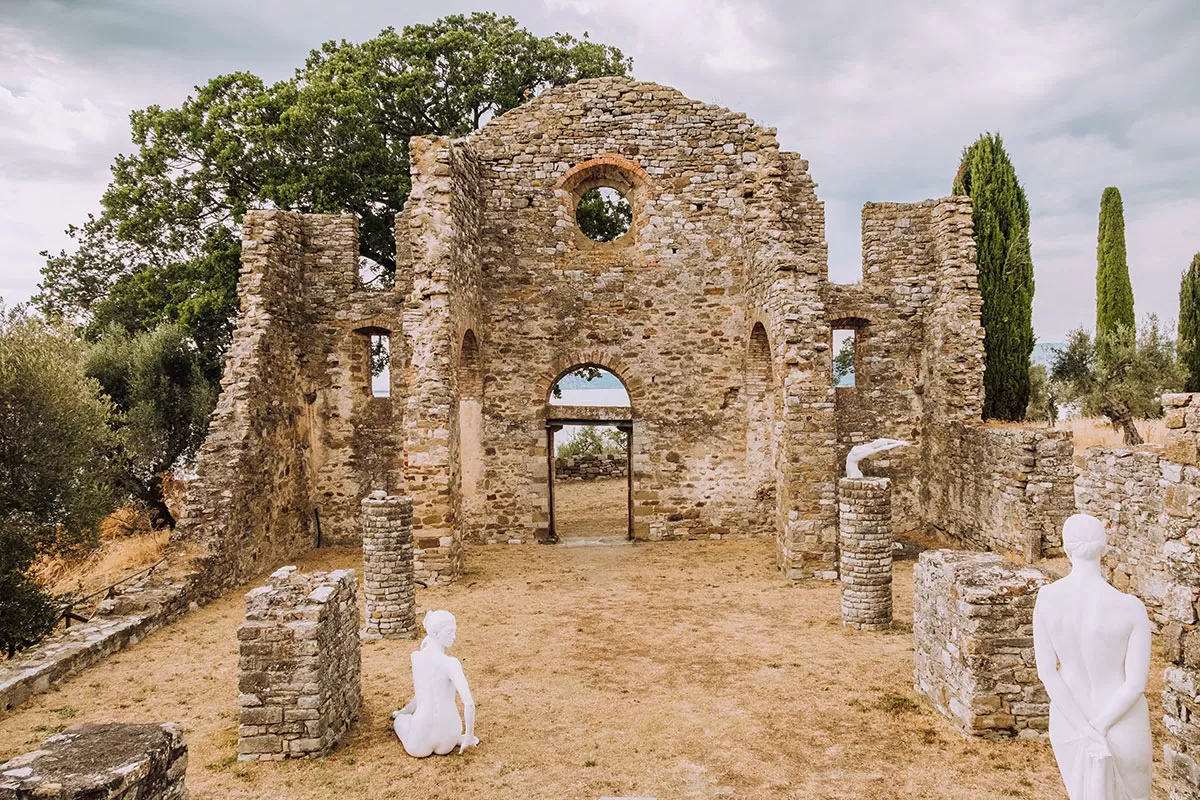
Monastero di San Secondo
Take a boat from the medieval village of Passignano site of the 14th-century Ponente tower, to reach Maggiore Island (which is still inhabited). This magnificent place with a fishing village dating back to the 15th century is also the location of the Romanesque church of San Salvatore (12th century), the church of San Michele Arcangelo (14th century) and Villa Isabella of the Marquis of Guglielmi.
Maggiore Island can also be reached from Tuoro sul Trasimeno, an ancient Etruscan city that became well-known as the battleground for the decisive stages of the battle between Hannibal and Caio Flaminio. Renaissance Palazzo Capra was erected precisely on the tomb of the Roman commander.
The largest island on the lake (there are three) is Polvese (from ‘ pol vento ‘, meaning ‘covered by wind’), which is not inhabited and is now a public park. It is also the location of the S. Secondo monastery, the Church of San Giuliano and a 14th-Century castle which was recently restored.
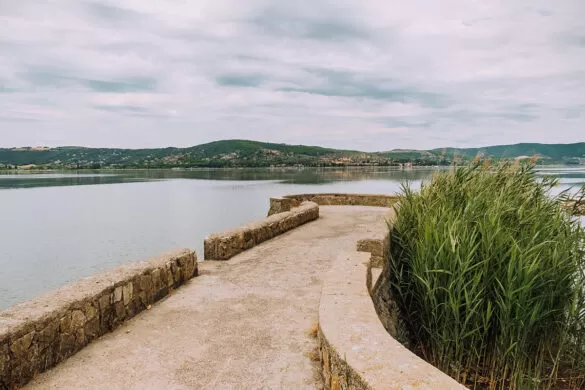
San Giuliano Church
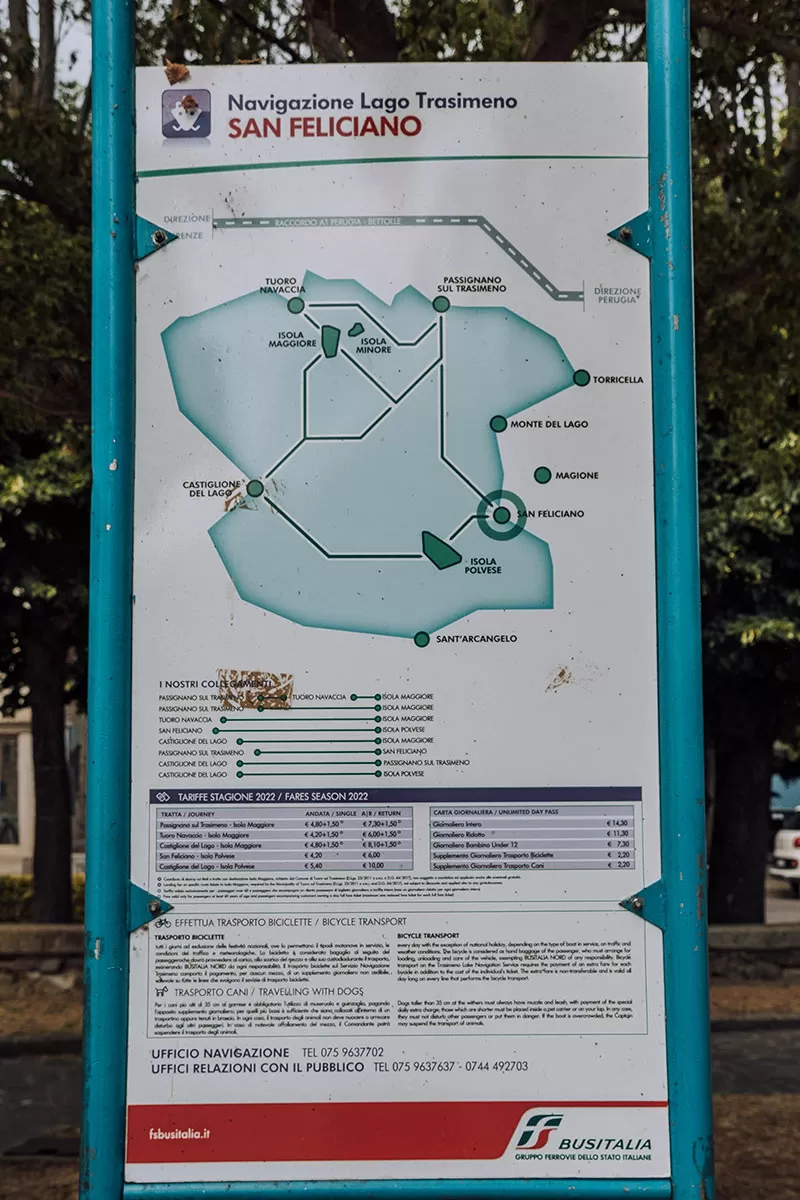
Ferry around Lake Trasimeno
Don’t miss: hop on a ferry and explore two of the beautiful islands dotting the lake. Check the ferry timetable here to plan your visit.
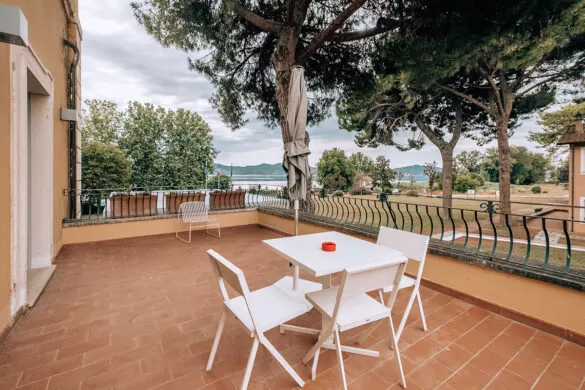
Extend your stay and spend a night or two at Villa Polvese Resort. Each suite is elegantly designed and furnished and comes with a cosy king-sized bed. Bathrooms are spacious and luminous, with hand-decorated majolica and a wide shower cabin. After waking up to lake-side views, enjoy a continental breakfast on the sun terrace before spending your day exploring the island on foot or bike. In the evening, tuck in for a delicious meal at the on-site restaurant, Dolce Agogia, for an opportunity to taste the flavours of the Lake. Check availability and book your stay here.
4. Experience traditional net fishing with a local fisherman
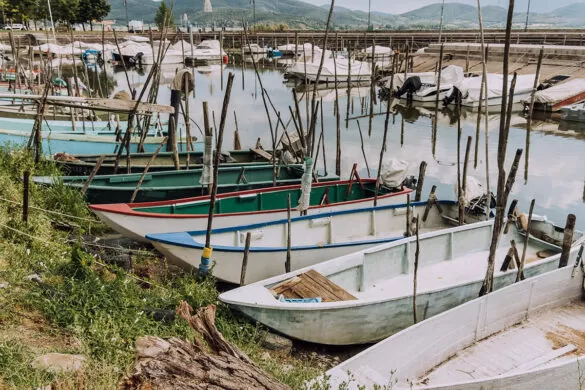
For a fascinating insight into Lake Trasimeno’s fishing culture and history, head to the village of San Feliciano, home of the Museo della Pesca sul Lago Trasimeno and join the fishermen of the Trasimeno Fishermen Cooperative (Cooperativa Pescatori del Trasimeno) for a memorable fishing adventure at dawn.
Here there are just 28 fisherman who engage in passive fishing, which has changed in 1,000 years. One of them, the charismatic Aurelio Cocchini (pictured below in blue), has been fishing on Lake Trasimeno since 1980. Aurelio explained to me, they simply lay down the nets and allow the fish to be caught without enticing them or rounding them up. This means each catch varies in quantity. They are then cleaned and filleteèd by hand. This is because the fish vary in size so industrial machines can’t be used even if they wanted to. This also allows for less waste, all supporting their ethos for the sustainability of the lake.
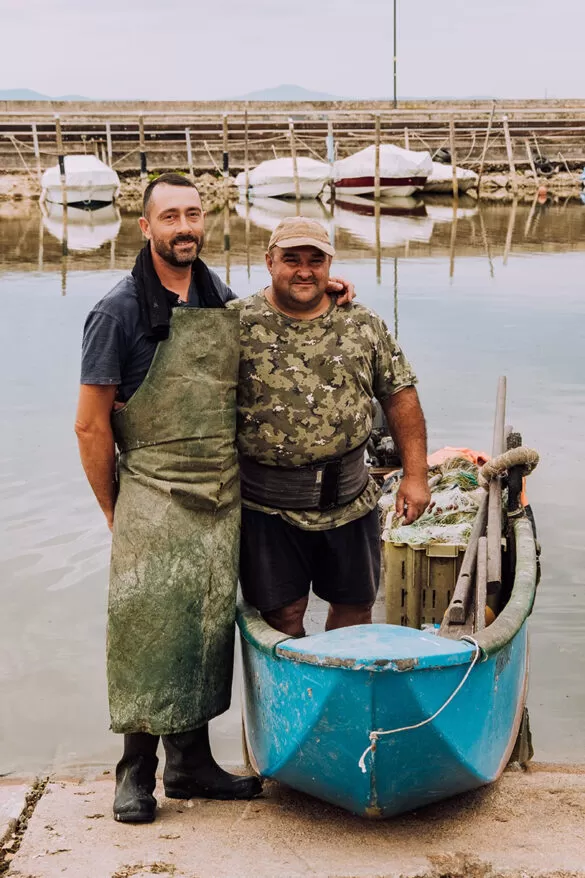
Aboard a traditional wooden boat, you’ll learn everything about lake fish and fishing techniques based exclusively on handmade nets called giacchi . The beautiful scenery around the lake provides the perfect backdrop to the experience.
Don’t miss: If you are in San Feliciano at the end of July, don’t miss the Sagra del Giacchio (Giacchio Festival) . It’s a popular event where you can enjoy delicious lake fish-based dishes.
5. See Polvese Fortress on Polvese Island Nature Reserve
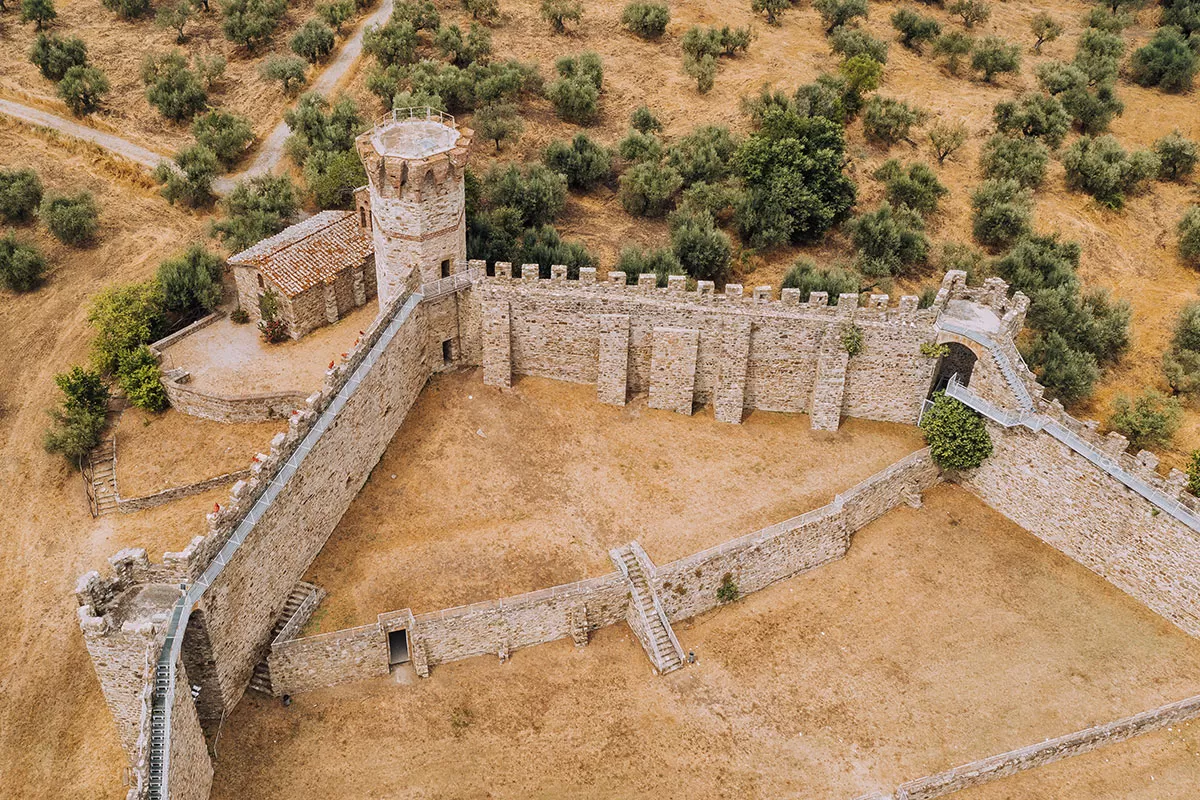
Hop on a ferry from San Feliciano and visit Polvese, the largest of the three islands dotting the placid waters of Lake Trasimeno. In just 10 minutes, you’ll feel like you’re in a green paradise surrounded by wildlife, lush oak woodlands, and millenary olive groves. Check the ferry timetable here to plan your visit.
The island was first inhabited by the Romans, as evident from the remains of opus reticulatum in the small church of San Giuliano. It’s guarded by a big 15th-century fortress, whose perimeter walls are all that’s left. Following the path to the top of the hill, you’ll also find the ruins of San Secondo, an ancient monastery dating from the 11th century.
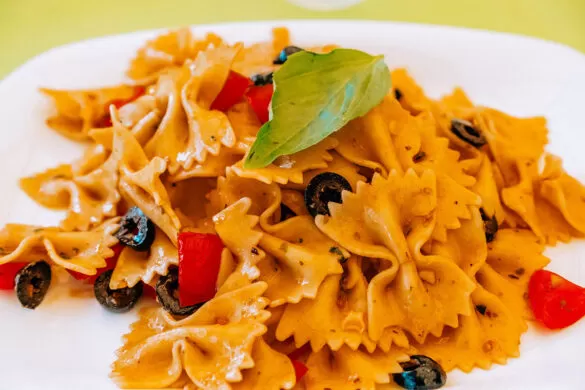
Don’t miss: Enjoy a unique dining experience at Impact 0 Beach Bar, the first place on the lake that lives off the land’s energy. Raw food is on the menu to reduce CO2 emissions, and the sound system runs entirely on solar power. Ferries run daily and depart every 40 minutes. Free parking is available at San Feliciano.
6. Explore the pretty hamlet of Monte del Lago
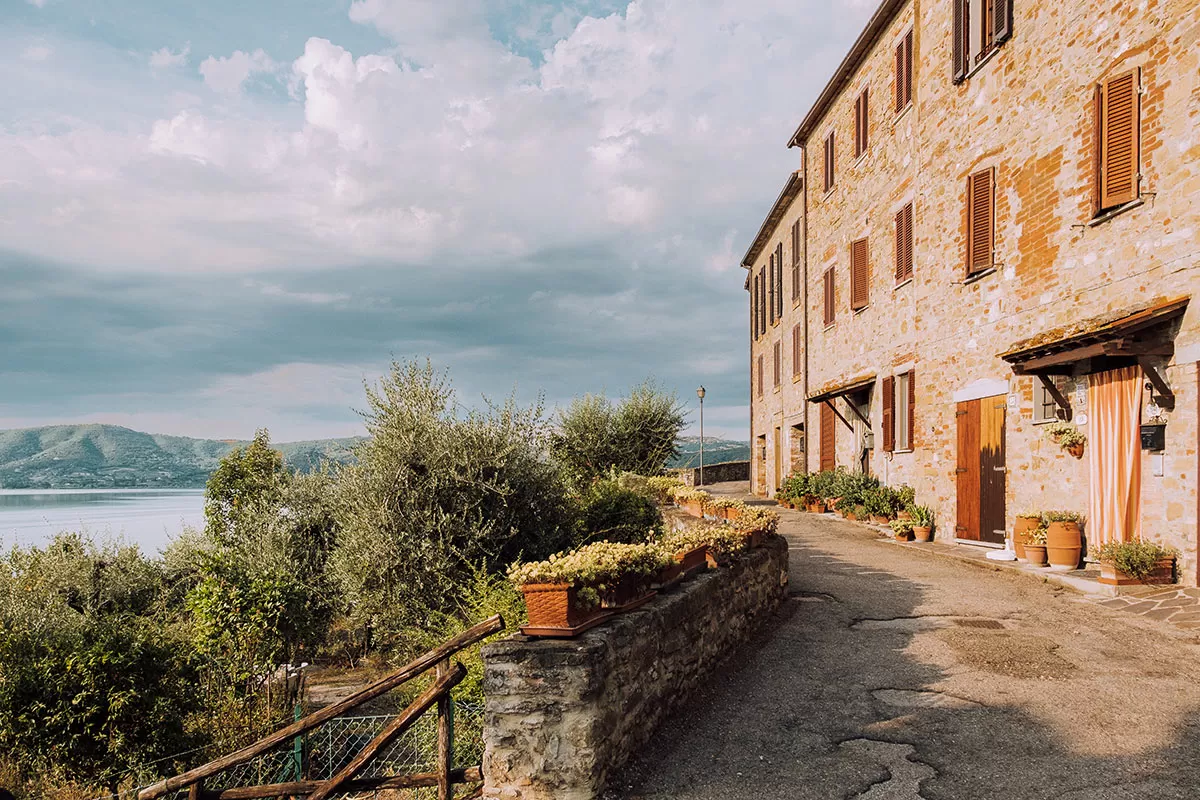
Poem by Vittoria Aganoor Pompilj
There are a lot of stories to tell for such a small center. Monte del Lago is where Bartolomeo Borghi wrote the first Italian geographical atlas, and where the love story of Vittoria Aganoor and Guido Pompilj took a tragic turn; after Vittoria died of cancer, Guido, very dramatically killed himself, just hours after her death. The village was also a favourite destination of composer Giacomo Puccini, who often stayed at Villa Palombaro.
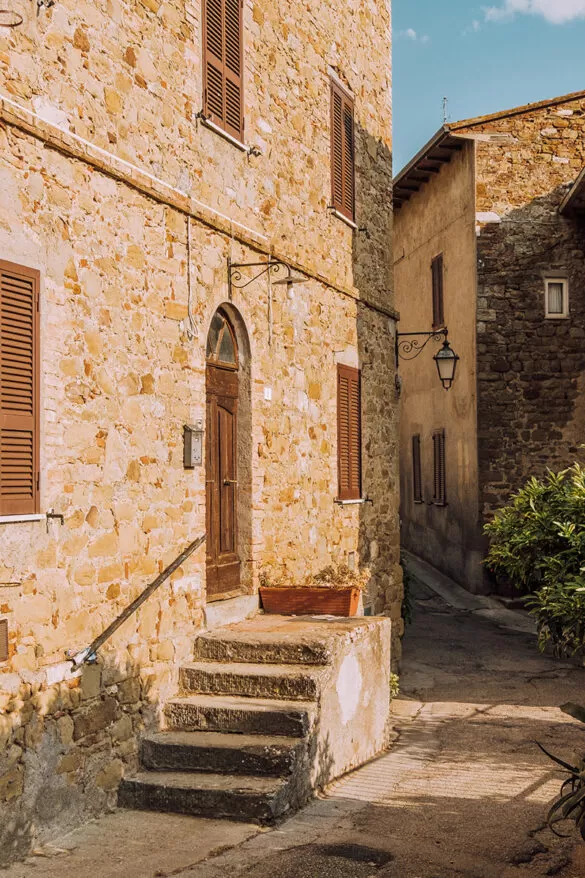
Don’t miss: the Church of Sant’Andrea is worth a look if you find it open. It boasts valuable frescoes dating from the 15th century and attributed to an artist from Perugia.
7. Sample local wine at the Decugnano dei Barbi winery
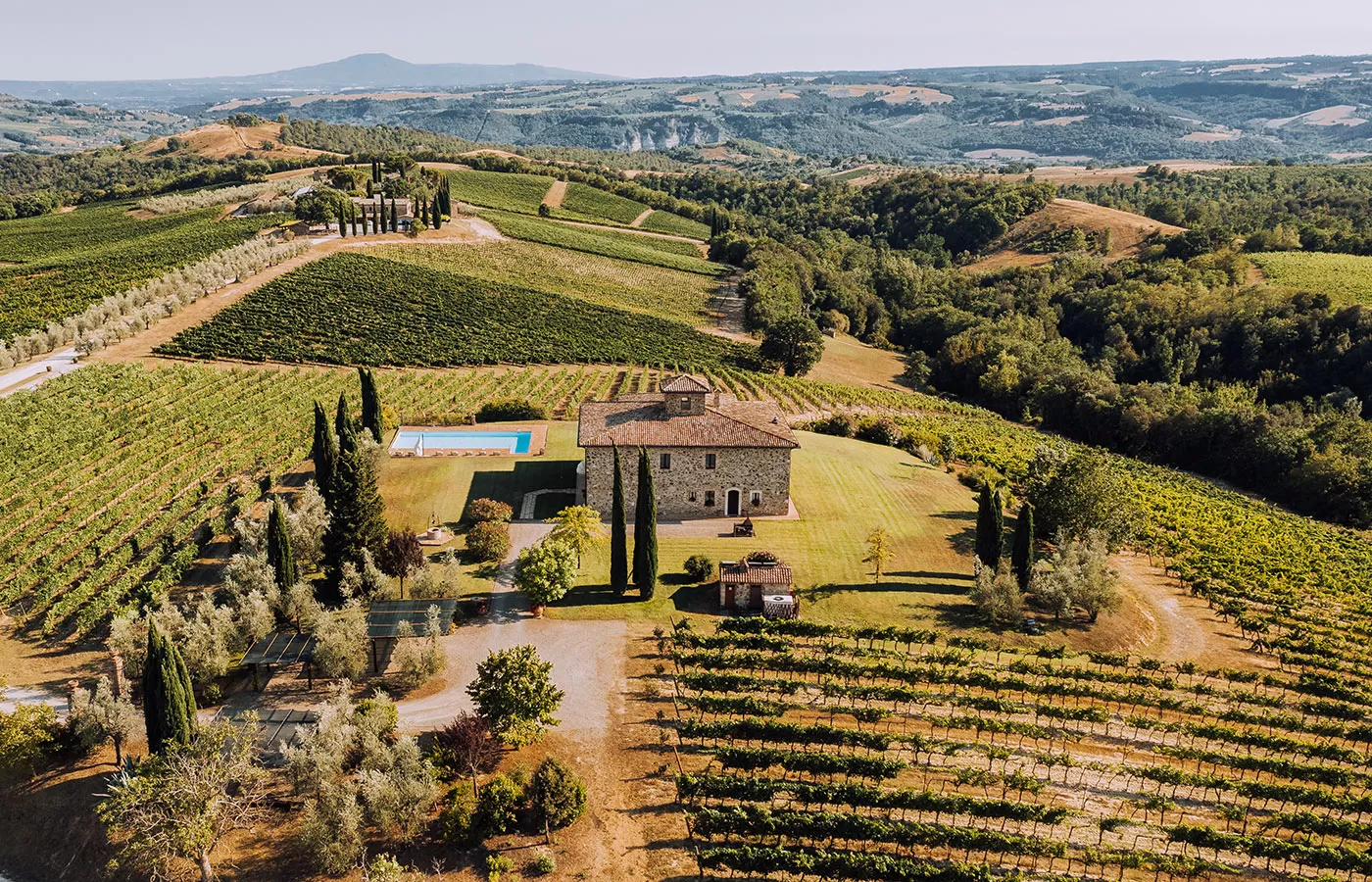
Decugnano is the name of the hill on which it’s located while dei barbi is the family name of the owner. The family are the winemakers who were the first to introduce sparkling wines to Umbria back in 1978. Today, they make elegant blends from a terroir that was initially an ocean floor millions of years ago and give the wine a distinctive character.
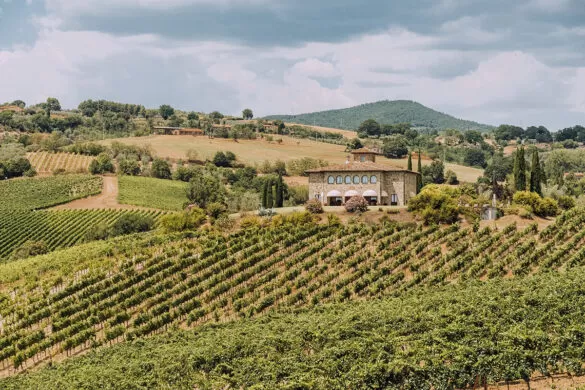
During your visit be guided by Maurizio who will take you on a journey as you savour their rose, white and red wines. He also explains the Etruscans who lived in the area created 18 caves which were most likely tombs. These were later used to store wine which slowed the second fermentation, creating something closer to a beer or cider, it was much sweeter and this sweet taste is a characteristic in Umbrian wines.
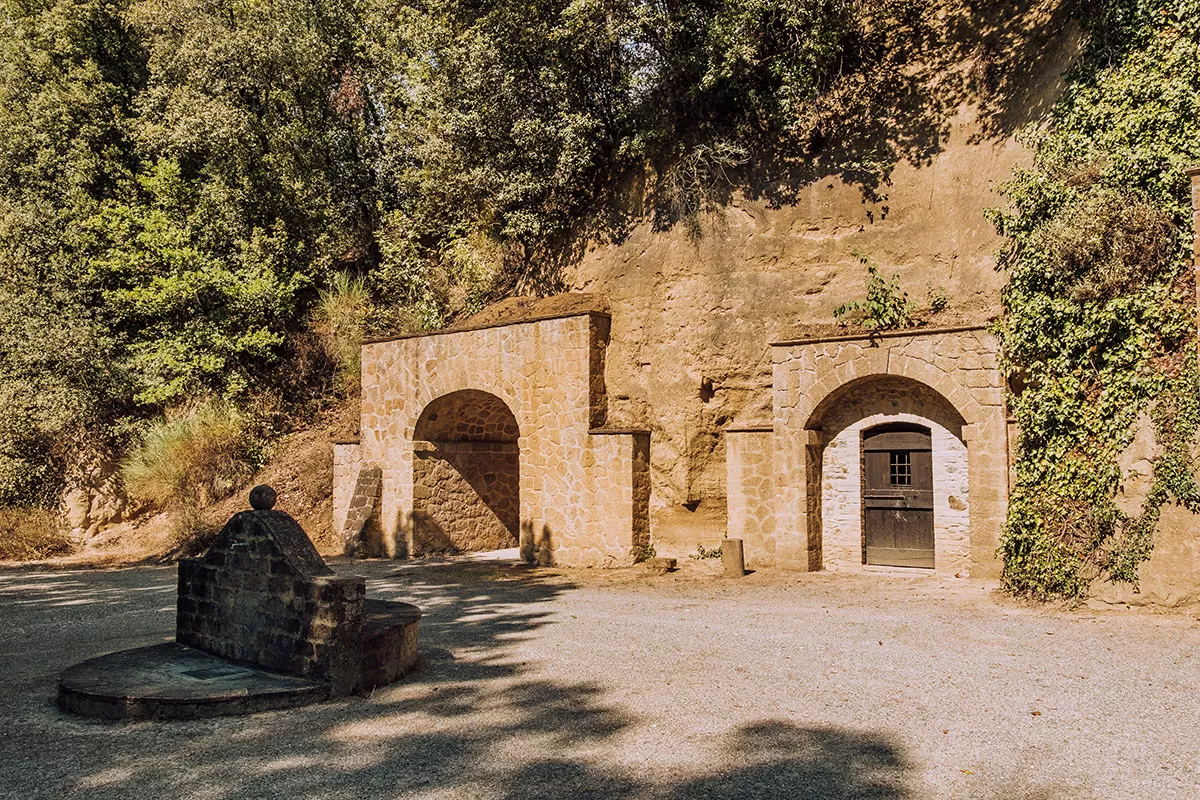
Etruscan caves
Since this area was once on a sea bed some 3.5 million years ago, when you visit the repurposed caves, you can actually spot sea shells in the layers of the walls as the sea bed rose and rose throughout the Millenia.
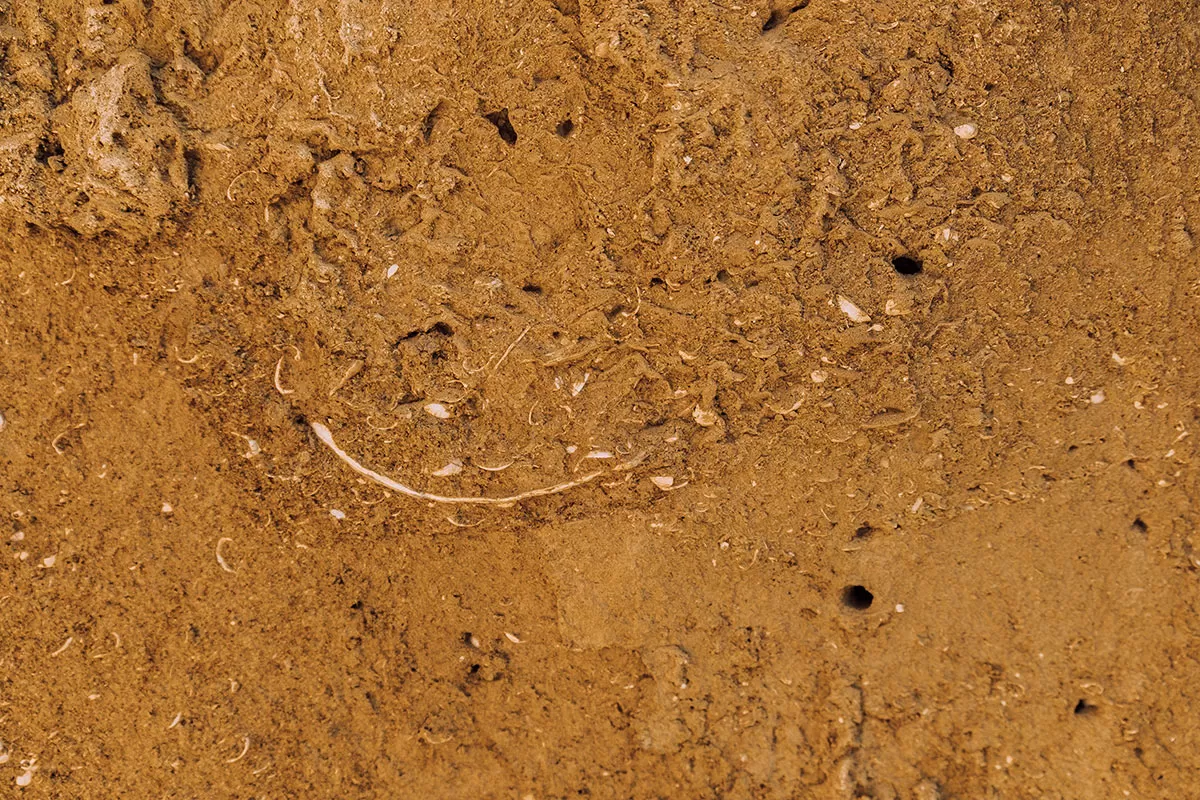
Spot the sea shells in the walls
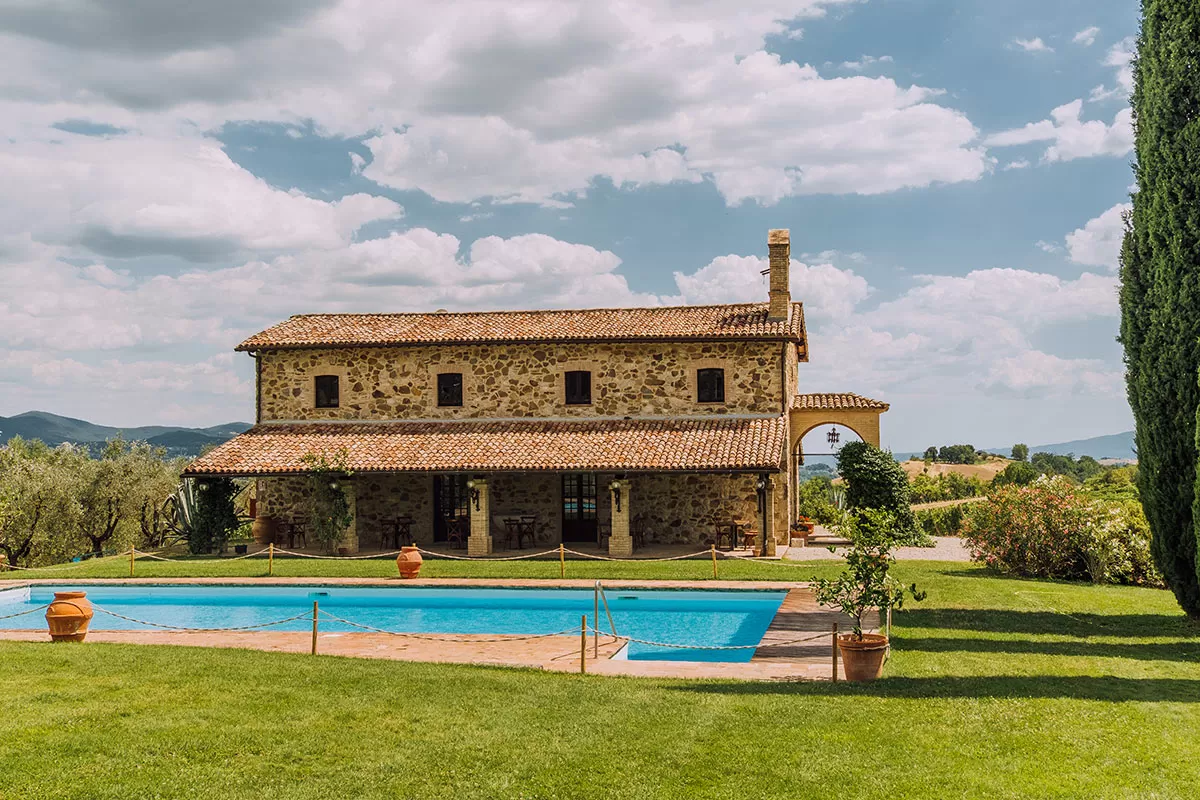
For more information and to book a tour, visit: decugnanodeibarbi.com
8. Visit an olive oil mill
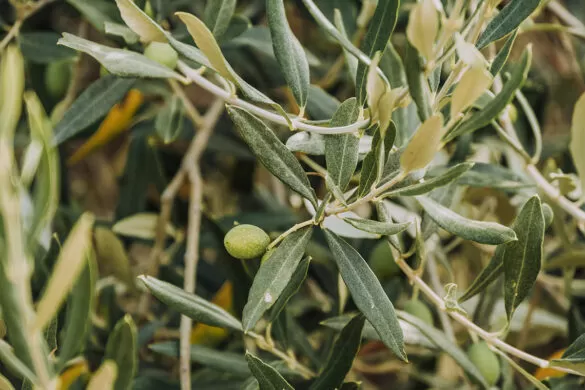
What would Italian cuisine be without olive oil? And since the one produced in Umbria is appreciated worldwide for its quality and texture, visiting a local oil factory is one of the best things to do while touring the region.
The best place to learn about Umbria’s “green gold” is Frantoio Fattoria Luca Palombaro , an olive mill and farm that’s been producing high-quality extra-virgin olive oil from its estate in Monte del Lago for almost a century. The whole process is handled personally by the family, who only use olives grown on their property. The Fattoria has approximately 12,000 olive trees that reach across 200 hectares of these splendid hills that surround Lake Trasimeno in the heart of Umbria.
They produce Trasimeno DOP (Protected Designation of Origin) extra virgin olive oil, and dolce agogia which is only produced here. It’s dolce (meaning, sweet) which means it’s perfect to consume with fish dishes over meat.
Don’t miss: After the mouthwatering olive oil and wine tasting, visit the ziraia , a room filled with stone mill-wheels, antique presses, and century-old oil jars all representing Italian olive oil made according to tradition.
9. Visit the Olive Oil Museum in Torgiano
To learn about local olive oil in more detail, book a visit to the Olive Tree and Olive Oil Museum housed in an old olive oil mill in the village of Torgiano. Using archaeological finds, books, and other materials, it retraces the history of the olive tree and olive oil.
The exhibit covers the mythological origins of this plant, its production, diffusion, and different uses. There is also an extensive collection of oil lamps, with some dating from pre-Roman times, and a section dedicated to the use of oil in traditions and folklore.
Don’t miss: one of the top pieces on display is an Attic alabastron from the 5th century BC decorated with a beautiful red pattern. For more information visit: muvit.it/museodellolio
10. Enjoy old-school local cuisine at Relais La Fattoria in Castel Rigione
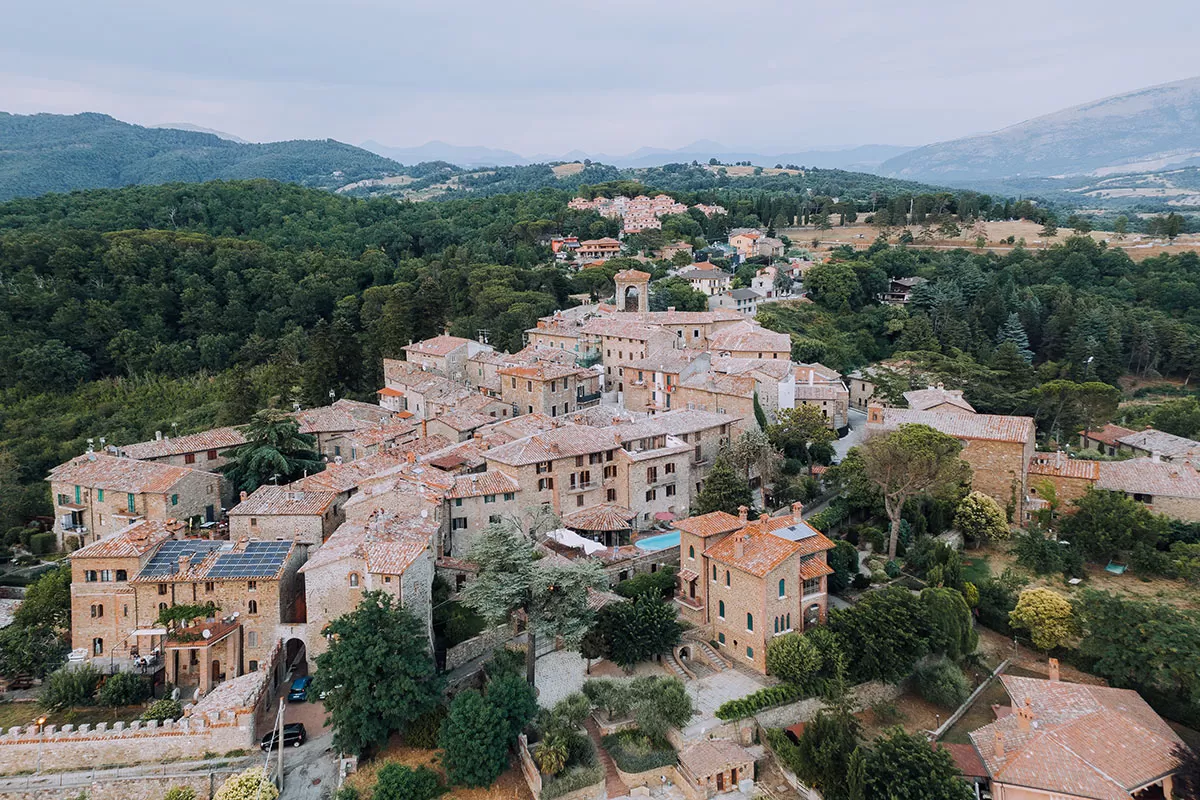
Castel Rigione at sunset
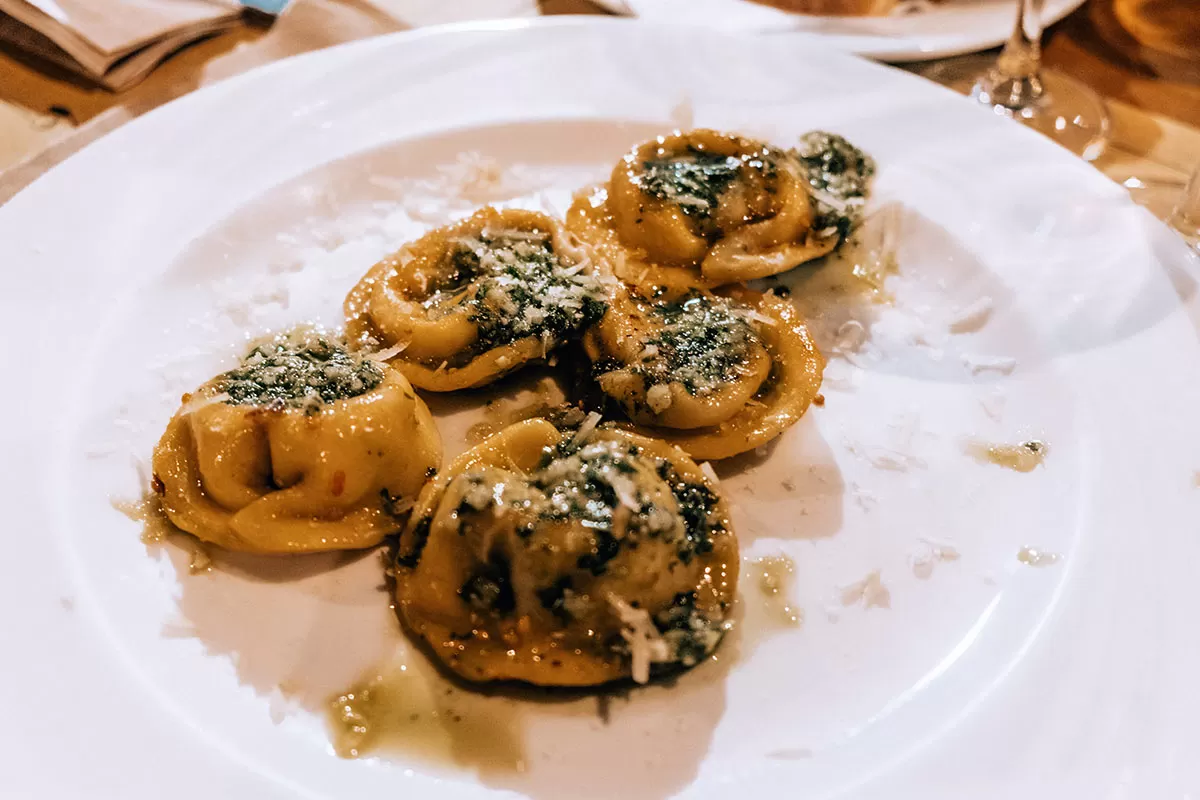
Relais La Fattoria is the kind of place that evokes nostalgia for the past. It’s located in the hilltop village of Castel Rigone, on the remains of an ancient stronghold that once guarded the entire valley, and with gorgeous views of Lake Trasimeno. Its restaurant, evocatively called “Da Lidia, the kitchen of the past”, serves traditional staples of Umbrian cuisine made according to tradition. On the menu, you’ll find delicacies like tagliatelle with Umbrian ragout, lamb cooked in Rubesco wine, and Norcia-style fusilli pasta.
Don’t miss: the most indulgent treat on the menu is the Perugina chocolate salami, a true delight for sweet-toothed guests.
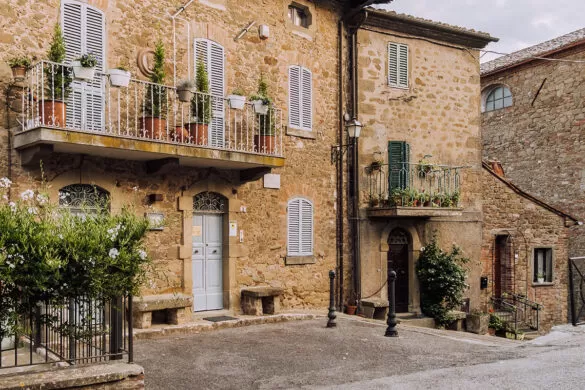
11. Journey to the Middle Ages in Bevagna
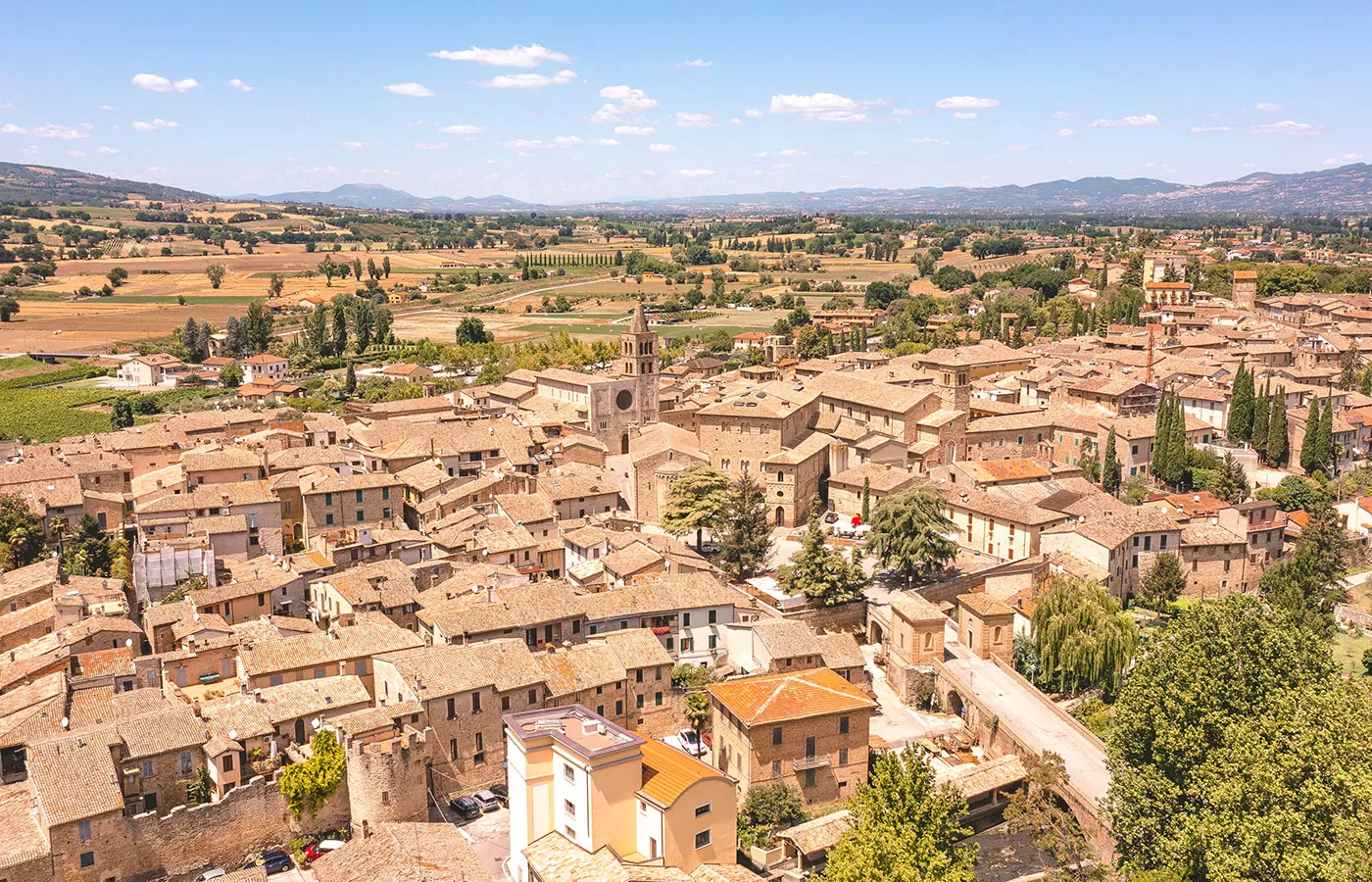
Chiesa di San Michele Arcangelo
Bevagna is one of the best towns to visit in Umbria for its Medieval character and ancient Roman roots. There are beautiful stone buildings, atmospheric alleys, and ancient monuments revealing hundreds of years of history – including a mosaic floor from a Roman public bath dating from the first century AD during the time of Emperor Hadrian.
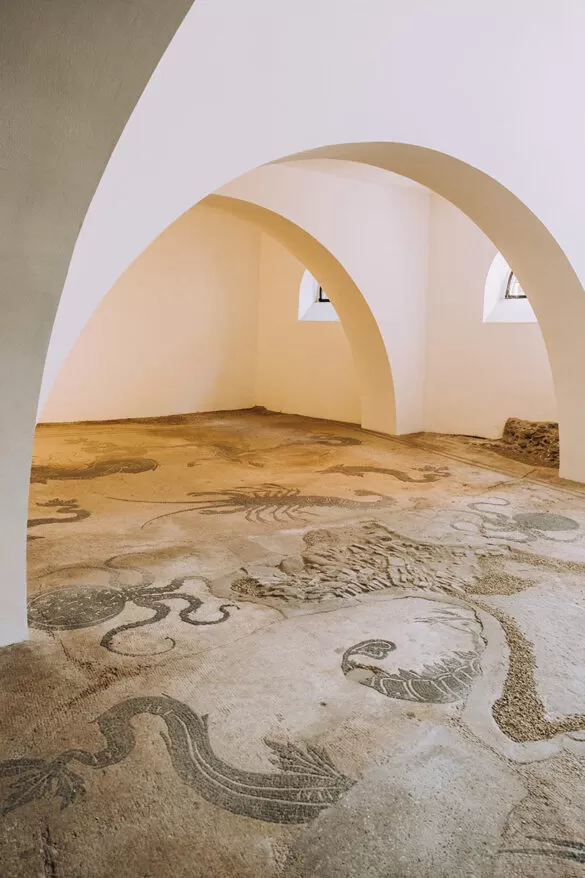
Monastero Delle Agostiniane Di S. Margherita
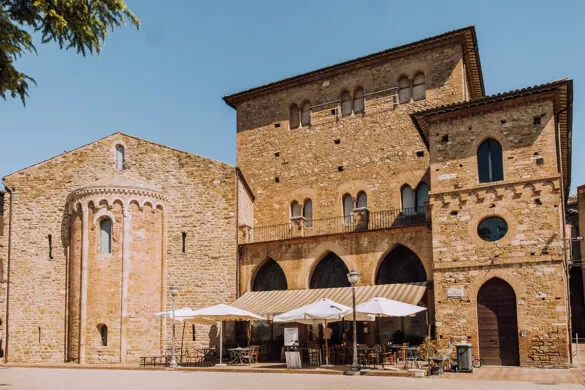
In June, the village celebrates its old crafts such as hemp, money, silk and candle production with the Mercato delle Gaite , a unique festival that takes visitors on a journey into medieval daily life through the reconstruction of workshops and locals dressed in period customs.
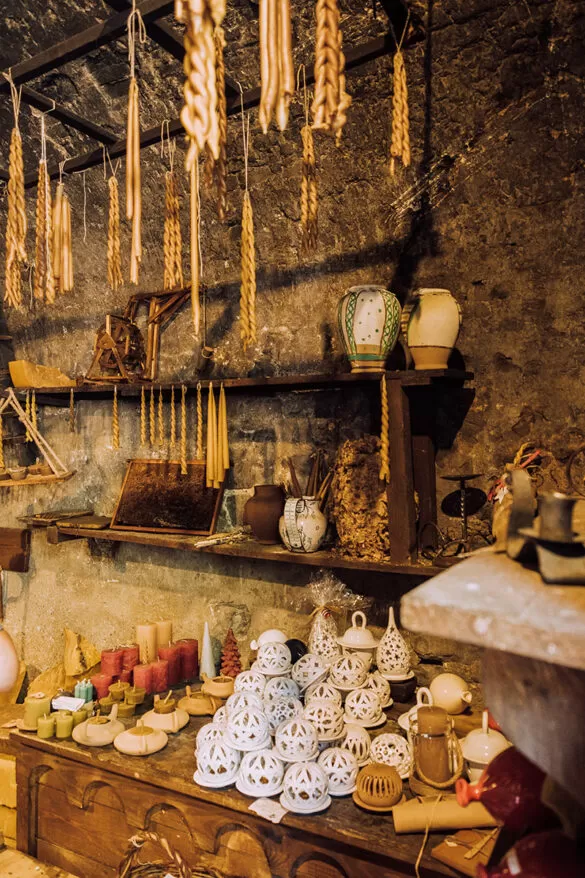
Don’t miss: treat yourself to a delicious plate of stringozzi pasta with artichokes, pork jowl, and pecorino cheese at Le Barbatelle , a wine bar in the centre of Bevagna specialised in seasonal dishes paired with natural wines.
12. Visit Scheggino and go truffle hunting
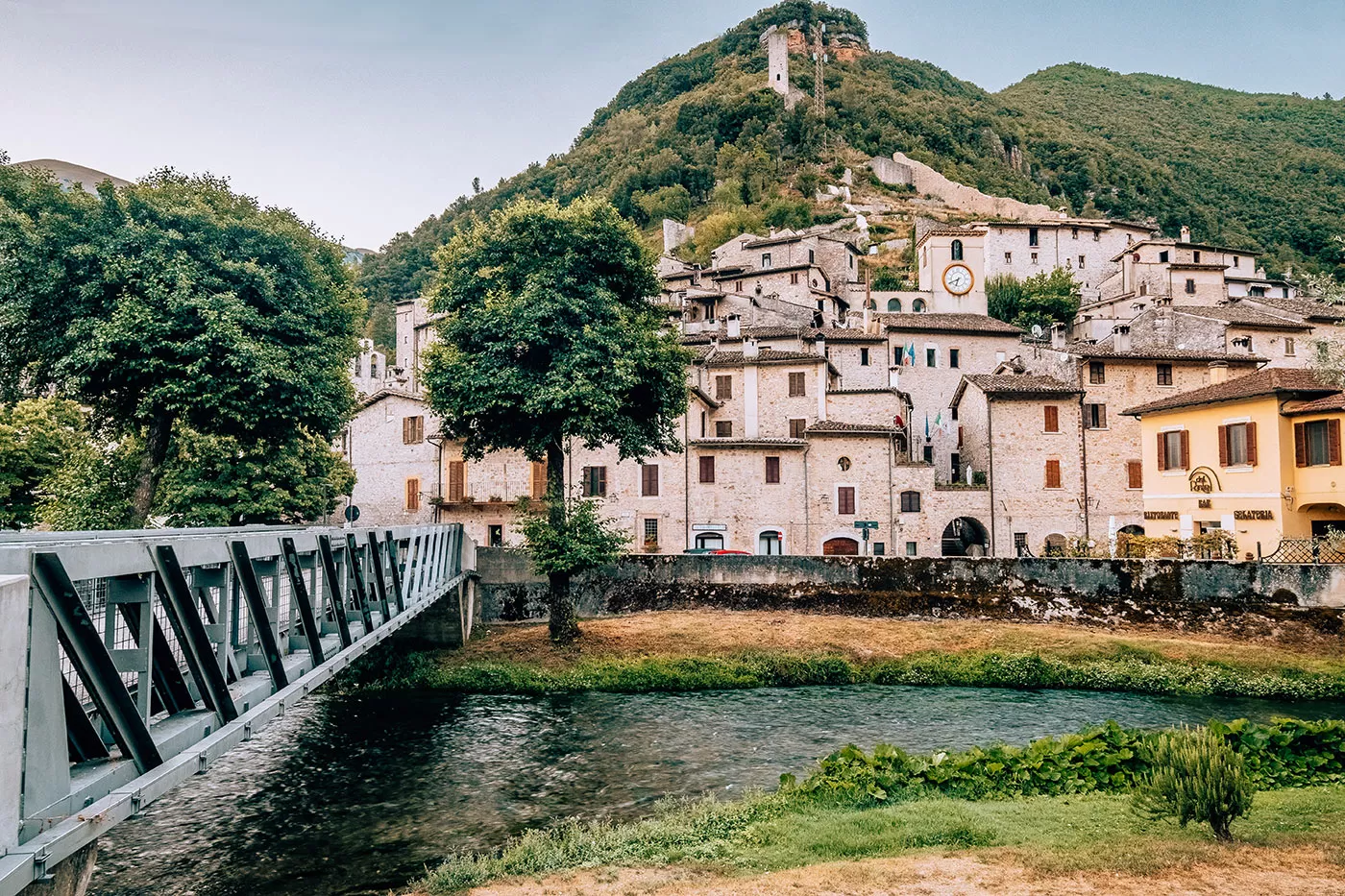
The old town is a little jewel of stone houses and colourful alleys. A steep path leads to an ancient fortress that dominates the village from above. A top sight in Scheggino is the 12th-century Church of San Nicolò, which has frescoes by Spanish painter Giovanni di Pietro, who trained under Perugino.
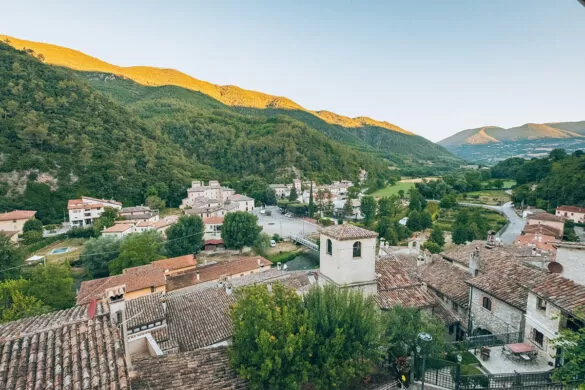
Don’t miss: Visiting the town of truffle isn’t complete without some truffle-based meals, and you can’t go wrong with ristorante del Ponte Scatolini . The menu offers a great selection of truffle dishes, from classic tagliolini to trout and omelettes. Another great truffle-filled menu is Borgo 209, located in Piazza Carlo Urbani it has lovely views of Scheggino from its front terrace.
Why not stay the night? Boasting beautiful views of Valnerina, Torre Del Nera Albergo diffuso & Spa is a hotel with each room and apartment spread throughout the town. I stayed here for two wonderful nights in one of their country-style rooms. There are also 16 independent “houses”, each named after the original inhabitants and featuring their family crest. Apartments feature a log fire, rustic furnishings in wood and stone, and a fully fitted kitchenette. Two apartments are located in a former 13th-century lookout tower. Check availability and book your stay here.
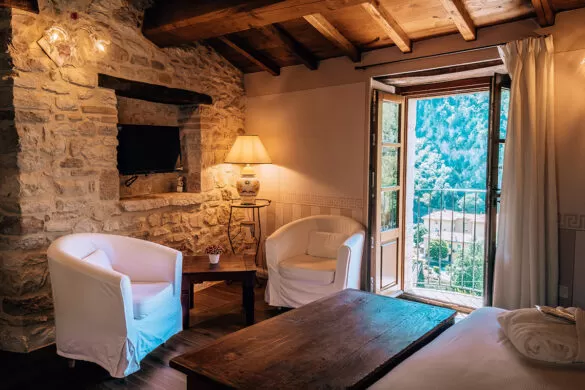
13. Become a cheesemaker for a day
Simple, genuine, and characterful, Umbrian cheeses are a staple of local cuisine and boast an ancient history. Local pecorino, for example, was already mentioned by Pliny the Elder in the 1st century AD when describing the various cheeses known in Rome.
Visiting a cheese factory is definitely one of the best things to do in Umbria. Many organic farms and artisanal workshops open their doors to visitors who want to learn how cheese is made. One is Caseificio Broccatelli , a family-run business that has been making cheeses since the 1950s.
Don’t miss: stock up on pecorino and caciotta , the region’s most popular cheeses. These make for wonderful gifts and souvenirs! Plan your visit here
14. Explore Valnerina with a memorable mountain bike experience
Featuring ancient abbeys, medieval hamlets, and spectacular waterfalls immersed in pristine nature, Valnerina is a stunning mountain valley bordering Le Marche in southeastern Umbria. Crossed by the Nera River, it offers timeless sights like the Plain of Castelluccio di Norcia and the Marmore Waterfalls.
SpoletoNorcia MTB Experience , the biggest cycling event in central Italy, is a great way to explore this part of Umbria. Hundreds of bikers and nature lovers come here every September to ride the four different routes around the old Spoleto-Norcia railway, which range from 10km to 65km.
Don’t miss: If you can’t make it to the event, you can explore the beauty of Valnerina at any time by using the permanent trails. You can easily rent a bike at this handy bike point or bring your own and move around with the Bus & Bike service .
15. Explore Umbria on two wheels

Exploring Vallo di Nera on a bike tour
While there are do-it-yourself options, I actually recommend joining a tour with Ciclostazione who offer everything from half-day to multi-day bike tours along the old railway between Spoleto-Norcia and the Green Way of Nera River. For something more personalised, you can get a customised cycling route and itinerary based on your needs and preferences, including historical, cultural, and culinary delights. Choose from mountain bikes, and e-bikes and if you’re a family you can add a child seat. I joined a 3-hour afternoon tour along the old railway with Luca where our group chose to visit Vallo di Nera one of the borghi più belli d’italia (most beautiful villages in Italy) and wow is it beautiful! For more details , book your trip here.
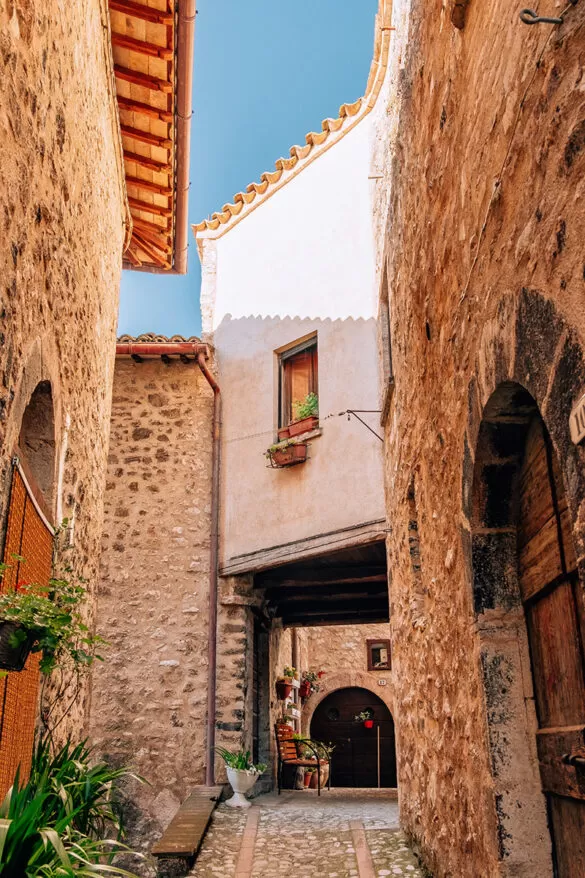
16. Take the Gorges of River Nera trail
There is no better introduction to the great outdoors of Umbria than taking the Nera Gorges trail. This pathway winds along the Nera River, revealing enchanting corners. You’ll find it near the town of Narni and is one of the best things to do in Umbria for nature lovers.
The trail unfolds through the old railway tracks running along the Nera River for 5km. You can do it in many ways: trekking, running, mountain bike and horseback rides, and canoeing. All around, the landscape is fabulous and reveals exciting attractions such as the remains of a Roman harbour and caves once inhabited by hermits.
Don’t miss: Along the trail, you can see an ancient Roman port and shipyard as well as the ruins of old water mills at the hamlet of Stifone.
17. Sleep in a former monastery in Ferentillo
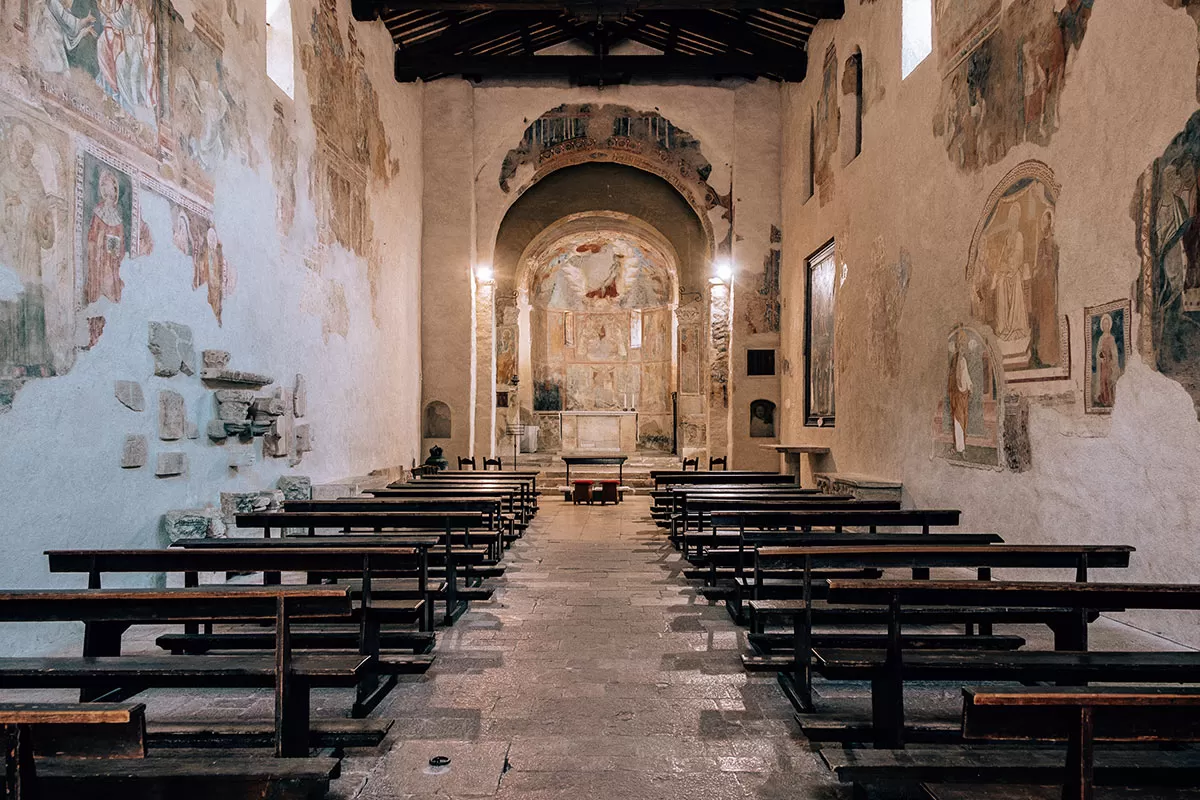
Chiesa dell’Abbazia di San Pietro in Valle
Ferentillo is a village of very ancient origins. Located in Valnerina Park, it’s perfect for outdoorsy types who want to try their hand at free climbing, canoeing, and rafting. There are also interesting sites to explore including the Museum of the Mummies below the Church of Santo Stefano.
Ferentillo’s history is closely tied to that of the Abbazia San Pietro in Valle (Abbey of San Pietro in Valle), a medieval monastery built on the site of a cave where hermits lived between the 4th and 6th centuries. The Abbey Church of San Pietro in Valle is one of the most important monuments in Umbria. Here you’ll find three tombs of hermit saints and the largest collection of Roman sarcophagi of Umbria and Romanesque frescos which inspired Giotto’s work in Assisi. Thanks to its location, it boasts commanding views of the valley below.
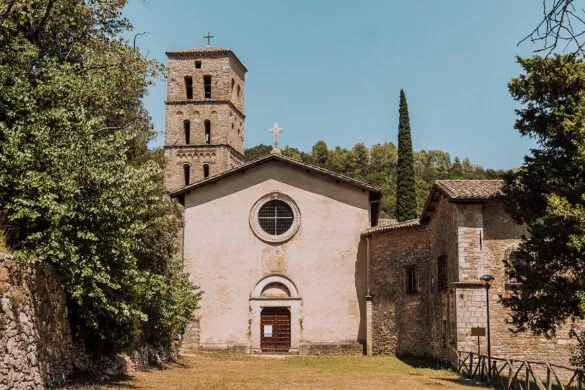
The former monastery has been completely restored and offers luxury lodgings to travellers seeking a peaceful retreat. What could be more unique than staying in a former monastery? Now home to Relais Abbazia San Pietro In Valle, a residenza storica (historical residence), this hotel is run by three sisters (Federica, Letizia and Chiara) and is a popular choice for weddings and special events thanks to its gorgeous panoramic garden. Offering everything from standard rooms to family and decadent suites, there is something to suit all budgets. Note that the hotel is only open from April to October. Check availability and book your stay here.
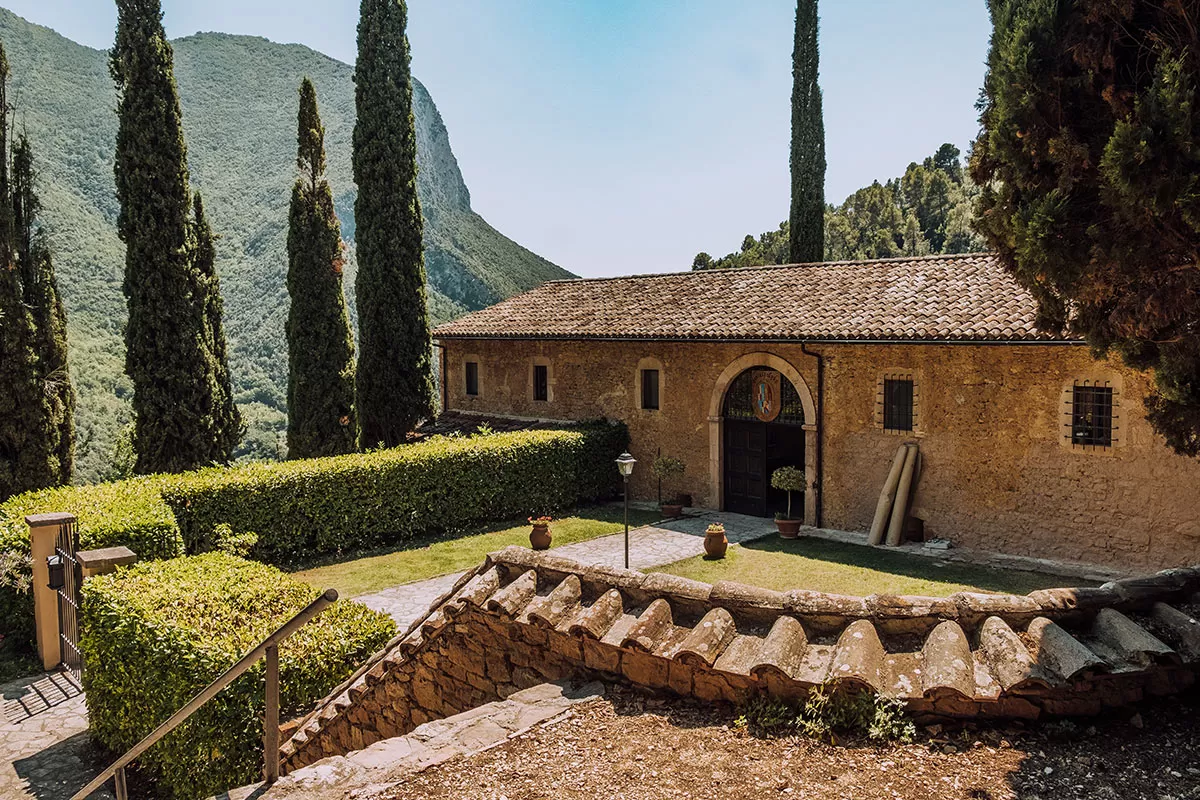
18. Go underground in Narni
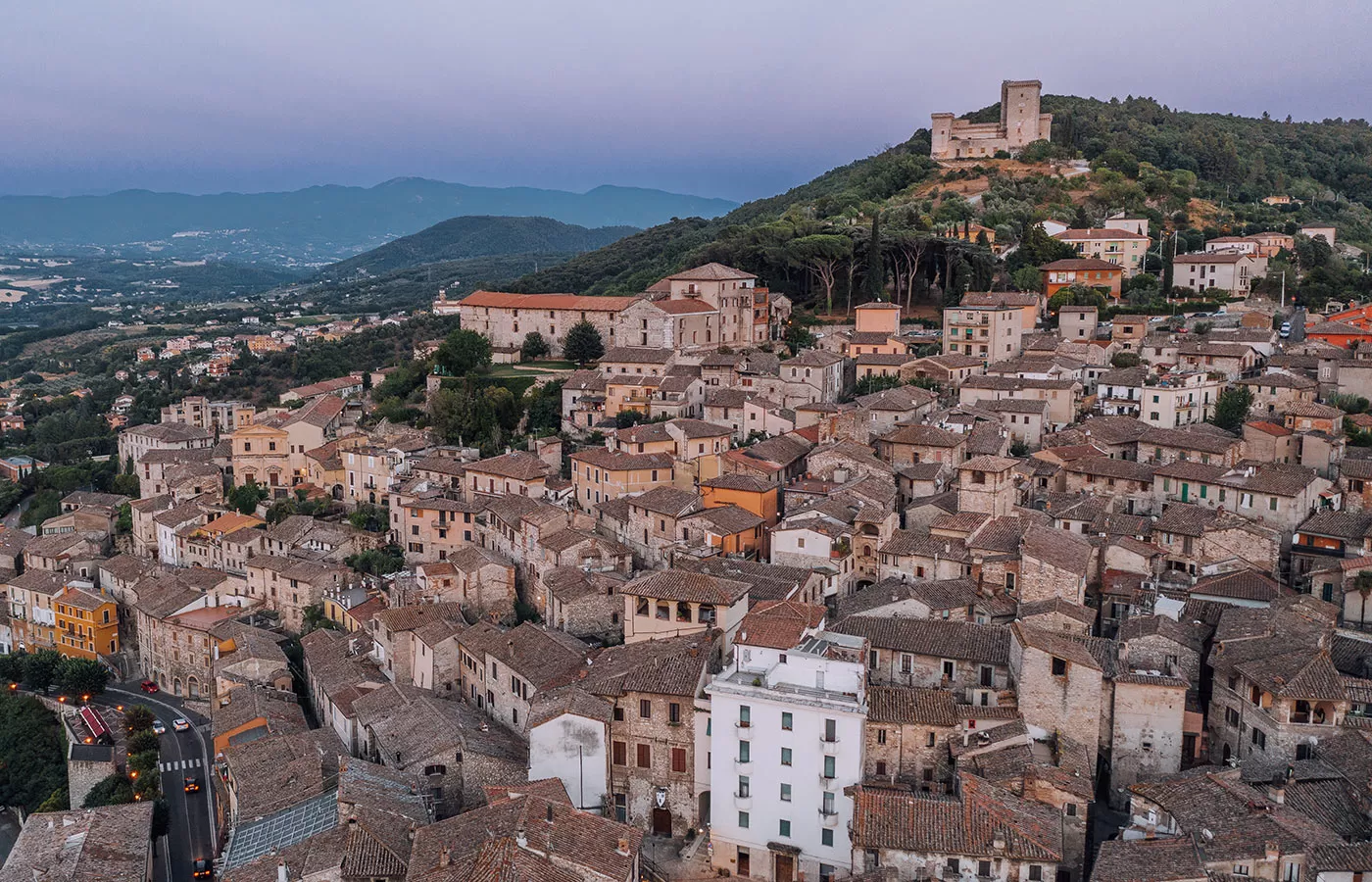
Located east of the Tiber river is Narni. This fine and unspoilt hilltop town is located above a bend in the River Nera and is the geographical centre of Italy. Its origins date back to the Umbri people, who founded Nequinum. The settlement was conquered by Rome in 299 BC and was renamed Narnia , after the nearby river. Its importance under the Romans derived from the fact that it was the birthplace of Emperor Nerva, in AD 32, and also a major stopping point on the Via Flaminia. The Via Flaminia was an important Roman consular road that connected Rome to Rimini.
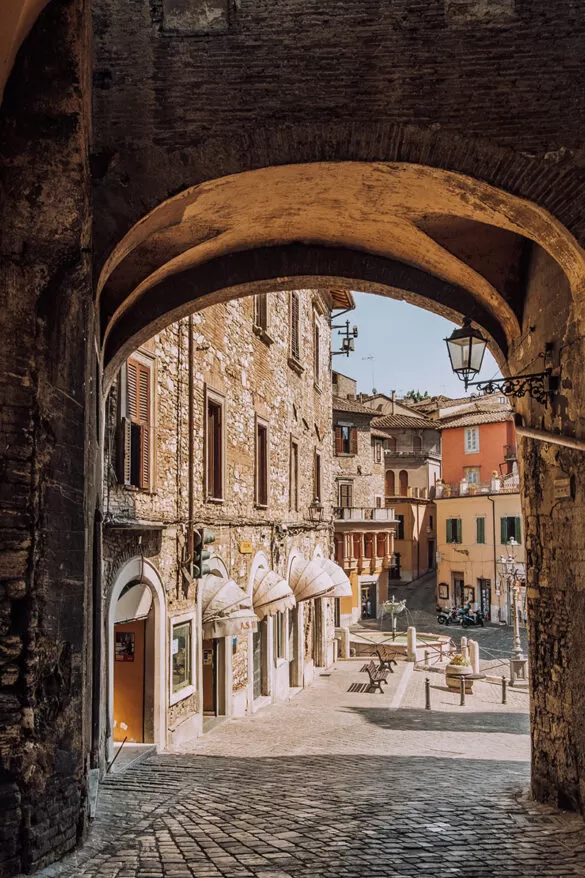
Beneath the streets of Narni, the town that inspired “The Chronicles of Narnia”, there’s a tangle of underground tunnels and rooms that feel like another world. You’ll find remains of a Roman home, a church covered in frescoes, a cistern used to collect rainwater, a torture chamber, a Tribunal of the Inquisition and a cell with graffitied walls with a chilling message.
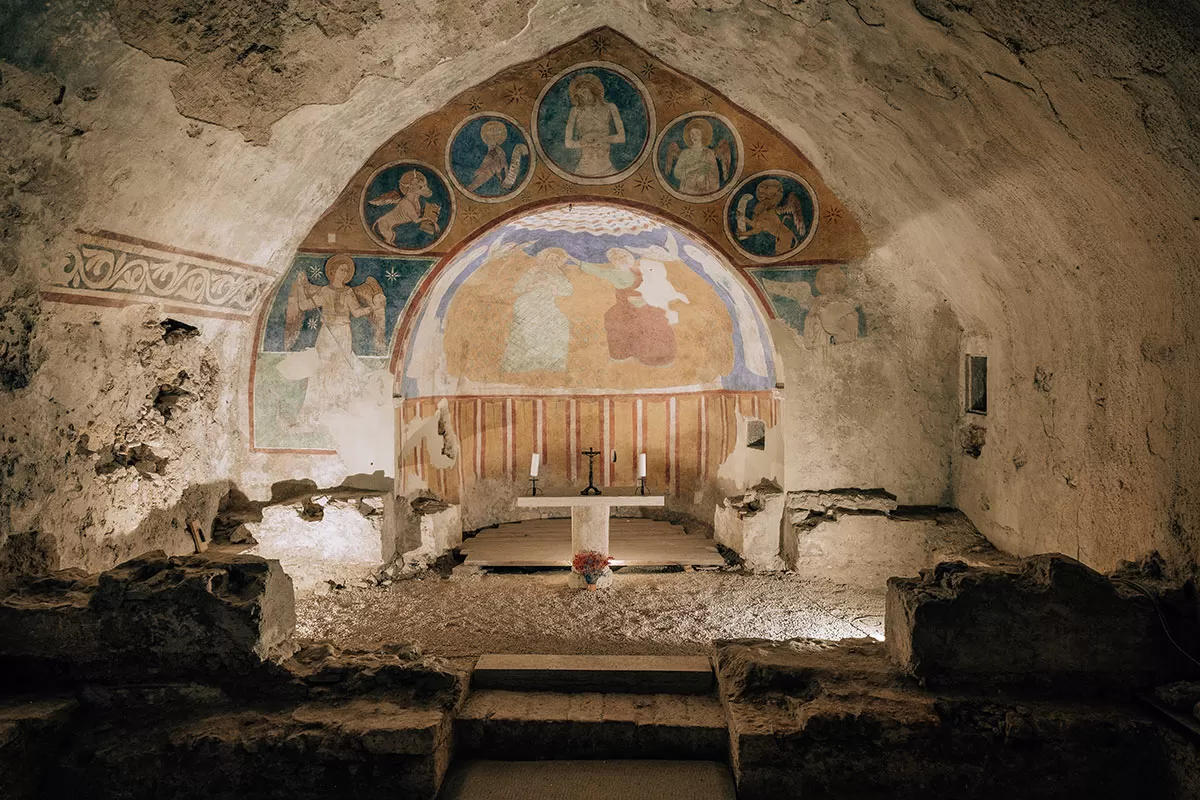
Benedictine church
Covered or purposely hidden for centuries, this fascinating complex was re-discovered in 1979 by Roberto Nini and his friends when he was just 17 years old! Becoming his life work, Nini established Narni Sotterranea (Narni Underground) and wrote a book about his long journey that took him to the Vatican and Trinity College in Dublin to piece together the truth behind these forgotten rooms. Roberto now offers guided tours which must be booked in advance. For more information, visit narnisotterranea.it
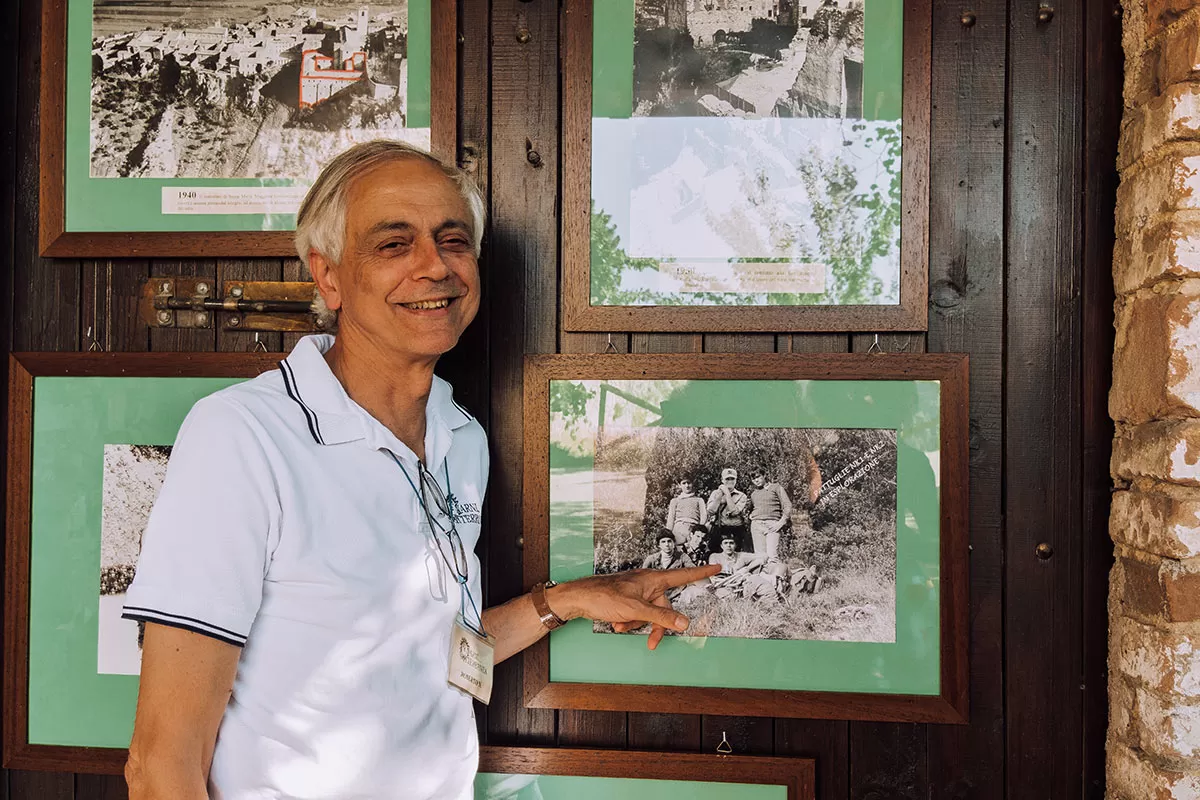
Roberto Nini at Narni Sotteranea
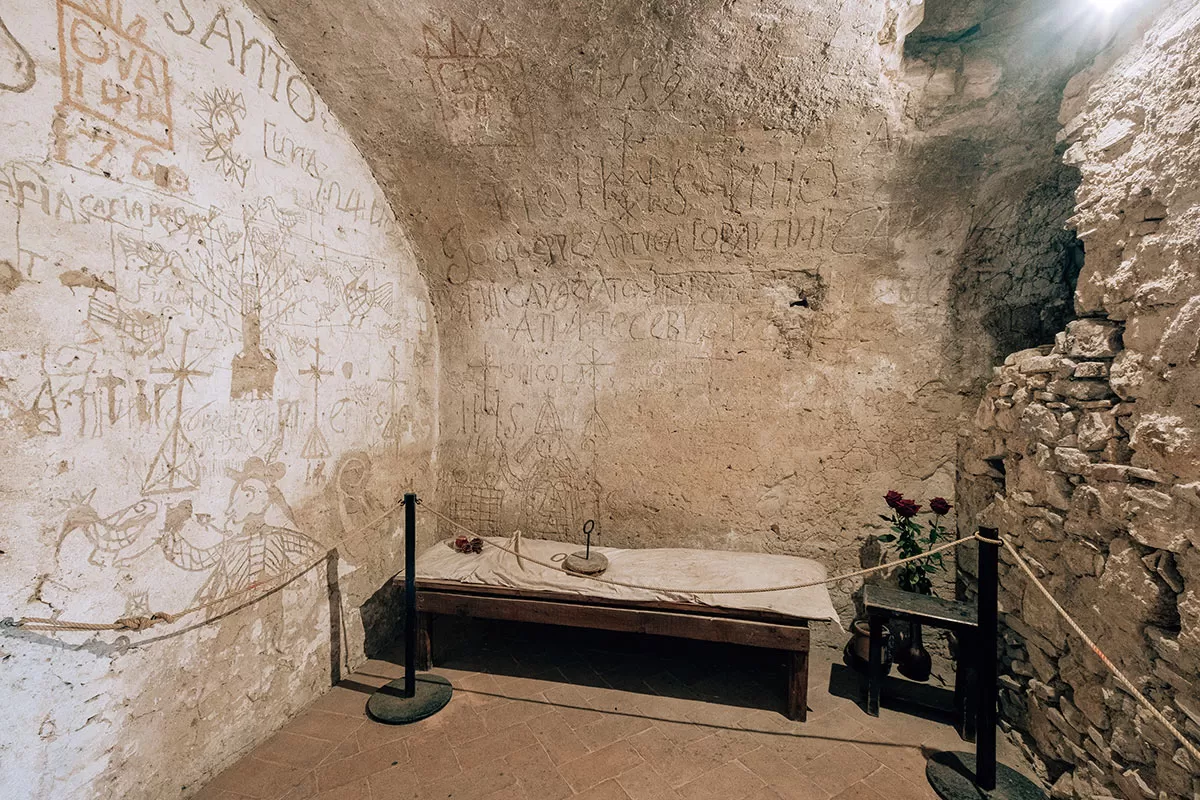
Inside cell of the condemed
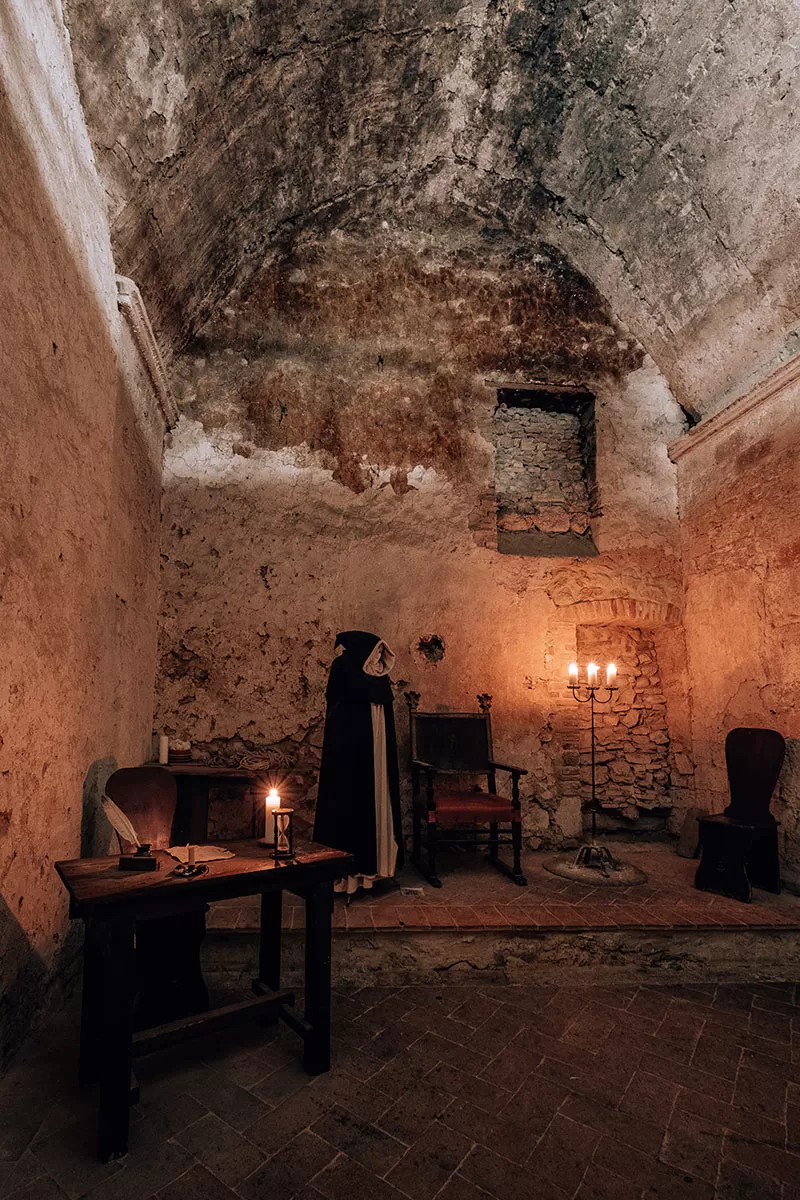
Tribunal of the Inquisition
Like many other towns and villages in Umbria, Narni preserves a strikingly medieval appearance, with stone buildings and narrow cobblestone streets. Its attractions include one of the largest Roman bridges ever built and the Eroli Museum with an altarpiece by Domenico Ghirlandaio. Outside the city walls, Ponte Cardona marks the precise geographical centre of Italy. To learn more about Narni during your visit, consider joining this private guided tour.
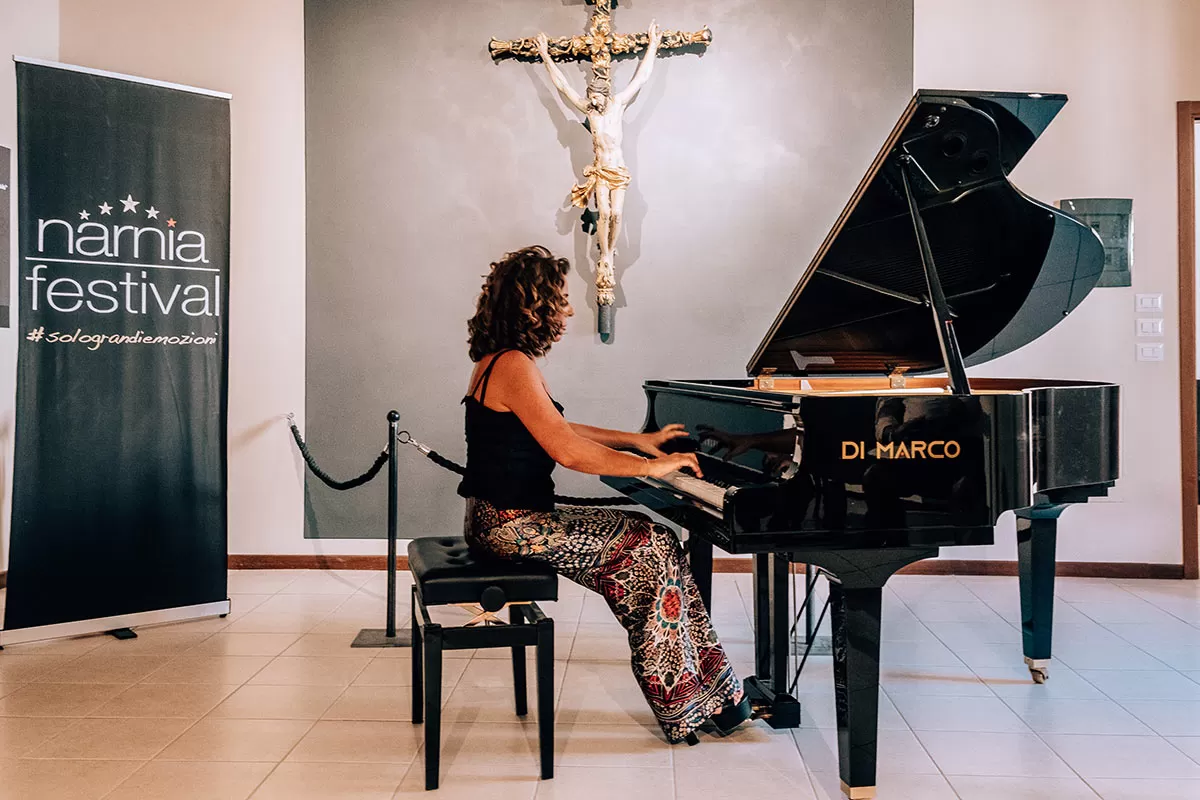
Narnia Festival performance
Don’t miss: Every year in July, Narni hosts the famous Narnia Festival , which celebrates arts, music and culture with shows and performances by international artists.
19. Visit Cascata delle marmore – the world’s tallest man-made waterfall
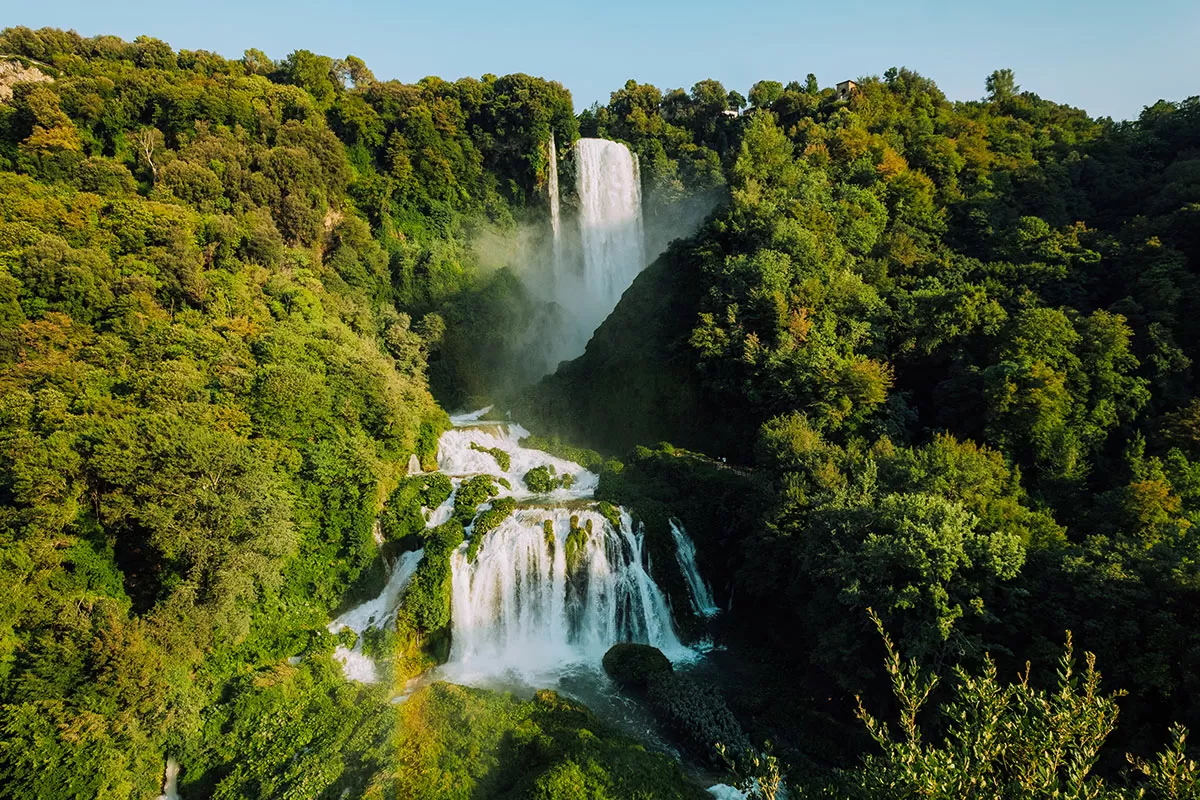
In ancient times, the Velino river flowed through the highlands that surround the city of Rieti and fed a wetland in the Rieti Valley that was thought to bring illness (probably malaria). To remove this threat, in 271 BC, the Roman consul Manius Curius Dentatus ordered the construction of a canal (called the Curiano Trench) that diverted the course of the river and formed the Marmore Falls.
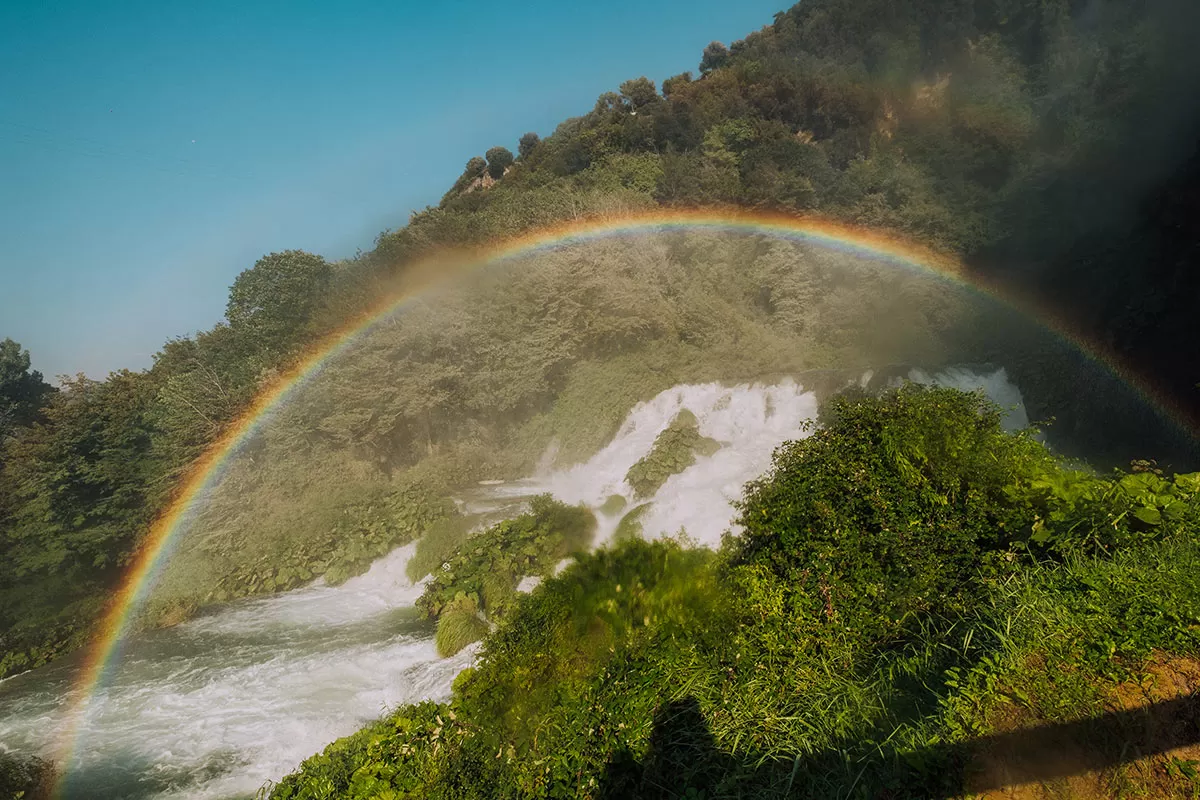
View from trail 2
From there, the water fell into the Nera river below. However, that solution created a different problem: when the Velino river was in flood, its water flowed toward the city of Terni, threatening its population. Over the next 300 years, other measures were taken to prevent additional flooding thanks to the construction of the Curiano Trench and in 1787, Pope Pius 6th ordered architect Andrea Vici to modify the leaps below the falls, giving the falls their present look, and finally resolving the majority of the problems.
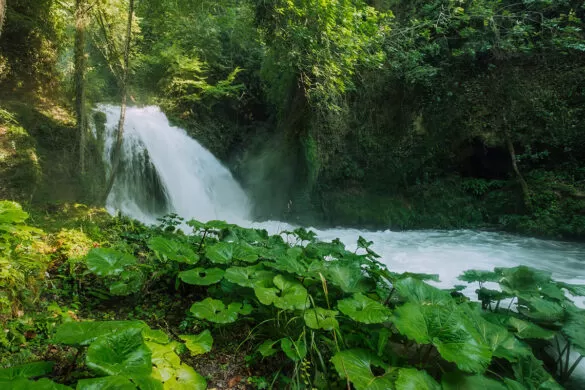
In 1896, the newly formed steel mills in Terni began using the water flow in the Curiano Trench to power their operation. In the following years, engineers began using the water flow to generate electricity. Most of the time, the water in the canals above the Cascata delle Marmore is diverted to a hydroelectric power plant, so the flow in the falls themselves is heavily reduced.
The waterfall is controlled by a power plant and is “switched on” only at certain times during the day. Make sure you check the website before you go. Check the published schedule here.
Today, you can admire the waterfalls from different angles with a series of paths immersed in greenery by following any of the 6 scenic sentieri (paths) around the valley and area above the waterfall. Trails 1, 2, 3 and 4 are the most impressive and shouldn’t be missed.
- Trail 1 will take you to a belvedere (viewpoint) towards the top of the waterfall with a view looking down towards the valley. Allow a 30-minute round trip.
- Trails 2 and 3 are connected and take you along the lower falls. Look out for a stunning reflection rainbow caused by the heavy flow of water and spray in the air. Allow a 15-minute round trip.
- Trail 4 is located across the road outside the main waterfall complex area. Show your ticket to a member of staff and then take the 10-minute walk up the mountain which will give you fantastic views of the waterfall.
Entrance is 10 euros and for another 3.5 euros, you can visit il balcone degli innamorati (the lover’s balcony) as part of a small guided tour. A small corridor built into the mountain opens up to a small terrace that puts you right in the waterfall. If it’s not a hot day or you don’t want to get soaked, I recommend picking up a poncho for 2 euros at the shop at the base of the waterfall. Click here for a full map of the park and paths.
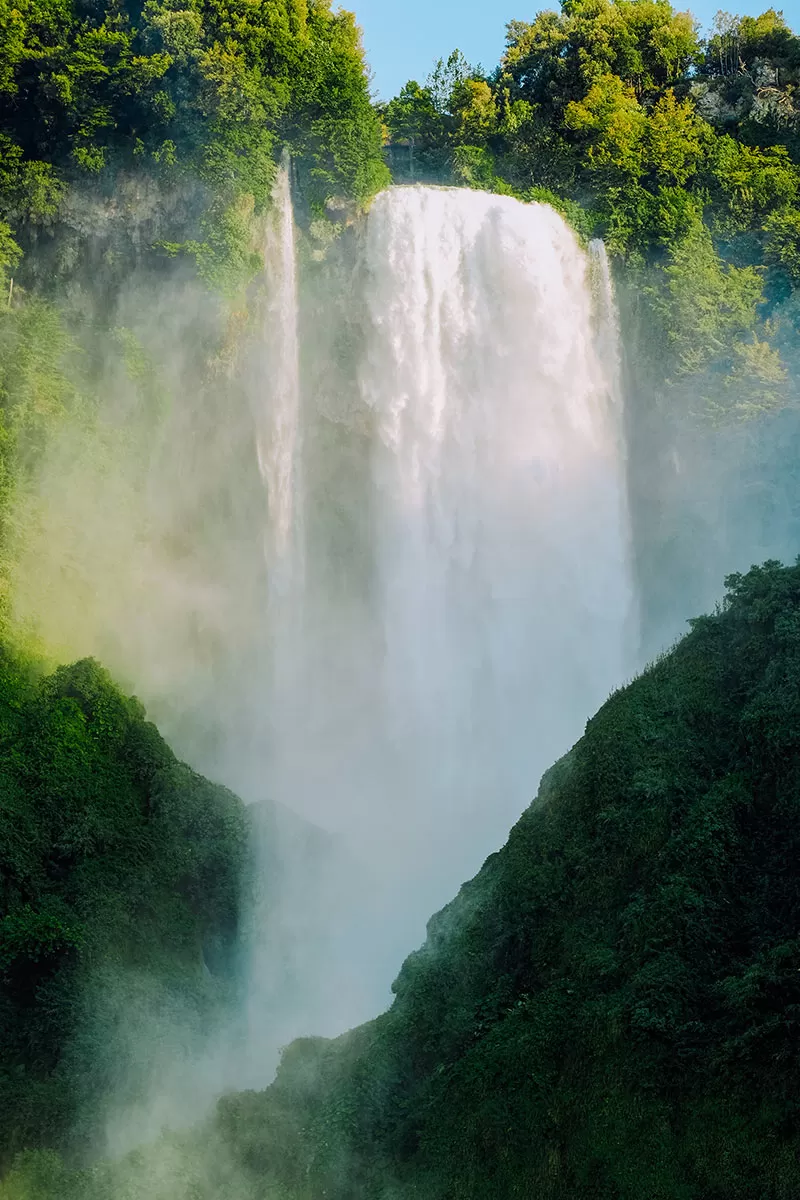
20. Dine and stay the night at Borgo dei conti Resort Relais & Chateaux
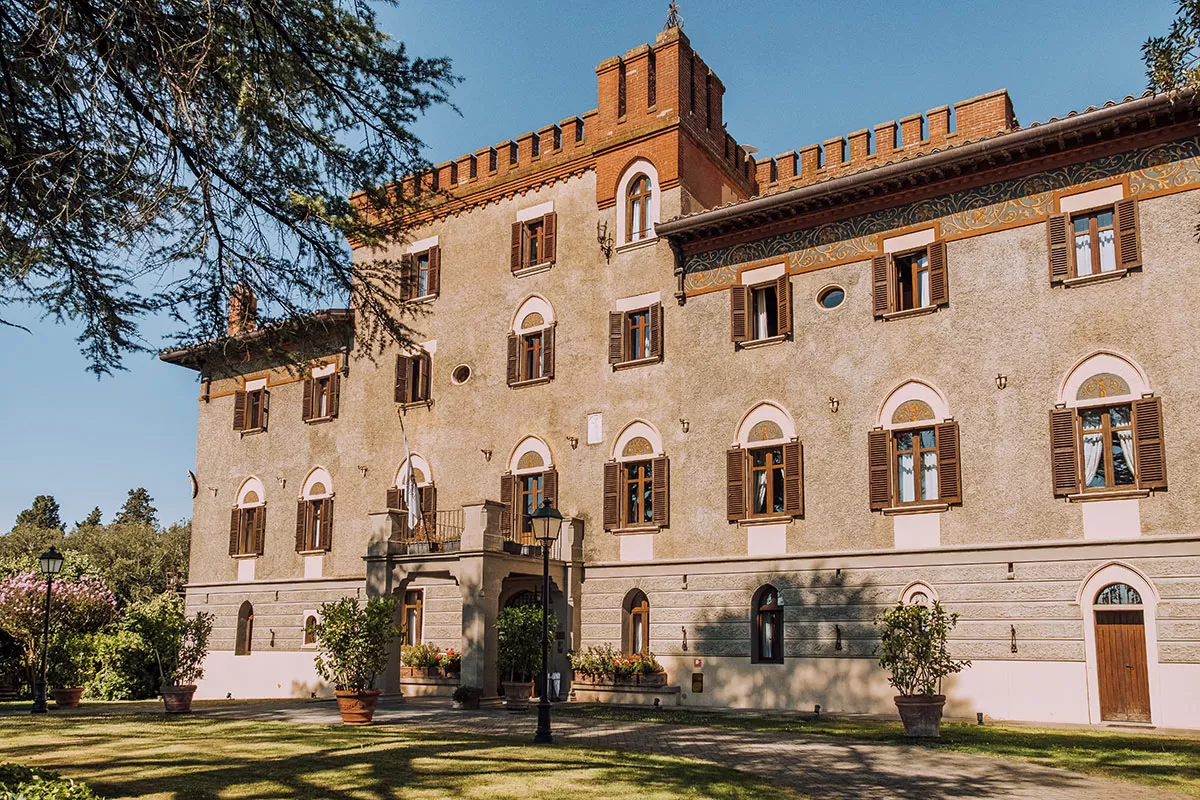
This residence was erected on the site of an ancient fortress, which dates as far back as the 13th century when it was then inhabited by about 500 people. The name borgo dei conti translates to ‘village of the counts’ and as its name suggests, over the years it was owned by a succession of nobles from counts to aristocrats.
There is also an imbarcadero a kind of jetty which historically gave underground access to a stream which the Countess took to reach a lake and her private hideaway where she painted and took refuge.
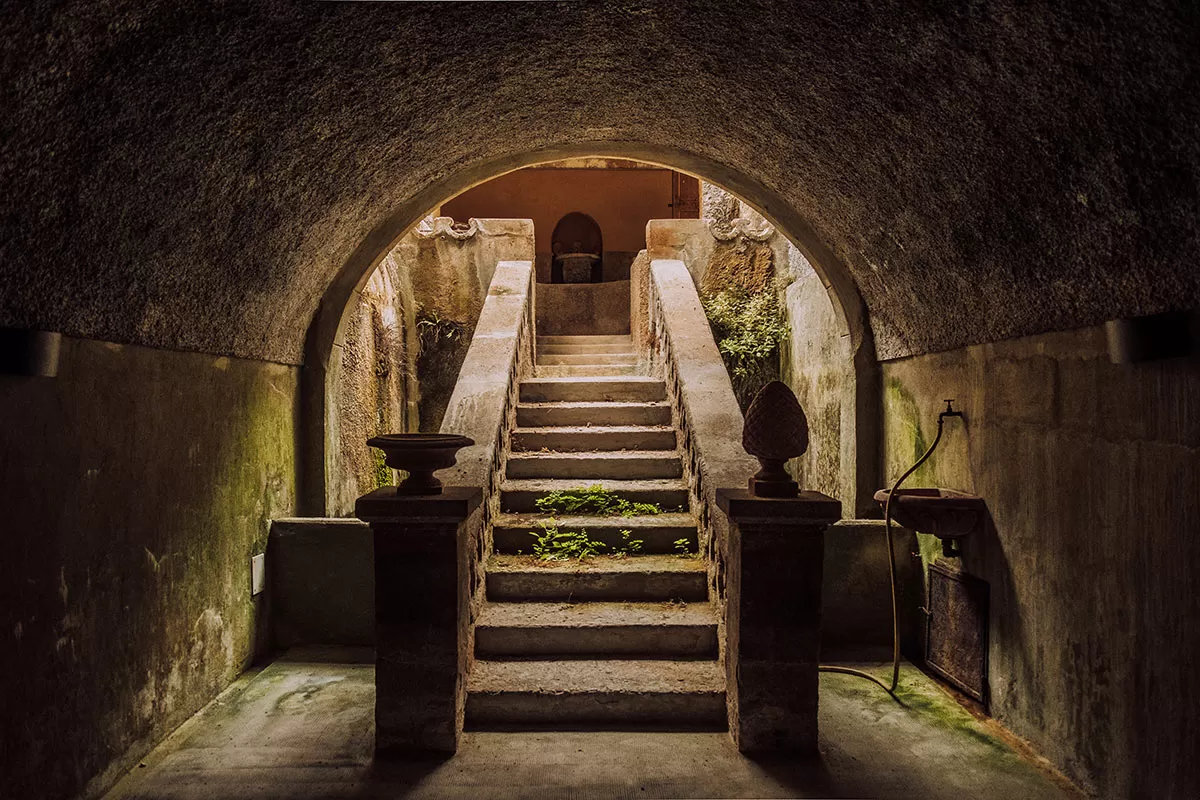
imbarcadero – an ancient jetty
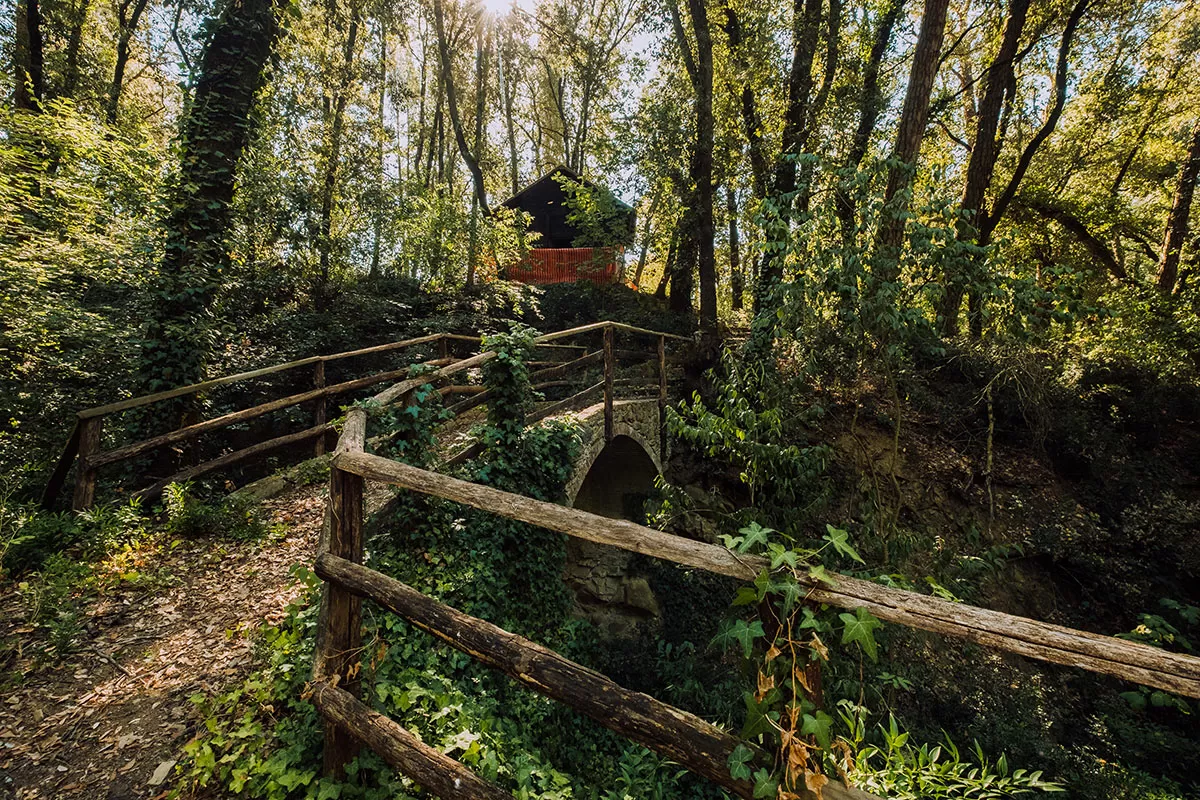
The private refuge of the countess on what was once a lake
Today, this converted castle offers its guests a free spa and gym, billiards room, and an on-site restaurant serving Umbrian specialities. Each room is elegantly furnished with designer bathrooms, dark-wood furniture and fine fabrics. You can even choose to stay in either the Count and Countess’ suites. Check availability and book your stay here .
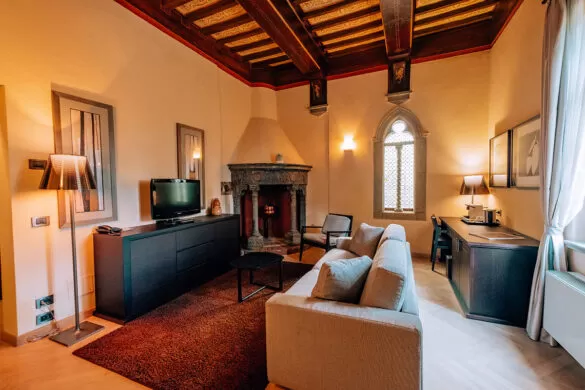
21. Go whitewater rafting
Though Umbria looks peaceful and idyllic, it offers its fair share of adrenaline too. For example, there are some great spots for whitewater rafting on the Nera River, under the waterfall Marmore – the kind of adventure that any adrenaline junky visiting Umbria shouldn’t miss. Check availability and book your experience here.
Depending on your level, there are different courses you can pick, and even beginner rafters are guaranteed some seriously accelerated heartbeats. Added bonus: the river winds through some of Umbria’s most stunning scenery.
Don’t miss: besides rafting, there are tons of other sports you can practice in the area, including canyoning, hydrospeed, and thrilling river walks at night. For more information visit: umbriaexperience.it
22. Discover Umbria’s wine routes (and bring a bottle or two home)
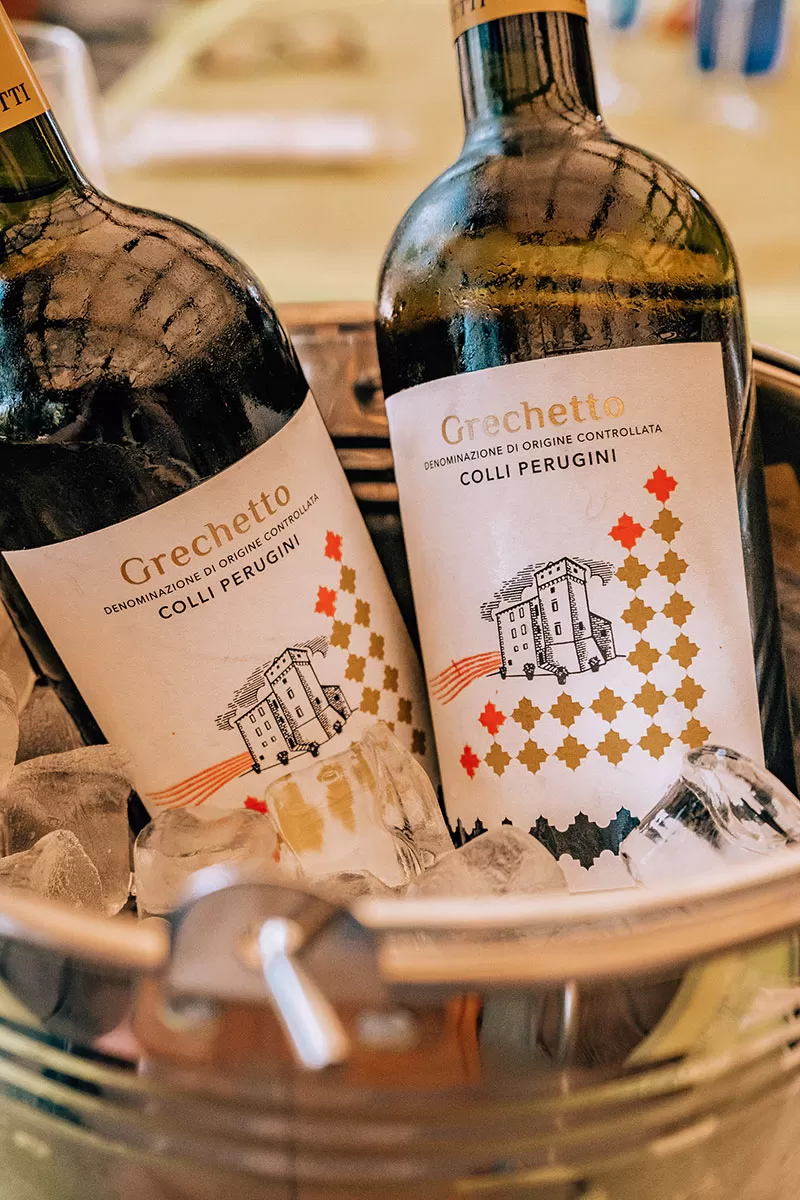
A total of four wine routes have been designed to guide visitors through excellent wines, marvellous landscapes, and enchanting villages across the region. These are: “Strada del Sagrantino” on the slopes of Montefalco, “Strada del Vino dei Colli del Trasimeno”, “Strada dei Vini del Cantico” in central Umbria, and “Strada dei Vini Etrusco Romana” through the hills of Orvieto.
Don’t miss: Whatever route you take, make sure you stop at Arnaldo Caprai , a fantastic winery famous for its Sagrantino red. You can tour the cellars and enjoy lunch on a beautiful panoramic terrace.
23. Tour Rasiglia, Umbria’s little Venice
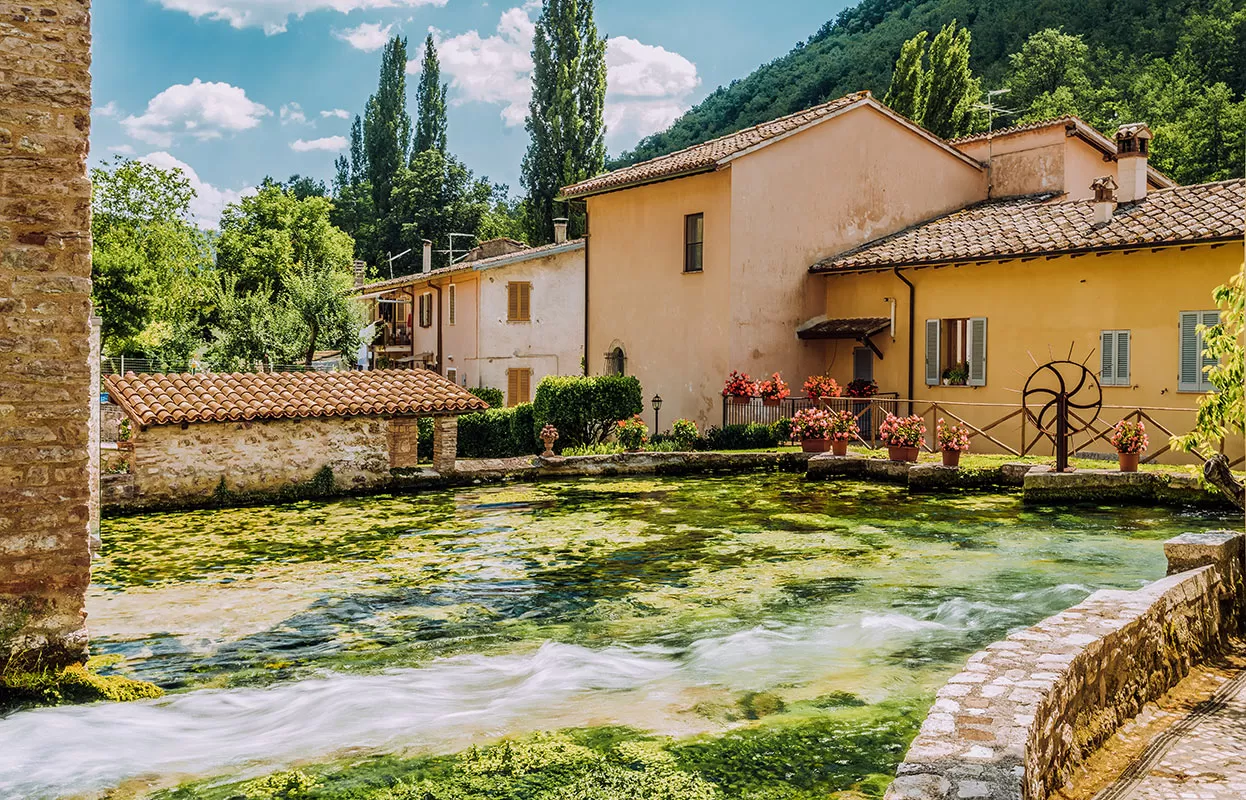
Rasiglia welcomes you with the soothing sound of flowing water. This town gets its nickname – “Umbria’s little Venice ” – from a fascinating system of creeks and canals that wind through the streets, providing enchanting views. Cute wooden and stone bridges are all over town, perfect for photos.
Don’t miss: In June, you can watch re-enactments of historic activities and participate in traditional workshops at “Penelope a Rasiglia”, the town’s main event.
24. Take an Umbrian cooking class
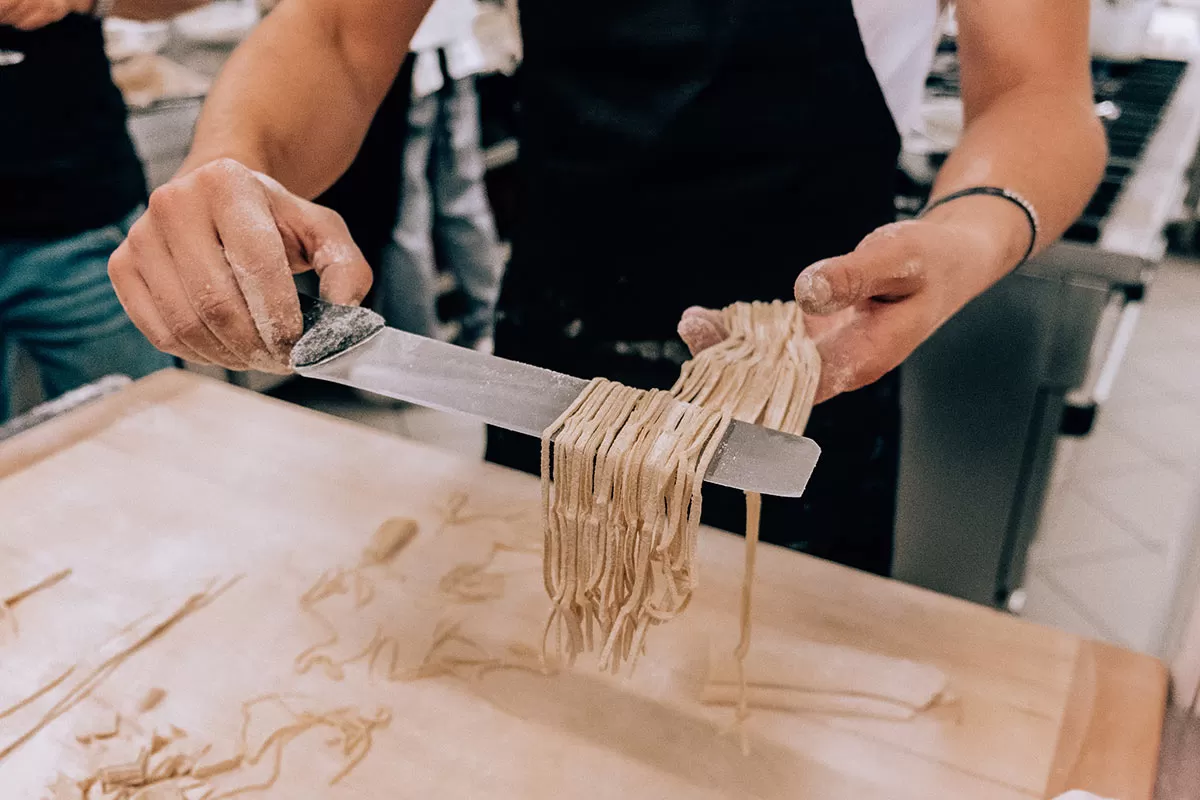
Among the many options on the market, Percorsi con Gusto in San Gemini stands out for keeping traditions alive. Home cooking is the focus of its courses, which take place in a beautiful 16th-century private residence. Another top-rated cooking class is this one where you’ll enjoy a five-course meal along with wine from the estate, as you learn about traditional recipes from Umbria. Plus you get a recipe book to take home. Book your class here.
Don’t miss: Don’t leave without visiting the village after the cooking class. San Gemini is included in the list of Italy’s most beautiful villages and offers important attractions, including a Roman archaeological area.
25. Discover the great outdoors in the Monte Cucco Regional Park
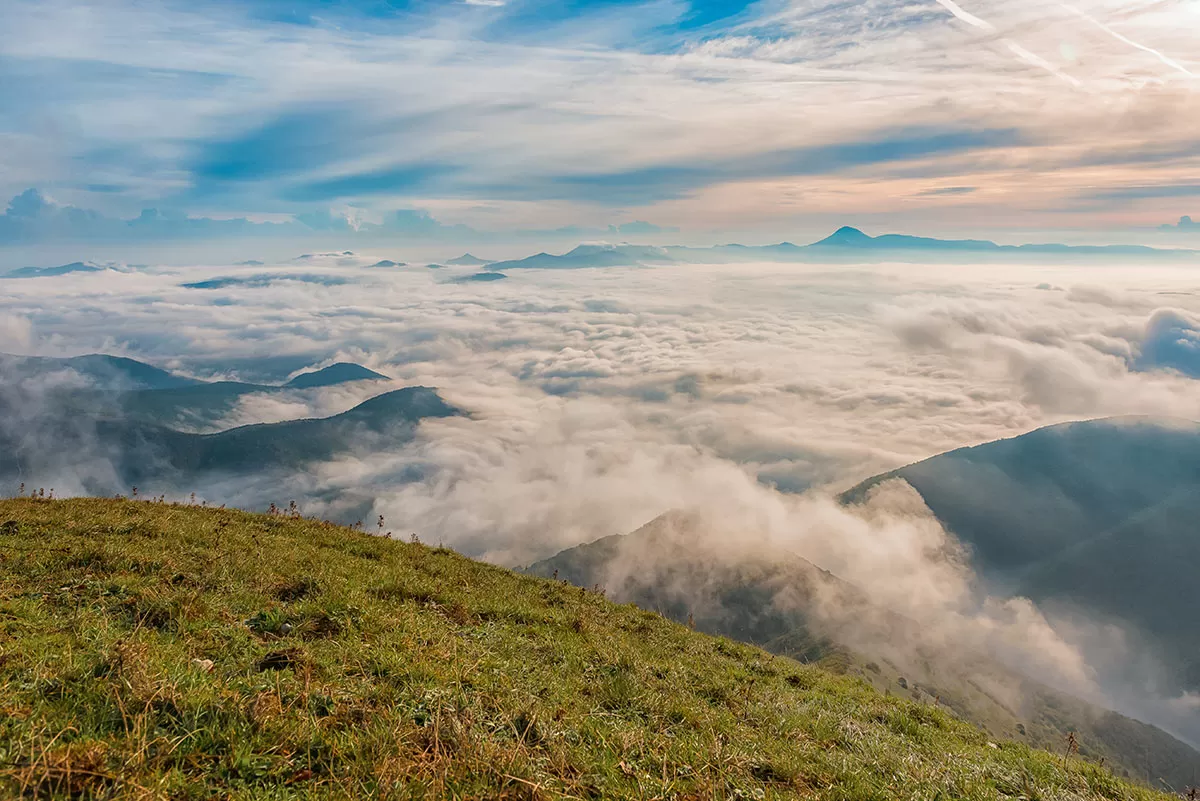
Monte Cucco at sunrise
The Monte Cucco Regional Park is the ultimate paradise for nature lovers in Umbria, on the border with Le Marche. It’s got pristine woods, waterways, and spectacular gorges. There are also some incredible underground caves where others have left their traces through the centuries.
This park is full of hermitages and quaint hamlets rich in history and culture, such as Fossato di Vico, where every year in May the Feast of the Statutes brings the village’s 14th-century Municipal Statutes back to life.
Don’t miss: Featuring 30km of tunnels, the Monte Cucco Cave is an underground system of great importance in Europe.
26. Explore the Sibillini Mountains National Park
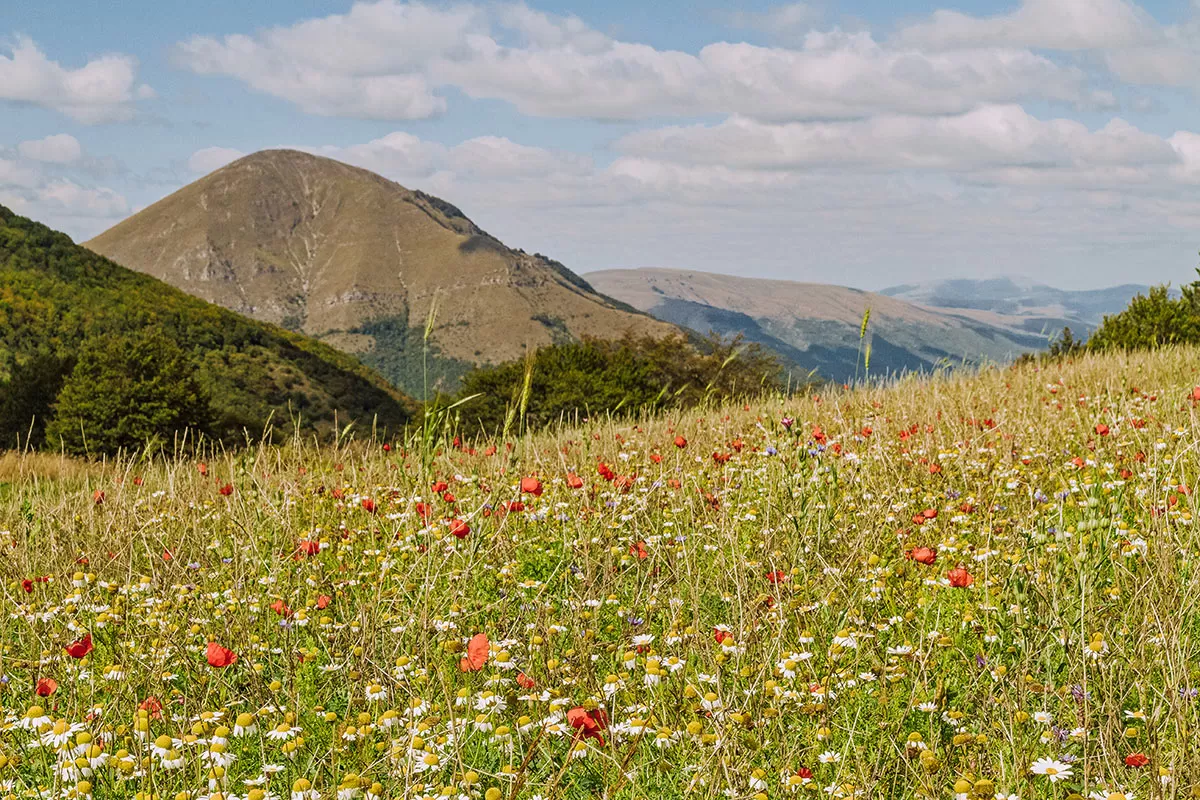
Sibillini mountains
Stretching over 70,000 hectares between Le Marche and Umbria, the Sibillini Mountains National Park is Umbria’s natural wonderland. Legends about the Prophetess Sibyl haunt the area, making a visit all the more thrilling.
Hiking, biking, or paragliding are the best ways to see the park’s natural treasures. There are also old hamlets to explore, like Visso, which is thought to have been founded 907 years before Rome, and Arquata del Tronto, Europe’s only territory with two national parks (Monti Sibillini in the north and Gran Sasso in the south).
Don’t miss: Visit between May and July, when the lentil fields around Castelluccio di Norcia are in full bloom, turning the valley into a beautiful mosaic of colours.
27. Visit the earthquake-stricken town of Norcia
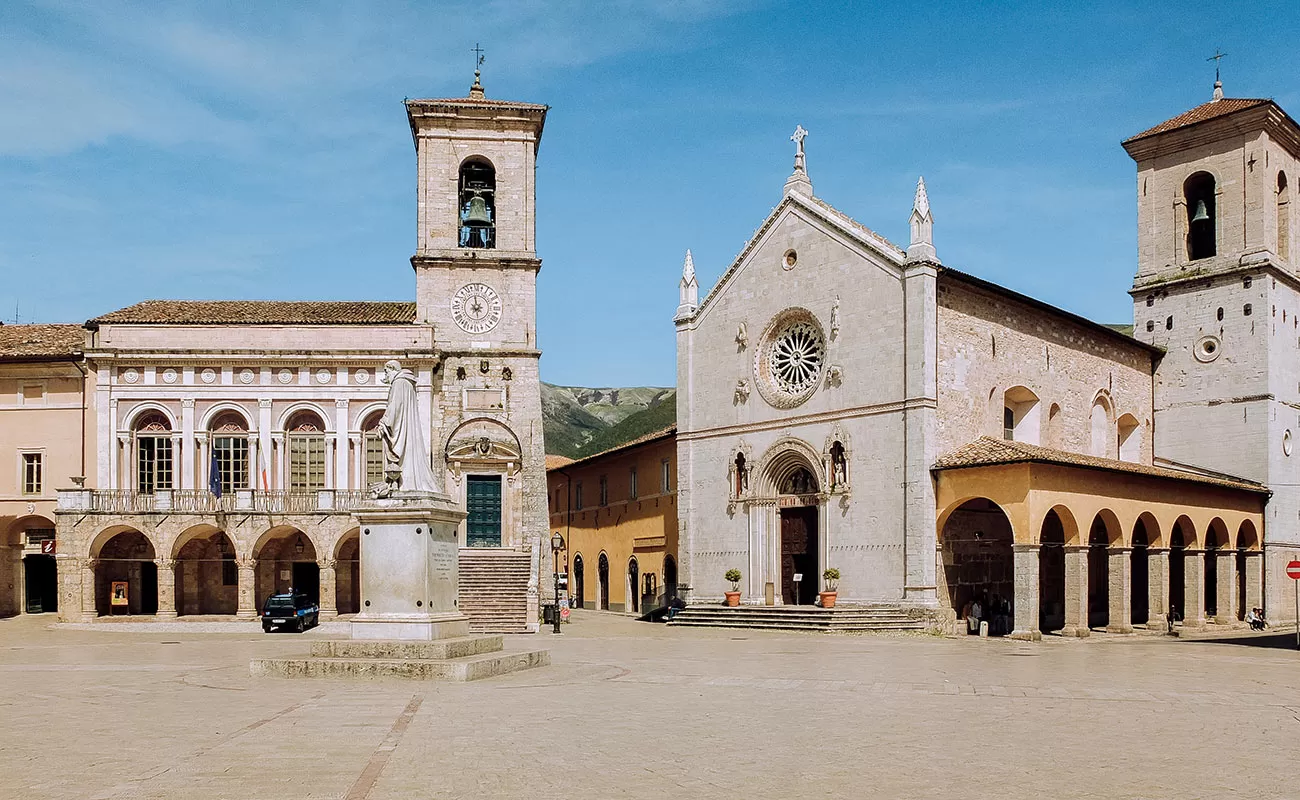
Despite being hit by earthquakes that destroyed many of its treasures, Norcia remains firmly on Umbria’s map as a prime spot for hikers and foodies. The town is surrounded by the stunning landscape of the Sibillini Mountains National Park, which you can explore on foot, bike, or horseback. This way, you won’t feel guilty about stuffing yourself with its delicious tasty pork-meat products and cheeses.
Norcia’s historic centre is surrounded by walls and develops around Piazza San Benedetto, the saint born here. Part of it is still inaccessible to the public, but you can see what’s left after the quakes, like the facade of the 13th-century basilica and the statue of St Benedict. But what makes this little Umbrian town so special is its people, who are fighting hard to rebuild it.
Don’t miss: Pay a visit to the earthquake-stricken shops housed inside prefabricated wooden buildings along Via della Stazione. They were moved here from the historic centre, and our support is vital for their survival.
28. Treat yourself to a fancy meal
Why not try one of Umbria’s three Michelin-starred restaurants while in Norcia? The restaurant is called Vespasia and you’ll find it inside the 16th-century Palazzo Seneca Hotel in the historic centre. Promoting an ethical, sustainable cuisine, the restaurant uses strictly seasonal ingredients from a network of local suppliers. The result is dishes that showcase local specialities without shying away from sacrificing innovation.
Don’t miss: the restaurant has three tasting menus, but if you can only pick one dish, go for the homemade Umbricelli with Norcia’s black truffles – pure heaven! For more information visit: vespasianorcia.com
29. Visit the birthplace of St. Francis in Assisi
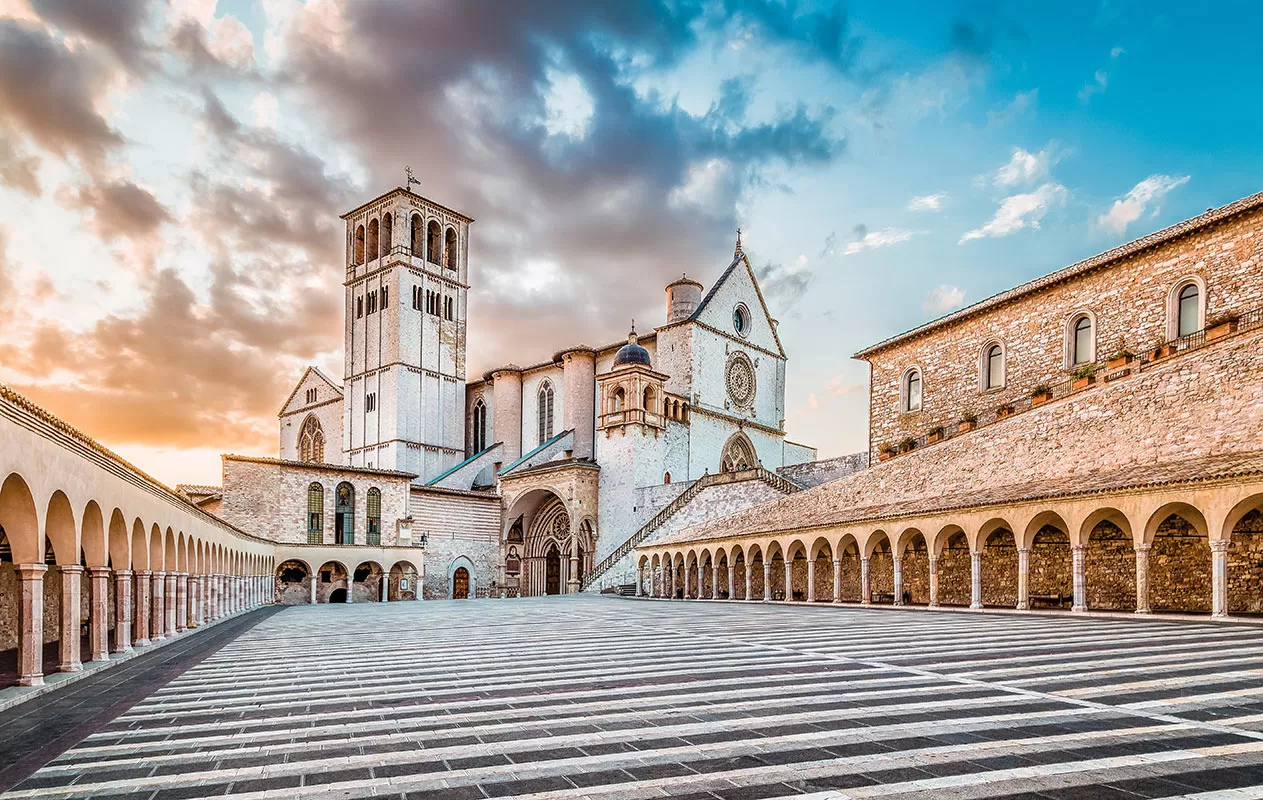
Basilica of San Francesco d’Assisi
A classic stop in Umbria, Assisi is a hilltop town best known as the birthplace of St Francis, one of Italy’s most famous patron saints. Its centrepiece is the stunning 13th-century Basilica of San Francesco d’Assisi, which hosts the saint’s remains and boasts a beautiful fresco cycle depicting his life. Plus, the views of Assisi’s skyline from the Basilica’s upper square are unbeatable.
While the Basilica is the main draw, Assisi also has a magnificent historic center that contributed to the town’s UNESCO listing. Other attractions worth exploring include the Temple of Minerva, the Basilica of St Chiara, and the 14th-century castle.
Don’t miss: The Calendimaggio festival in May celebrates spring and nature’s awakening with three days of historical reenactments and ancient traditions.
30. Walk the Franciscan Peace Path
One of the most interesting things to do in Umbria is walking in the footsteps of St Francis along the trail that connects Assisi to Gubbio. It follows the same route the saint took several times after returning his possessions to his father.
The trail is well marked and extends for about 50km (31 miles), perfectly capturing the spirit of young Francis. Whatever your reason for taking the walk, you’ll be surrounded by peace and beauty.
Don’t miss: look out for the small Church of Vittorina, the legendary spot where St Francis tamed the wolf of Gubbio.
For more information visit: ilsentierodifrancesco.it
31. See Todi, one of the best things to do in Umbria
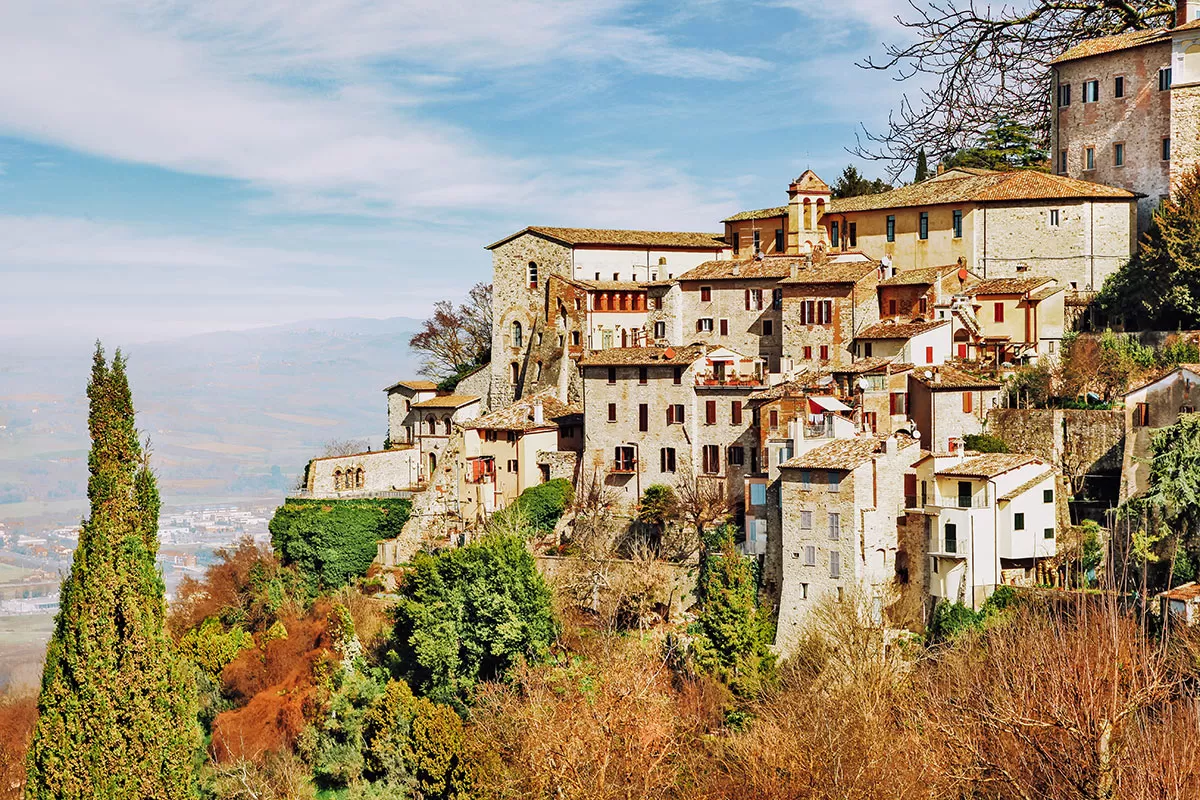
The impressive Temple of Santa Maria della Consolazione is a great place to begin your exploration. The old town is full of monuments and museums, but if you can visit only one place, make it to the Duomo to see the beautiful fresco of the Last Judgment by Farraù di Faenza. It’s inspired by Michelangelo’s more famous work in the Sistine Chapel in Rome.
Don’t miss: Todi is famous for its grilled meat paired with a glass of Grechetto di Todi DOC, a fine white wine produced in the area for centuries.
For more information visit: visitodi.eu
32. Stroll around Spoleto
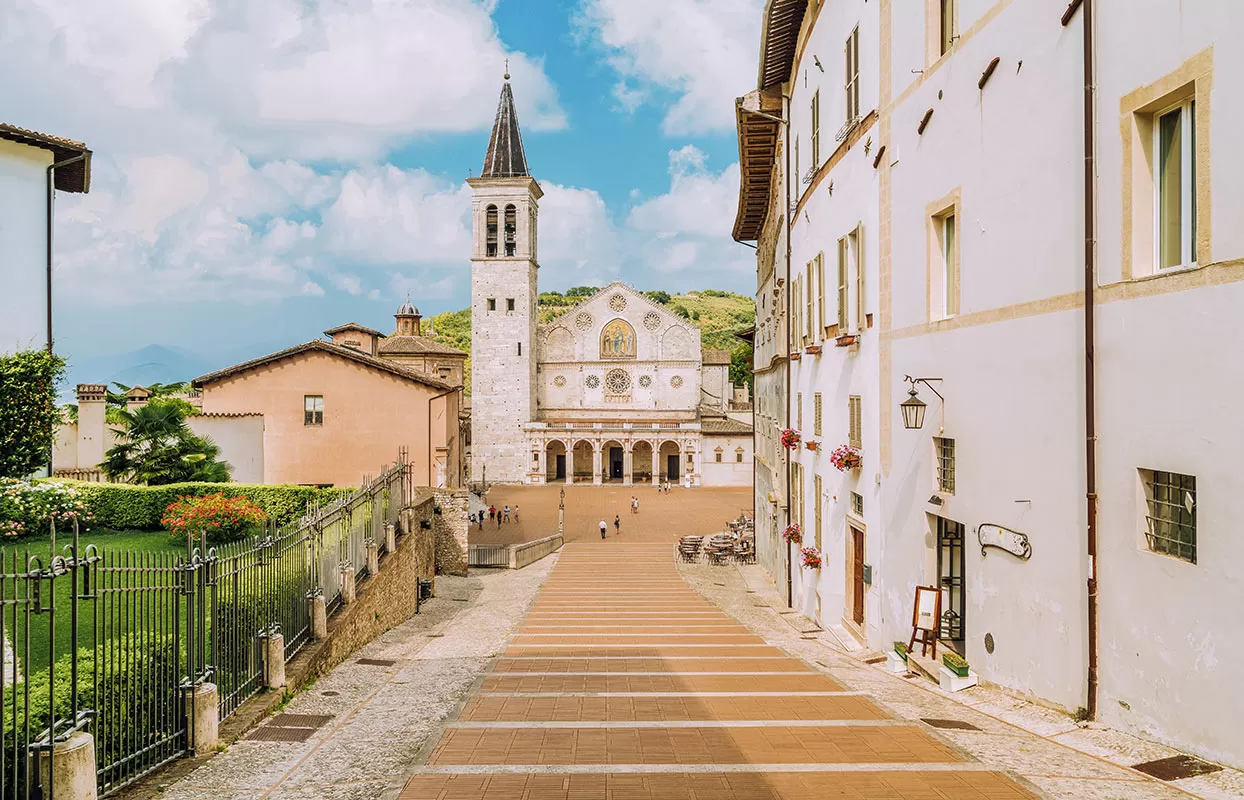
This town in the foothills of the Apennines also features a 1st-century AD Roman theatre often hosting ballet performances. The grand Ponte delle Torri bridge, built as an aqueduct in the 13th century, is one of the symbols of Spoleto. Possibly built on Roman foundations, today you can walk along its elevated path to the sacred wood of Monteluco, a spot of pristine natural beauty.
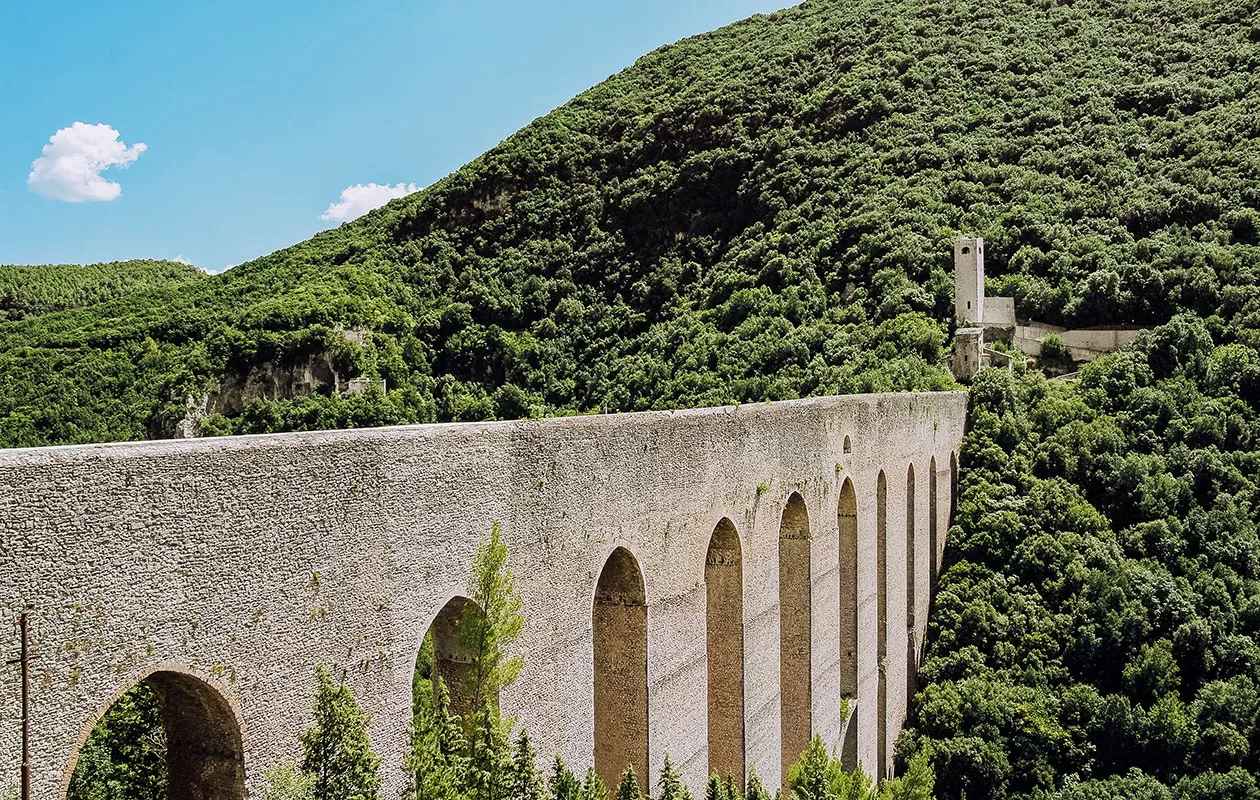
Ponte delle Torri
Don’t miss: between June and July, Spoleto stages the Festival dei Due Mondi, an annual summer music and opera event that attracts artists from all over the world.
33. Visit Spello and its flower festival
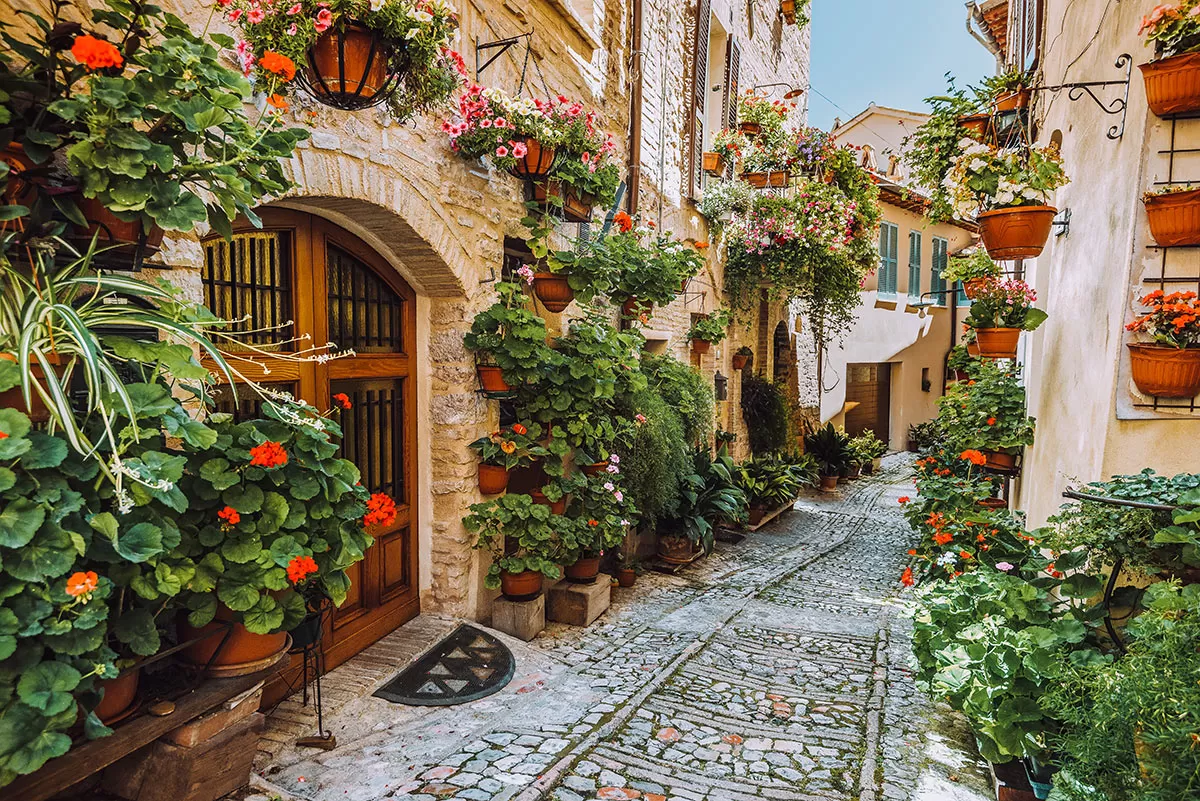
In Spello, you can see perfectly preserved Roman walls and some magnificent frescoes by Pinturicchio inside the 11th-century Church of Santa Maria Maggiore. Another highlight is the 500-metre mosaic-paved area inside Villa dei Mosaici just outside the town centre.
Don’t miss: if you visit in June, you might catch Spello’s famous Infiorata . This flower festival turns the streets into canvases for locals who create beautiful displays using thousands of petals.
For more information: visitspello.it
34. Get a “fool’s licence” in Gubbio
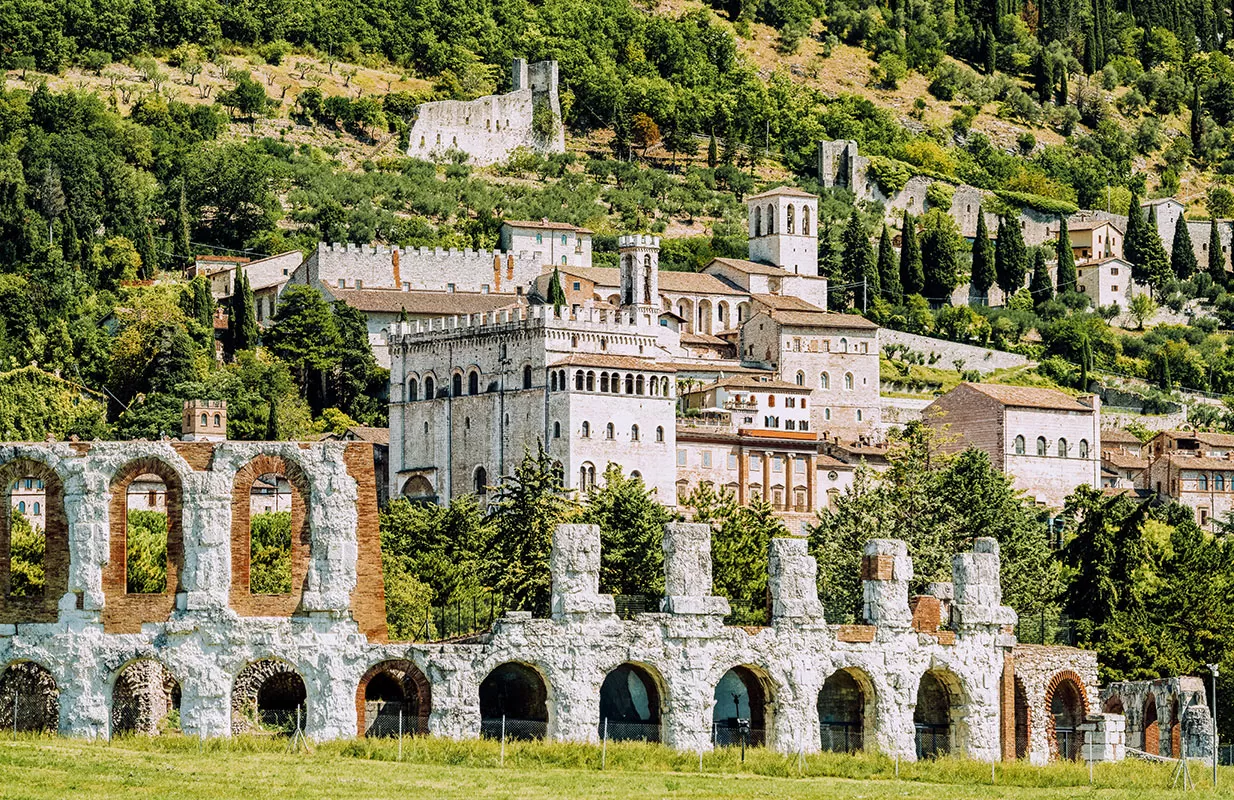
Gubbio and Roman amphitheater
Not only is Gubbio one of Umbria’s oldest towns, but it’s also its craziest! It’s traditionally known as the “City of Fools” because of the ancient practice of awarding honorary citizenship in the form of a “fool’s license” to those who circle the Bargello fountain three times.
Crazy is also how passionate locals are about their biggest festival, the Race of the Candles , which takes place on May 15th. Three massive wooden structures (5m x 300 kg) are carried by the shoulder to the Basilica on Mount Igino. Unlike what you might think, there’s no actual race since they must follow a precise order.
Don’t miss: hop on the scenic cableway connecting Gubbio to the top of Mount Ingino for some wonderful views. Keeping with the town’s crazy vibe, the cable cars are open-air human-sized birdcages!
35. Enjoy the Umbria Jazz festival
The Umbria Jazz Festival is held in July every year in Perugia. A must for jazz lovers, it’s also one of the top music festivals in Italy. It’s been going on since the early 1970s and attracts jazz experts and music enthusiasts from across the globe.
Over ten days, every corner of Perugia’s historic centre becomes the stage for exciting Jazz performances of all kinds. The performers’ lineup is also impressive, with past editions featuring stars like Tony Bennett, Elton John, Alicia Keys, and Carlos Santana.
Don’t miss: take a look at the official program, as there are always some great free outdoor concerts around town to complement the main stage performances.
For more information visit: umbriajazz.it
36. Go on a hot air balloon ride
Among the top things to do in Umbria, taking this top-rated hot air balloon ride is undoubtedly one of the most fascinating. Flying over the verdant valleys and mountain peaks of Italy’s green heart aboard a balloon basket is certainly an adventure you’ll never forget. Tours typically take off at sunrise or sunset and last approximately a couple of hours. The ride is often complemented with a delightful breakfast or aperitif.
Don’t miss: Make sure you pack your best camera because hot air ballooning 2,000 feet up offers fantastic photo opportunities. Check availability and book your ride here.
Ready to plan your trip to Umbria? To discover more delights and get more details visit umbriatourism.it. I wish you safe travels and buon viaggio! (Have a great trip!)
Don’t be treated like a tourist. Learn Italian with my 80/20 method
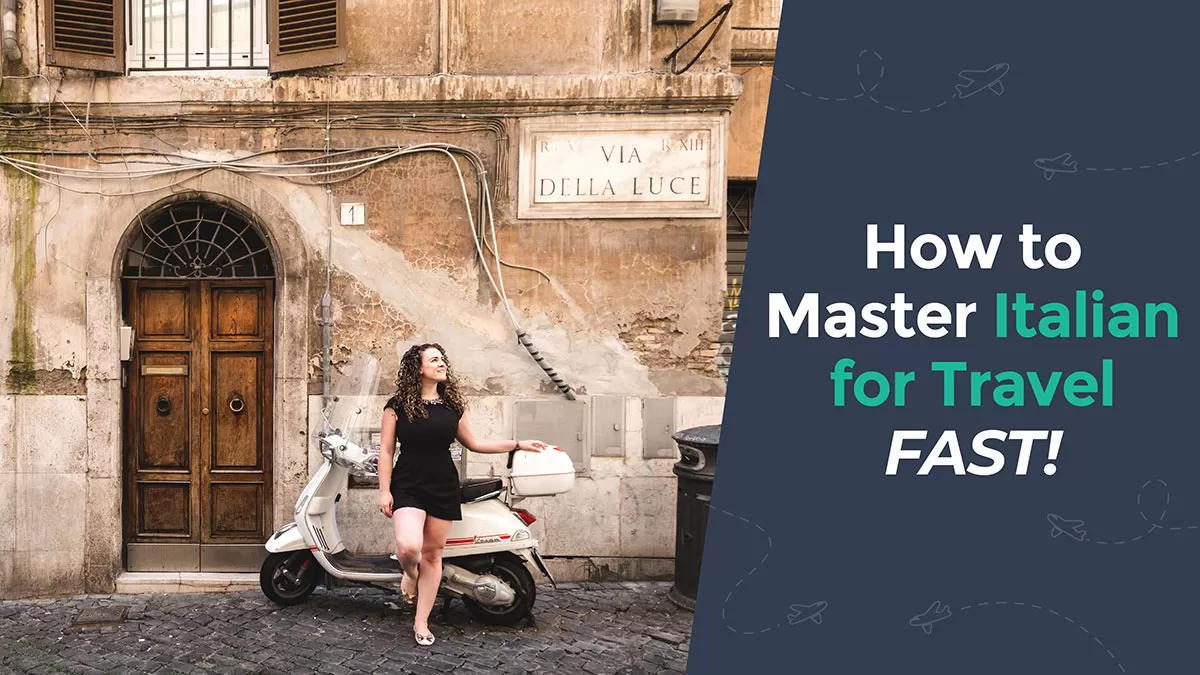
Travelling to Italy? Don’t be treated like a tourist! Live your best travel experiences and learn Italian for less than the cost of eating at a tourist trap restaurant or a taxi driver who has “taken you for a ride”. I’ve made it easy for you to master the Italian language so you can create lifelong memories as you mingle with locals , get local tips , avoid tourist traps , and make new friends . Who knows, you might even be invited over for afternoon tea by a lovely Sicilian family like I was! Read all about how speaking Italian changed my life and check out my online Italian video course here.
Here’s what my students are saying:

I really enjoyed the Intrepid Italian course, it certainly exceeded my expectations. The learning methodology is great, and easy to follow and found that I progressed much faster in the last 4 weeks than I ever did on my own or using other language apps. Grazie mille Michele, I can’t wait until I can put my new skills into action! – Roma Small
Click here for instant access!
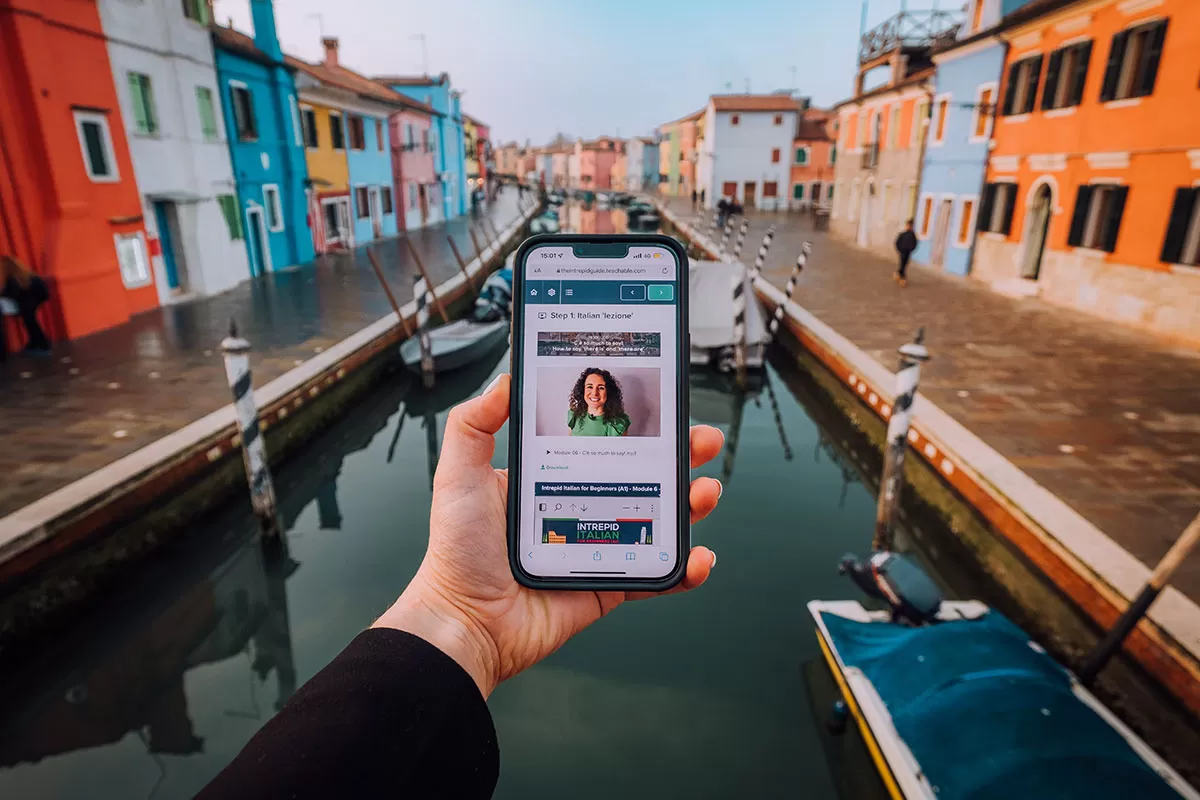
Don’t miss these Italy travel guides
- 33 Italy Travel Tips That Will Save You Time, Money and Disappointment
- Best Time to Visit Italy // PLUS Tips to Avoid Crowds and SAVE $$$
- Rome Tips and Tricks: 27 Things You Should Know Before You Go to Rome
- 21 Best Things to Do in Venice, Italy (From Rooftop Views to Private Tours)
- Top 10 Things to Do in Rome That Aren’t On Your List
- Top 10 Absolute Best Views of Rome That Will Blow Your Mind
- Domus Aurea: Visit Rome’s Secret Hidden Palace
- Self-Guided Trastevere Walking Tour: Where to See Rome’s Most Beautiful Streets
- 12 BEST Things to do in Burano, Italy (Tips from a Local Guide)
- Absolute Best Things to do in Verona, Italy | 26 Must-See Attractions
- Top 7 Authentic Tours and Experiences in Rome [Run by Locals]
- Lakes, Mountains & Castles: 21 Best Things to do in Trento, Italy
- Italy Fun Facts: 126 Unique Things You Didn’t Know About Italy
- 29 Amazing Day Trips from Rome By Train, Car & Guided Tour
- Where to Stay in Rome | Best Hotels and Best Neighborhoods to Stay in Rome
- Where to Stay in Verona: Best Hotels in Verona Neighbourhoods
- Where to Stay in Venice | Best Hotels in Venice for Every Budget
- 27 Best Things to Do in Trieste, Italy (PLUS Map, BEST Tours & Day Trips)
- THE 15 BEST Hotels in Trieste, Italy [2023 Edition]
- What it’s like Staying at DoubleTree by Hilton Trieste
Like it? Pin it for later!
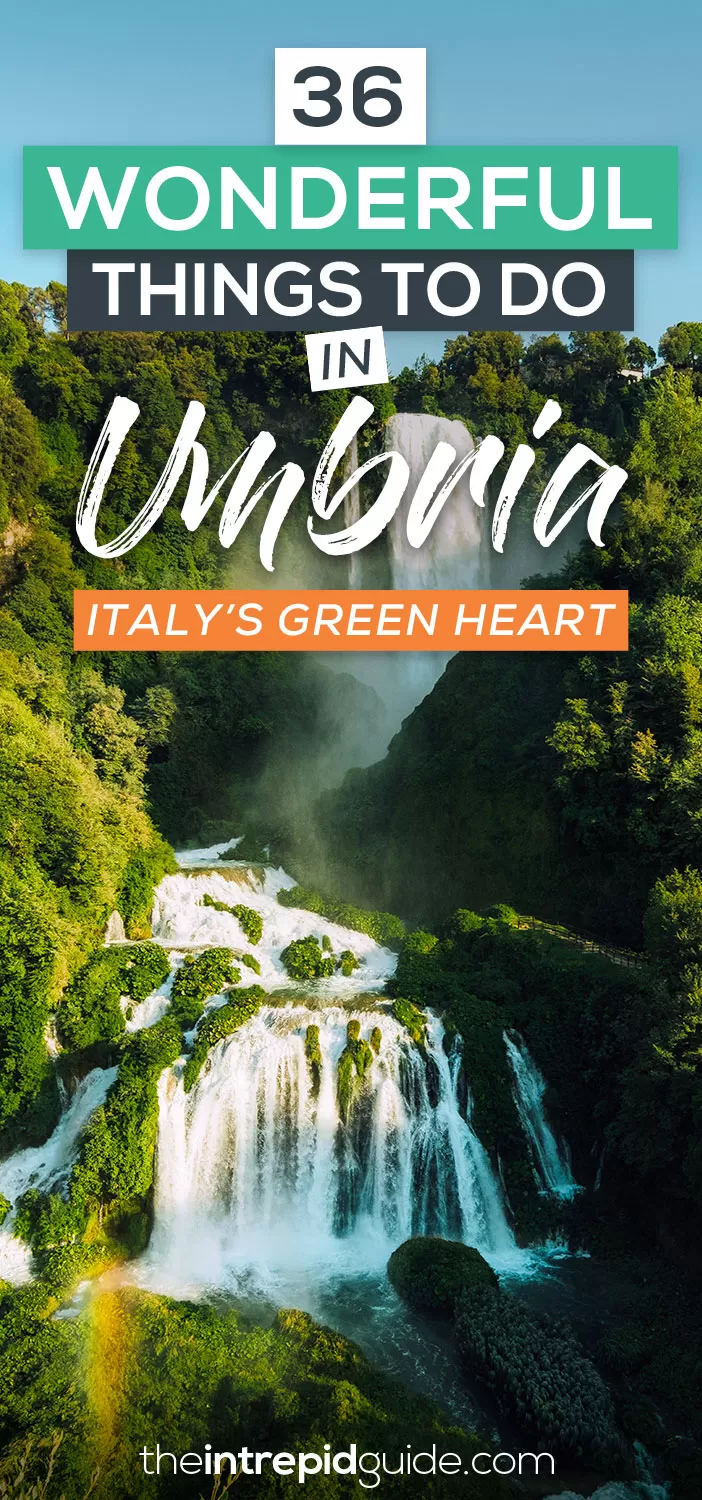
Over to you!
Got a question about visiting Umbria? Let me know using the comments section below or join me on social media to start a conversation.
Thanks for reading and I hope you enjoyed this post.
Like what you see? Subscribe using the form below to have all of my posts delivered directly to your email.
Michele creates language learning guides and courses for travel. What separates her from other instructors is her ability to explain complex grammar in a no-nonsense, straightforward manner using her unique 80/20 method. Get her free guide 9 reasons you’re not fluent…YET & how to fix it! Planning a trip? Learn the local language with her 80/20 method for less than the cost of eating at a tourist trap restaurant Start learning today!
13 Iconic Italian Songs for Learning Italian Faster (with Lyrics and Playlist)
26 italian series on netflix for learning italian (beginners to advanced), leave a comment cancel reply.
Save my name, email, and website in this browser for the next time I comment.
This site uses Akismet to reduce spam. Learn how your comment data is processed .

If you don't know where you are , how do you know where you're going? Find out how well you know Italian grammar today!
The Rough Guide to Tuscany & Umbria
4.2, 32 reviews
Practical travel guide to Tuscany & Umbria featuring points-of-interest structured lists of all sights and off-the-beaten-track treasures, with detailed colour-coded maps, practical details about what to see and to do in Tuscany & Umbria. The Rough Guide to Tuscany & Umbria also includes details on how to get there and around, pre-departure information, as well as top time-saving tips, like a visual list of things not to miss in Tuscany & Umbria, expert author picks and itineraries to help you plan your trip.
The Rough Guide to Tuscany & Umbria covers: Florence; around Florence; Lucca and Northern Tuscany; Pisa, the Central Coast and Elba; The Maremma; Siena; the Sienese hill-towns; Southern Tuscany; Arezzo Province; Perugia and Northern Umbria;
Assisi and the Vale of Spoleto; Spoleto and the Valnerina; Orvieto and Southern Umbria.
Inside this travel guide you'll find:
RECOMMENDATIONS FOR EVERY TYPE OF TRAVELLER
Experiences for every kind of trip to Tuscany & Umbria, from off-the-beaten-track adventures in Orvieto to family activities in child-friendly places, like Alpi Alpuane or chilled-out breaks in popular tourist areas, like The Uffizi.
PRACTICAL TRAVEL TIPS
Essential pre-departure information including Tuscany & Umbria entry requirements, getting around, health information, travelling with children, sports and outdoor activities, food and drink, festivals, culture and etiquette, shopping, tips for travellers with disabilities and more.
TIME-SAVING ITINERARIES
Carefully planned routes covering the best of Tuscany & Umbria give a taste of the richness and diversity of the destination, and have been created for different time frames or types of trip.
DETAILED REGIONAL COVERAGE
Clear structure within each sightseeing chapter includes regional highlights, brief history, detailed sights and places ordered geographically, recommended restaurants, hotels, bars, clubs and major shops or entertainment options.
INSIGHTS INTO GETTING AROUND LIKE A LOCAL
Tips on how to beat the crowds, save time and money and find the best local spots for hiking, cycling, walking, sailing or climbing and caving.
HIGHLIGHTS OF THINGS NOT TO MISS
Rough Guides' rundown of Pisa, Fiesole, Chianti and Prato's best sights and top experiences helps to make the most of each trip to Tuscany & Umbria, even in a short time.
HONEST AND INDEPENDENT REVIEWS
Written by Rough Guides' expert authors with a trademark blend of humour, honesty and expertise, to help to find the best places in Tuscany & Umbria, matching different needs.
BACKGROUND INFORMATION
Comprehensive ' Contexts' chapter features fascinating insights into Tuscany & Umbria, with coverage of history, religion, ethnic groups, environment, wildlife and books, plus a handy language section and glossary.
FABULOUS FULL COLOUR PHOTOGRAPHY
Features inspirational colour photography, including the stunning Monti Sibillini and the spectacular The Campo.
COLOUR-CODED MAPPING
Practical full-colour maps, with clearly numbered, colour-coded keys for quick orientation in Florence, Siena and many more locations in Tuscany & Umbria, reduce need to go online.
USER-FRIENDLY LAYOUT
With helpful icons, and organised by neighbourhood to help you pick the best spots to spend your time.
Description
Book details.
This title is a part of Rough Guides Main Series
Practical travel guides series covering countries, cities and regions, with detailed factual travel tips, perfect for independent, long-stay, backpacking and budget-conscious travellers seeking comprehensive travel information and off-the-beaten track experiences
Extensive practical travel information including getting there, getting around, climate information, safety tips, accommodation explanations, food & drink advice and shopping essentials
Curated author picks with destination highlights at the beginning of each guide
Ready-made itineraries covering every corner of the destination
Colour-coded places chapters with detailed coverage of places and sights, presented in a points-of-interest structure
Extensive recommendations for accommodation, restaurants, shops and leisure activities for all budgets
Colour-coded detailed maps with marked-up key sights
Insights on history and nature highlights
Easy to use, newspaper-style layout
All guides published from January 2021 are printed on paper from responsible sources verified to meet FSC’s strict environmental and social standards
Free eBook with each printed guide published from May 2019
Format: 129 x 198mm
Price: £14.99-£26.99 | $13.99-$34.99
Extent: 616–1208 page
BOOK DETAILS
Which payment options can I use in the Rough Guides Shop?
You can pay with credit card : Visa, MasterCard, American Express, and via PayPal .
How long will it take to receive my order from the Rough Guides Shop?
If you’ve ordered an ebook, it will be delivered to you via email immediately after your purchase.
For printed book orders, we offer DPD next day delivery in the United Kingdom and Northern Ireland and standard (2-8 days), priority (1-3 days) delivery options in the USA.
Please be aware that the delivery times are based on when your item was dispatched and not when you ordered your item. Unless stated otherwise, we intend to send items on the next available business day.
Currently we do not provide a tracking number for your order.
How can I contact Rough Guides about a shop order?
You can contact our shop team at " [email protected] ".
To help our team reply faster, please copy and use one of the following email subject lines:
- "Book shop: orders, shipping, returns"
- "Website: general usage and technical problems"
- "Guide books: corrections and other questions"
- "Tailor-made travel"
Customer Reviews
4.2 out of 5, 32 global ratings
Nothing like the book
Do not buy this, it is very difficult to navigate and contains very little of the content of the original guide. Useless.
Informative
Well received it was a gift
Very helpful
Very helpful, and useful to have in this format for just the area we were travelling to.
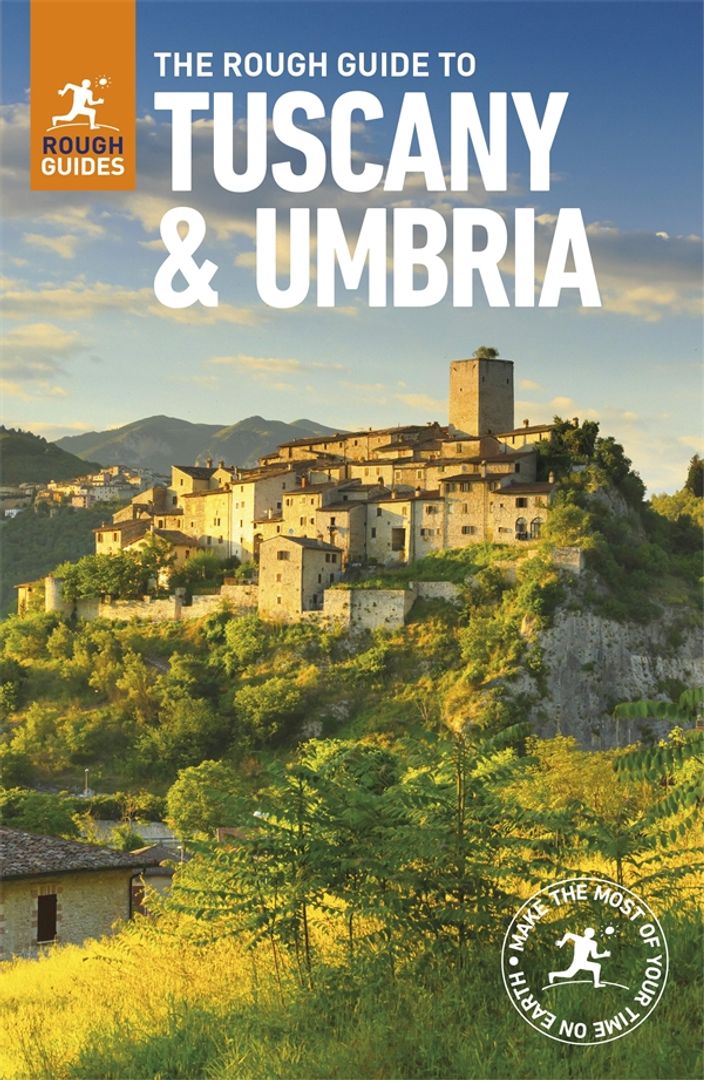
Reviews (32)
You might also love.

Pocket Rough Guide Rome

Pocket Rough Guide Venice

Insight Guides Tuscany

Pocket Rough Guide Walks & Tours Naples & the Amalfi Coast

Pocket Rough Guide Florence
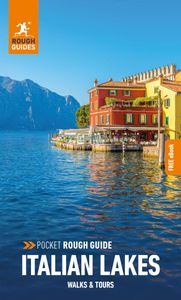
Pocket Rough Guide Walks & Tours Italian Lakes
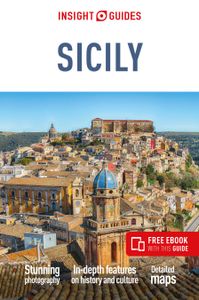
Insight Guides Sicily

The Rough Guide to the A-Z of Travel
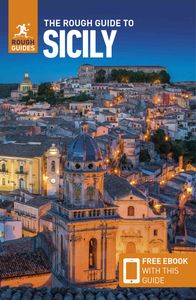
The Rough Guide to Sicily

The Rough Guide to Top LGBTQ+ Friendly Places in Europe

The Rough Guide to Romania

The Rough Guide to Dorset, Hampshire & Isle of Wight

The Mini Rough Guide to Scotland

The Rough Guide to Rewilding in Britain

The Mini Rough Guide to Bucharest

The Mini Rough Guide to Oslo

The Rough Guide to Kent, Sussex & Surrey

Insight Guides The Silk Road
Travel Tips
- Attractions
- Things to do
- Food & Wine
- Art & Culture

Rest of the world
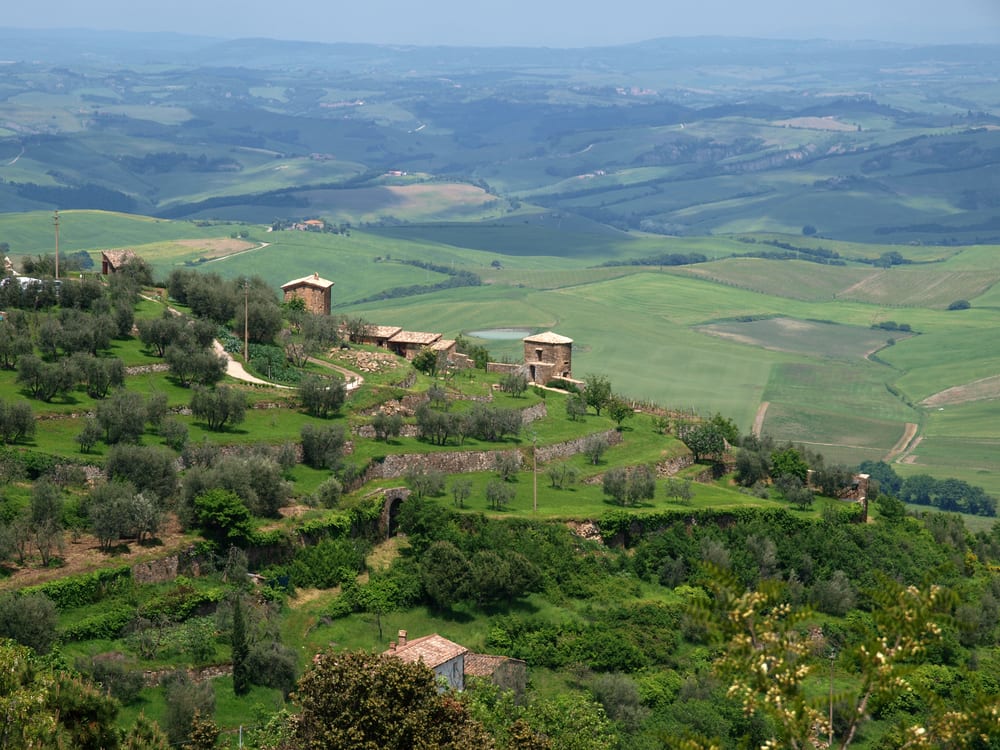
Umbria Or Tuscany: Which Region Should You Travel To?
July 4, 2023
Umbria and Tuscany are, without a doubt, two of Italy’s most beautiful regions. And they have a lot in common. Both are famed for their rolling hills and vineyards, medieval hilltowns and fantastic food. They’re also right next to each other, located right in the center of Italy. But which should you visit – Umbria or Tuscany?
First, keep in mind that the regions are different. Just ask Italians who live in Umbria or Tuscany themselves – they have quite the rivalry! Trying to decide whether to do a day trip or a longer trip to one of the two regions? Here’s some help!
Table of Contents
Umbria Or Tuscany: How to Choose
Both regions have spectacular scenery.
The view from Montefalco, Umbria. Gorgeous!
If you’re after rolling hills and cypress trees, olive groves and sparkling lakes, medieval hilltowns and spots of thick forest, either region will do the trick.
If you’re looking for the sea or beaches, head to Tuscany
The one thing Umbria doesn’t have? A coastline. Umbria is land-locked, so if you’re dead set on making it to the sea, then Tuscany is your best bet. Just keep in mind that most of Tuscany’s best beaches are in the Maremma area, which is a more than a two-hour drive from Florence.
Both Umbria and Tuscany are easily reached from Florence
By car from Florence, you can get to both Tuscany (of course) and Umbria easily. You’re in Tuscany, after all, and reaching some of Tuscany’s more beautiful countryside areas—the Chianti wine-making region, for example—takes just a half an hour’s drive . It’s a little further to get to Umbria, but still close. In an hour and a half on the road, you cross the border from Tuscany into Umbria and can be in the area of Lake Trasimeno, Chiusi, and Perugia. (On a train, Florence to Perugia takes two hours).
If you want to take in the grandeur of Tuscany (and sip some fine Chianti) without having to navigate the country roads, we’ll drive you ourselves on our Tuscan Day Trip from Florence .
Umbria is easily reached from Florence or Rome
Meanwhile, from Rome, Tuscany’s a bit farther than Umbria. It takes two hours to drive from Rome to Pitigliano, a lovely town right over the border from Lazio in Tuscany. Umbria is much closer; it only takes one hour to drive to the medieval hill town of Narni, or 1 hour 15 minutes to drive to Orvieto. On the train, both Rome to Orvieto and Rome to Narni-Amelia take as little as an hour.
If you’re planning on taking public transport around Umbria, don’t miss our post on how to travel Umbria by train and bus .
Both regions have hidden, off-the-beaten-path gems…
Don’t let friends who have traveled to Tuscany and only visited the tourism hotspots tell you anything different: Tuscany does have medieval towns and stretches of countryside that remain unvisited by big tour buses and untrampled by tourist hordes.
Off-the-beaten-path (literally!) in Tuscany’s Val d’Orcia
…but Umbria may have more of them
Because Umbria is less famous than Tuscany, though, there are more of these off-the-beaten-path gems in Umbria. Where Tuscany’s most beautiful towns and rural areas have become famous—and, therefore, more touristy—Umbria’s best offerings remain little-known. These include Spoleto, Spello, Todi, Montefalco, Norcia, Narni, Amelia, Bevagna, even Perugia. And that’s not to mention all of the really tiny towns that receive no tourism whatsoever, towns that you discover simply by driving around the countryside.
You can find deals in Umbria or Tuscany…
Especially if you do go off the beaten path.
…but, in general, Umbria is cheaper
There’s less tourism in Umbria (although the region is getting more popular all the time), so most things, from eating out to staying at a villa or agriturismo , will cost you less than it would at its Tuscan equivalent.
Umbria and Tuscany both produce excellent wines…
Although it’s a much smaller region, Umbria produces some great wines, like the world-renowned Sagrantino wines or its DOC-protected Orvieto wines.
…but Tuscany produces more, and has some of Italy’s most famous wines
A vineyard in Tuscany’s famed Chianti region
If you’re determined to try Italy’s most famous labels, then Tuscany is your best bet. Tuscany has the most famous, and established, labels. After the Veneto and Piedmont, Tuscany produces Italy’s highest number of DOC/DOCG wines, and wine country is spread throughout the whole Tuscan wine region.
Which wines are produced in Tuscany ? Chianti, Brunello di Montalcino, Vino Nobile di Montepulciano, and Vin Santo are some of the big guys, not to mention the Super Tuscans—wines that are considered some of Italy’s best, but don’t follow the restrictions that govern DOC or DOCG-protected labels.
Still unsure which region to choose? Why not visit both?
After all, they are right next to each other. And they each have a lot to offer!
by Walks of Italy
Book a tour.

Pristine Sistine - The Chapel at its Best
1794 reviews

Premium Colosseum Tour with Roman Forum Palatine Hill
850 reviews

Pasta-Making Class: Cook, Dine Drink Wine with a Local Chef
121 reviews

Crypts, Bones Catacombs: Underground Tour of Rome
401 reviews

VIP Doge's Palace Secret Passages Tour

Legendary Venice: St. Mark's Basilica, Terrace Doge's Palace
286 reviews
Stay up to date with travel tips, local insights and all things Italy on our social channels!
Subscribe to our Newsletter
Get curated Italy travel tips delivered to your inbox!
Your browser is out-of-date!
Update your browser to view this website correctly. Update my browser now
- Maps of Italy >
Umbria Map & Travel Guide
How to visit italy's green heart.
You've heard it before, Umbria: Italy's green heart. Our map of the region of Umbria shows the most popular places to visit.
Why go to Umbria? It's got a great cuisine, great cities, and it's less populated than neighboring Tuscany.
Umbria inclues only two provinces: Terni and the larger Perugia province.
Table of contents
- Umbria Cities Map
Main Cities of Umbria
- Getting Around Umbria Without a Car
- Umbrian Cuisine
When to Go to Umbria
Umbria tours.
- Country Slow Living in Umbria
Map of Umbria: Towns and Villages to Visit

Getting Your Bearings in Umbria
A glance at the map of Umbria shows three likely east-west paths that can be incorporated into your Italian tourist itinerary. A cut across the northern section, from Tuscany to Citta di Castello to Gubbio and on to some pretty fascinating destinations in Le Marche like Fabriano or the monastery of Fonte Avellana would make a fine week to ten day itinerary. A stop in little Pascelupo for tourists looking for a place of peace perched in the Apennines in view of the 11th century hermitage of San Girolamo might be in order as well.
It is the center of Umbria that's packed with top tourist destinations, from the historically significant body of water called Lake Trasimeno to tourist favorites like Perugia, Assisi , and Spello, to smaller places like ceramics hot-spot Deruta and the walled wine and olive oil town of Torgiano. Wine aficionados looking for an experience quite different than a tasting in a large winery in the US will head for little Madrevite to the east of the lake and not far from the famous Tuscan wine towns of Montalcino and Montepulciano. See the Etruscan tomb on their property, then taste some of the wines; Glanio is fantastic. If you have an apartment, you can stock up on fine Umbrian olive oil and on an ancient dried bean reborn that you don't have to soak before cooking: Fagiolina del Trasimeno .
The southern itinerary takes you from the Etruscan towns of northern Lazio in the historical region of Tuscia (where lies the tourist favorite Civita di Bagnoregio) to dramatically perched Orvieto and on to Todi, Spoleto, and Norcia, famous for its preserved pig parts and views of Monte Sibilini National Park. On the Le Marche side you'll find the compelling destination of Ascoli Piceno .
There is no shortage of attractions in Umbria.
Umbria's largest city is Perugia , a provincial capital of around 166,000 people. located in the heart of the region. It is a very interesting hill town, girded in Etruscan, Roman and Medieval walls, that tourists often miss. The piazza IV Novembre, shown below, holds the newly cleaned and restored Fontana Maggiore adjacent to the Sala dei Notari and the Duomo . The Tourist Office is here. The big street, Corso Vannucci, is the historic main street in town, taking you past the Palazzo dei Priori and other historic palazzi. At the other end of the Corso is the Piazza Italia and a good place to eat (and stay), the Albergo Ristorante La Rosetta . Other restaurants we like are Osteria Il Gufo and, near the university, Dal mi Cocco .
There's a train station in Perugia, but it's at the base of the hill. You can walk up (way up!) in about 20 minutes. The easier way is to take the bus right outside the train station or the new mini metro. The advantage of walking (or of parking your car in the underground lot in Piazza Partigiani) is that you can walk (and take escalators) through the buried Rocca Paolina , the first fortress to be build in Perugia. And...it's free. If you're already at the top, look for the escalator in the Piazza Italia to descend into the Rocca.
Perugia is host not only to the Perugia Jazz festival, but to the Universita per Straineiri, where you can take Italian language courses . We did and it was a fabulous experience.
Perugia Travel Guide
Rent a car in Perugia

Orvieto is a picturesque medieval hill town known for its stunning 14th century cathedral, specifically the mosaic facade that sparkles in the sunlight and is especially grand after a rainstorm. You can see the underground city carved out of the soft tufa or head down the slopes of the hill and see the Etruscan tombs--and get a context for them at the national Archaeological Museum which happens to be next to the Duomo Museum in Piazza del Duomo.
Find out more about Orvieto
Todi isn't a name that comes up on many tourist itineraries, but the hill town overlooking the Tiber makes an easy and compact visit; the main monuments pretty much all front on the Piazza del Popolo, one of Italy's finest and the background for lots of movies.
Todi is the focus of a famous wine, Grechetto di Todi, which you can have with the local baccala fritto. Other things to try are the lentil soup and boar with the Umbrian red Sagrantino.
The big market day is Saturday in Todi.
Todi is 46 km from Perugia. The train from Perugia to Todi takes 32 minutes. It departs from Pretola station every four hours.
Find out more about Todi
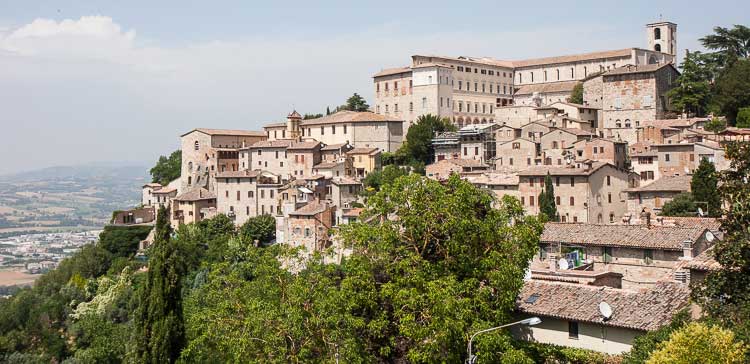
Assisi is certainly one of the most important destinations in Umbria. Just past the edge of town is Saint Francis Basilica, where you can see the tomb of Saint Francis. Adjacent to the Basilica is the new Bosco di San Francesco, a path through a woodland dedicated to Saint Francis. At the end of the trail is the recommended Osteria il Mulino with great Umbrian cuisine. For detailed recommendations on what to see and do in Assisi, use the buttons below.
Assisi Travel Guide Lodging: Hotels and Apartments
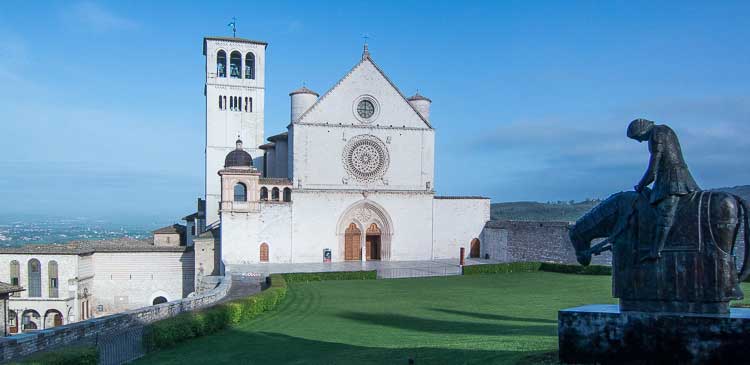
Castiglione del Lago
Rebecca Winke, former owner and host of Brigolante Guest Apartments in Assisi, describes the lakeside town of Castiglione:
"...a postcard-perfect resort town perched on a small promontory jutting out into the lake, is one of the lake's most visited destinations. This popularity comes as no surprise, as its panoramic position above the water, dramatic Rocca del Leone fortress with walkable parapets, plethora of restaurants and shops, and languid, friendly air make it a perfect base for visiting the surrounding area or a day-trip."
Take a tour of the castle and surrounding lake and prepare to relax.

Corciano is one of those beautiful, hill town walled villages designated as a Borghi Più Belli D'Italia. It's about half way between Perugia to Lake Trasimeno. Don't miss the Archaeological Museum, here called the Antiquarium comunale . It's all about the Etruscans and their tombs, and many of them still have the original colors painted on.
Also interesting is the Museo della civiltà contadina , a house restored and furnished with tools and goods reflecting what it would have been like in the "olden days" for a family that worked the land.
You need a car here to get the most of a visit, since most of the lodging and many of the restaurants are in the valley outside the double walls of the village.
Places to stay in Corciano
How to Get Around Umbria Without a Car
The major cities and a surprising number of small towns are covered by Umbria's rail system, augmented by buses when necessary. We have a map of the routes and information on a new transportation pass that gets you around the entire region. Just click the button below.
Umbrian Cuisine: What to Try When You're There
Umbria has many culinary specialties, from the forementioned Fagiolina del Trasimeno on the humble side to the spaghetti or strangozzi with truffles on the luxury side. (Umbria is Italy’s largest producer of black truffles) In addition to the Trasimeno beans, you might wish to try Cannara onions and Trevi black celery. The fresh pasta in Umbria is often made without eggs.
When they're available, you hardly see an Umbrian menu that doesn't feature black truffles, either with pasta or as crostini al tartufo on an appetizer plate.
Umbria's town of Norcia is the Italian center of cured meats, so prominent that norceria is a term for a place that sells salumi anywhere in Italy. Just
Top grains and legumes include the DOP farro from Spoleto and lentils from Castelluccio as well as several kinds of broad beans.
For unique wines to try, the red Sagrantino of Montefalco is the one you should search for. Quality versions carry the DOC and DOCG versions on the label.
The best times to go are May though June or September through October. November and December are likely to have the most precipitation. While summer isn't particularly stiffing, the crowds do tend to ruin the atmosphere a bit. After all, you might want to attend Perugia's Umbria Jazz in July.
Perugia Weather and Historic Climate
Even if you're seeing Umbria on your own, there are times when you need things explained to you. Viator offers many walking tours of popular cities in Umbria like Assisi, Perugia and Orvieto, plus tours to smaller towns like Montefalco and Bevagna.
Umbria Tours - Viator
Country Slow Living in Central Umbria
Perhaps you'd like to take a self-catering apartment as a hub for your Umbria exploration. Perhaps you wouldn't mind a cooking class. Maybe you want to buy some olive oil from a reputable producer who is particularly enthusiastic about fine olive oil who happens to also be your host. Get thee then to Fontinaro .
If you would like a truffle tour with substance, and wish to live in luxury while surrounded by a self-sufficient village in which each landowner must be related to the original occupants in the 1400s, you might head over to The Black Truffle Lodge in the tiny village of Pettino near Trevi and Foligno. You don't even need a car; they'll pick you up at a nearby train station if you make arrangements in advance.
Have a blast in Umbria. It's one of my very favorite regions of Italy.
And by all means get out in the Umbrian countryside. It is indeed green, even in iffy weather...
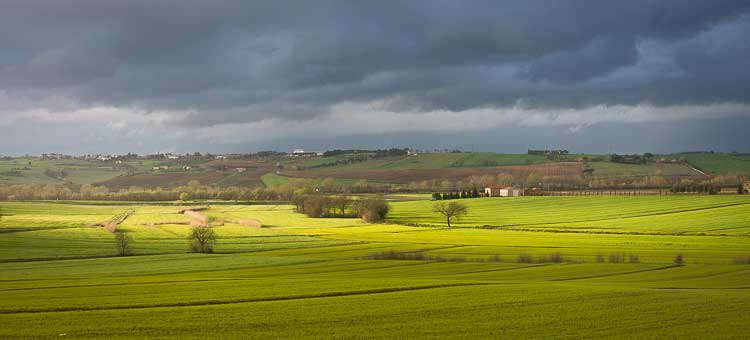
Planning a Trip to Italy?
Here are some travel planning tools that are especially useful if you're planning your first or second trip to Italy.
- Travel Planning Timeline : Learn what you need to plan when.
- What Will an Italy Vacation Cost? : Tools for budgeting your Italian vacation.
- Unplanned Attractions : Save time for the good life in Italy.
- 2024 TRAVEL UPDATE
- Work with us
- Beyond Bologna
- Italy Travel Guide
- Itineraries
- Accommodation
- Regions of Italy
- Ultimate Italy Travel Planner
- City Planners
- Essential Guides
- Italy themed gift ideas
- Trip planning services
UMBRIA TRAVEL GUIDE
Known as the green heart of Italy, Umbria is a region in Central Italy that begs to be discovered. Keep reading to find out why in our Umbria travel guide.
Best known for the city of Assisi, the region has much more to offer than simply being the birthplace of Saint Francis. It’s a little more wild than its Tuscan neighbor, and a trip to the area leaves you with a sense of deep, inner relaxation.
Whether you’re a lover of truffles , shimmering lakes, lush mountains, full bodied red wines, hilltop towns with incredible vistas, sagra (unique food festivals), or simply searching for a lesser traversed part of Italy, you’ll find it all right here in Umbria.
Where is Umbria
Umbria is located in Central Italy and borders Tuscany, Lazio, and Le Marche. Whilst it’s a landlocked region, there are many beautiful lakes to discover including the best known Lake Trasimeno. It’s south of Florence, Milan, and Venice and north of Rome.
By car, it takes just under two hours to reach the capital, Perugia, from Florence and an hour and a half to reach Orvieto from Rome.

Map of Umbria
Main cities and towns in umbria.
There are so many beautiful cities and towns to discover when visiting Umbria. Have a listen to our podcast episode with author Michele Damiani on some of her favourite Umbrian towns to discover. Some of the most important or interesting towns to add to your trip include:
- Orvieto : This beautiful hillside city is famous for its magnificent Duomo. Hop on an underground tour to explore more of Orvieto’s Etruscan roots or simply relax at one of the many restaurants and enjoy the local food and wine.
- Assisi : A UNESCO World Heritage Site , you can’t miss a trip to the Basilica di San Francesco. It’s been on the pilgrim route since the 13th century as the birthplace of St Francis. Assisi is another great place to try Umbrian cuisine. The best meals are to be had on an outdoor terrace as the sun casts a glow over the valley below.
- Perugia : The Medieval capital of Umbria is well-known for its fantastic chocolate, and University for Foreigners of Perugia where many come to study the Italian language. Each year the city’s famous jazz festival is a highlight of the region’s calendar.
- Spello : This town is seriously flower-obsessed. So much so that they host the Infiorata festival every year where the town is decorated in flower tapestries created by competing teams from the community to celebrate the feast of Corpus Domini.
- Todi : A gorgeous Medieval hillside town dating back to the 8th century BC, Todi is rich in art and nature and gloriously free from crowds. It’s a great place to shop for artisan made wares like linens and ceramics.
- Gubbio : One of the most ancient towns in the region, Gubbio is renowned for its Roman ruins, Medieval aqueduct and charming hillside streets. Take the birdcage chairlift to the Basilica of Sant’Ubaldo for wonderful views over the town.
Top things to do in Umbria
There are a broad range of activities to suit every kind of traveler in Umbria. Whether you’re a foodie, a history buff, or nature lover, prepare to be wowed with the kinds of experiences you can have in the area. Some of the best activities on a trip to Umbria include:
Explore hilltop towns
Get lost in the Medieval streets in one of the many hilltop towns in the area like Gubbio, Todi, and Orvieto. Make sure your camera is handy at golden hour to capture the incredible views and magical light.
Go truffle hunting
Did you know Umbria is famed for its black truffles? Book a trip with a truffle hunter for an unforgettable experience watching the hunter and his trusty dog hunt through the forest for delicious truffles in the Umbrian hills. Then enjoy your finds shaved over pasta.
Enjoy tasting local wines
Umbria is renowned for its full bodied Sagrantino red wines and Montefalco Rosso. Head to one of the many wineries around Montefalco for a tasting, like biodynamic Fongoli or if you prefer white wines, try Grechetto and Trebbiano near Orvieto at family-run Cantine Zanchi .
If you like your wine tasting with a view, check out this picnic experience at Saio Assisi.
Visit incredible churches
Take a guided tour and admire the architecture and splendid art of the Duomo (Cathedral) of Orvieto , the Basilica of St Francis , the Duomo of Spoleto, and so many more.
Go swimming in Lake Trasimeno
Umbria gets very warm in the summertime so there’s nothing better than a refreshing swim in the cooling waters of Lake Trasimeno. There are nine beaches around the lake to swim at however try those near Castiglione del Lago for the best options.
Pull on the boots and go hiking
If you want to make the most of Umbria’s breathtakingly beautiful landscape, it’s a perfect destination for hiking. Try the hike along the Roman Aqueduct between Collepino and Spello or hire a mountain bike! Discover some of the many hiking itineraries you can enjoy on the Umbria Tourism website .
Go Olive Oil Tasting
Besides truffles and wine, the Umbria is renowned for their delicious liquid gold, aka Extra Virgin Olive Oil. Visit a frantoio , or olive mill, whilst visiting Umbria to learn more about why oil is so important to Umbrians, how it’s made, and of course to taste the final product. Try Frantoio Guadenzi near Trevi for award-winning oil!
Enjoy Ceramic shopping
If you love ceramics or artisan made products, then you absolutely need to include a stop in Deruta. It’s the major centre for the production of maiolica (painted tin-glazed earthenware) with a ceramic history dating back to the Middle Ages. Consider a visit to Grazia Maiolica – the oldest ceramic store in town.
What to eat and drink in Umbria
The style of food in Umbria is very rustic, hearty, and all round delicious! There is an abundance of tasty Umbrian dishes to try with the best local produce including pork sausages and cured meats, legumes, farro, truffles, olive oil, fantastic cured meats, Pecorino cheeses, great bread and interesting wines .
When visiting Umbria, don’t miss trying the following dishes:
- Stringozzi with truffles : The typical pasta of Umbria is made with no or little eggs and paired with a delicious shaving of black truffles when in season.
- Porchetta : Suckling pig is everywhere in Umbria. Try it in a tasty panino with a glass of Umbrian craft beer
- Cacciatore chicken : hunter-style chicken with no tomatoes. Think tender braised chicken with onion and garlic, juniper berries, sage, rosemary, wild fennel (seeds if you can’t get fresh), capers, olives, and some white wine and a squeeze of lemon.
- Ciaramicola : Known as “fiancé cake” this sweet treat is shaped into a ring. The dough is made with a special liquor called Alchermes and coated with lemon meringue that signifies purity.
- Torta al Testo / Crescia : A thick flatbread cooked on a cast iron skillet filled with grilled sausages and cooked spinach or other steamed vegetables and prosciutto.
- Sagrantino or Montefalco Rosso : The typical wine of Umbria is a full bodied red, tannin rich Sagrantino best known for its savoury and spicy red berry notes. Otherwise look out for Montefalco Rosso DOC, which is a blend of Sangiovese and Sagrantino.
Where to stay in Umbria
Given Umbria is a lesser known region, there can be somewhat limited accommodation options in the smaller towns. Whilst the region offers a range of choices including bed and breakfast, luxury hotels, Relais spa hotels, and agriturismi, you won’t necessarily find the full suite of choices available in each town. For that reason, the best bases include Perugia, Orvieto, and Todi.
If your trip includes visiting Assisi, Spello, Gubbio, and the lakes, a home base in Perugia is the perfect choice. There are many great accommodation options to choose from in the city and a variety of comfort and price points. Try the luxurious Sina Brufani , for a 5 star experience in the city centre.
Alternatively, if your trip takes in Tuscany, consider staying in Orvieto as you’ll find easy access to the Val d’Orcia in the Southern part of Tuscany. There are a few hotels in town like 4 star Hotel Palazzo Piccolomini as well as a range of farmhouse and B&B style accommodation.
Or, if you’re looking to be immersed in a smaller hilltop town, consider basing yourself in Todi. There’s the fantastic Tenuta di Canonica , Residenza D’Epoca San Lorenzo Tre and boutique B&Bs like Il Ghiottone who also offer marvelous cooking classes.
To soak up the beautiful countryside, stay in an agriturismo off the beaten track in the Umbrian hills.
When to go to Umbria
The real question is when not to go to Umbria – it’s fabulous at any time of year! Umbrian people are famed for their love of flowers which makes Spring a beautiful time to visit before the weather gets too warm.
The hilltop towns come to life during the summertime and this is one of the best times of year to experience the sagre or ‘food festivals’ in the region. In particular watch out for the Infiorata in Spello, the Umbria Jazz Festival held in Perugia in July or the medieval festivals in Bevagna. The summer season does get very warm, so consider staying somewhere with pool access to cool off.
If you want to experience Umbria in June, our small group summer tours of Umbria depart from Orvieto and visit hilltop towns and Medieval cities, meeting wonderful local people and experiencing the best Umbrian food and wine along the way.
Autumn is another beautiful time to visit with the wine harvest in September and the olive harvest in October/November. A very particular sagra to visit is the Black Celery Festival in Trevi which runs for two days in October. Don’t miss the L’oro di Spello in late November where they celebrate with the new olive oil on bruschetta!
We love the region so much at this time of year and are excited to take you on a cosy fall tour of Umbria to enjoy truffles, chocolate making and more. If you’re interested in the harvest processes and connection to the land, it’s the perfect time to visit.
Christmas time is another marvelous period to consider visiting Umbria. There is the largest Christmas Tree in Italy to see in Gubbio, markets in Perugia and sparkling illuminations in Assisi. Whilst it does get cold, it enjoys a Mediterranean climate so it’s not freezing temperatures to contend with. If you’re hoping for snow, January is your best bet.
How to get to Umbria
Getting to Umbria is easy to reach by plane, car, or train. For travelers coming from Rome, you can reach Orvieto in just a short hour and ten minute train ride, or the capital Perugia, in a couple of hours by car. If you’re traveling south from Florence, it takes just two hours by car to reach Perugia.
There is one main airport in Umbria giving you the option to take a connecting flight from other key cities in Italy like Rome, Florence, Milan, or Venice. Travelers coming from London or other European cities will find it easiest to fly directly into the Perugia International Airport .
How to get around Umbria
Generally speaking a car is the best way to get around Umbria and visit some of the smaller towns, wineries and olive oil mills. Take a look at Auto Europe or Car Rental by booking.com for car rental options – consider picking up your car from Perugia Airport , or the Orvieto train station. Whichever you choose, make sure to check out our guide to renting a car in Italy for useful tips.
For those not keen on driving, it is possible to use trains and local buses to access some of the main towns including Orvieto, Perugia, and Assisi. The train from Rome to Orvieto is very quick and will see you there in just over an hour. You can check the latest schedules and pricing on the Omio website and app .
Meanwhile, regional trains run from Perugia to Orvieto with the quickest taking just under two hours. The train ride from Perugia to Assisi is a very quick 20 minutes, however, you’ll need to take a local bus or taxi to reach the city centre as it’s 5kms away. Check out this article for more information on traveling by train in Italy.
Let’s go to Umbria!
Inspired to visit Umbria? Learn more about the region with our podcast episodes Wine and Wandering in Umbria , Uncovering Umbrian Towns and Villages , and Dishes of Umbria .
Want to discover Umbria with us? For a deeper local connection, why not join one of our Umbria small group tours .

- Euro GBP US Dollar
- Recently viewed
- Travel Guide
- Castellina in Chianti
- Castelnuovo Berardenga
- Castelnuovo di Garfagnana
- Colle di Val d'Elsa
- Forte dei Marmi
- Gaiole in Chianti
- Greve in Chianti
- Grosseto & Maremma
- Lecchi in Chianti
- Montepulciano
- Monteriggioni
- Radda in Chianti
- San Donato in Poggio
- San Gimignano
- San Miniato
- The Chianti
- The Tuscan Coast
- Val d'Orcia
- To Tuscany Experiences
- Family activities in Tuscany
- Wild Swimming in Tuscany
- Local Events & Festivals
- Chianti wine trail
- Shopping in Tuscany
- Tuscany Wines
- Fishing in Tuscany
- Golf in Tuscany
- Cycling in Tuscany
- Self guided walks
- Tennis in Tuscany
- Chianti Sculpture Park
- Star-Gazing in Tuscany
- Thermal Springs
- Hunting Truffles in Tuscany, Italy
- Local wildlife
- Coffee in Italy
- Olive Oil Tuscany
- Flights to Tuscany
- Dietary advice in Italy
- Your health and safety
- Your Heating and Air Conditioning
- Useful Italian Phrases
- Taking your Dog on holiday
- Public transport Tuscany
- Driving in Tuscany
- Local Customs Tuscany
- Keep Your Villa Secure
- Power Adapters
- Drinking water
- Sustainable Tourism
- Art & Culture
- Food & Wine
- Health & Wellbeing
- Travel Tips
- Wildlife & Nature
- Tuscan Recipes
Tuscany Travel Guide
Since 1998, we at To Tuscany have been working hard to become experts in our field. In writing this travel guide, we intend to serve as the best possible online resource for anyone wishing to discover this extraordinary place. Tuscany is found in central Italy, and is beloved around the world for its magnificent landscapes, medieval hilltop towns, and exquisite food and wine. As well as its outstanding natural beauty and internationally renowned cuisine, the region is also the home of Renaissance art and the ancient Etruscan civilisation. Whether you’re feeling lazy or active, thrifty or extravagant, we’ve got you covered. We’ll also provide advice on navigating between the towns, villages and villas, and recommend the best transport and culinary services according to our team of specialists. Come and discover a new way of life.
Get more from To Tuscany
Let us help you discover your perfect villa in Tuscany and Umbria
Let us help you make your trip to Tuscany an unforgettable experience
Towns and Villages
Things to do, travelling to tuscany.
- Our details
- Tuscany Guest Reviews
- Owner login
- Add your villa
- Terms and Conditions
- Travel to the EU
Do you want to receive weekly inspiration, villa recommendations and travel tips from our Tuscany experts?
© 1998-2024 To Tuscany Ltd. All rights reserved.
Change location
- UK / International
- Call toll-free from 9am EDT
- 617-223-4521 617-223-4395 or
- REQUEST A QUOTE
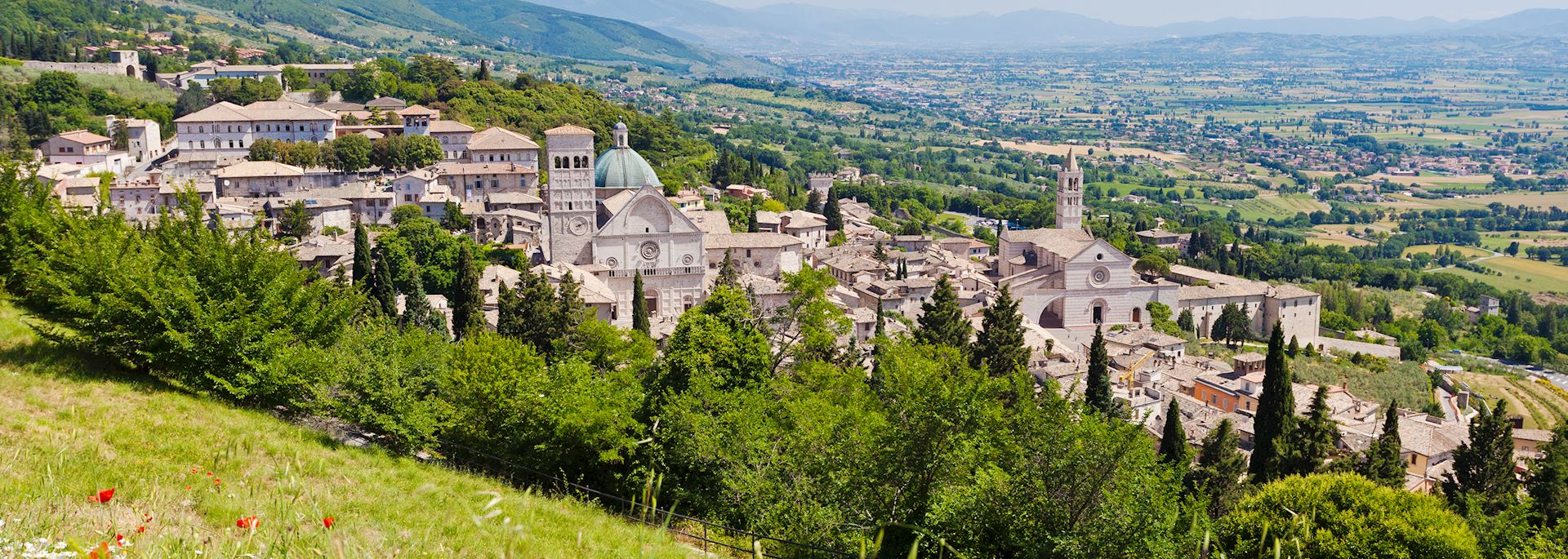
Self-drive tour Tuscany & Umbria
12 days from $8,375pp
- Day-to-day Itinerary
- Italy trip ideas
Tour highlights
Cycle through the vineyards and hill towns of Chianti on a guided E-bike tour.
Learn how to make cheese on a visit to a local pecorino producer’s farm.
Sample Tuscan wines and cuisine at a Michelin starred restaurant in a 12th century abbey complex.
Stay in a medieval borgo located close to the Umbrian capital of Perugia.
Visit the city of Assisi, where St Francis and the Franciscan order were born.
Price includes:
- Fully insured vehicle rental
- All accommodations
- 24-hour support while you travel
Itinerary idea in detail
Private customized tour. Ask us about booking your international flights at our preferred rates.
Upon arrival in Florence, you’ll be met by your private driver and transferred to your hotel in the city. After settling in, you’ll have a panoramic introduction tour of the city to see the highlights and get your bearings.

Your guide will meet you at the hotel for a privately guided tour of the Uffizi Gallery's art collections, where you will see some of the most important works of the Italian Renaissance. The afternoon is free to explore Florence as you please.
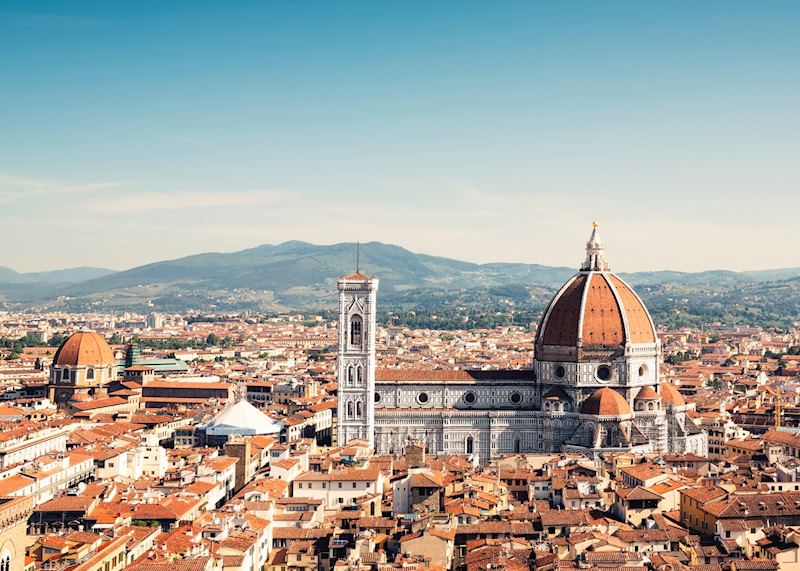
You’ll have a private transfer to Florence Airport to collect your car before departing for Chianti. Before heading to your hotel, you’ll stop at a 12th-century abbey complex for lunch and wine tasting in a Michelin-starred restaurant.
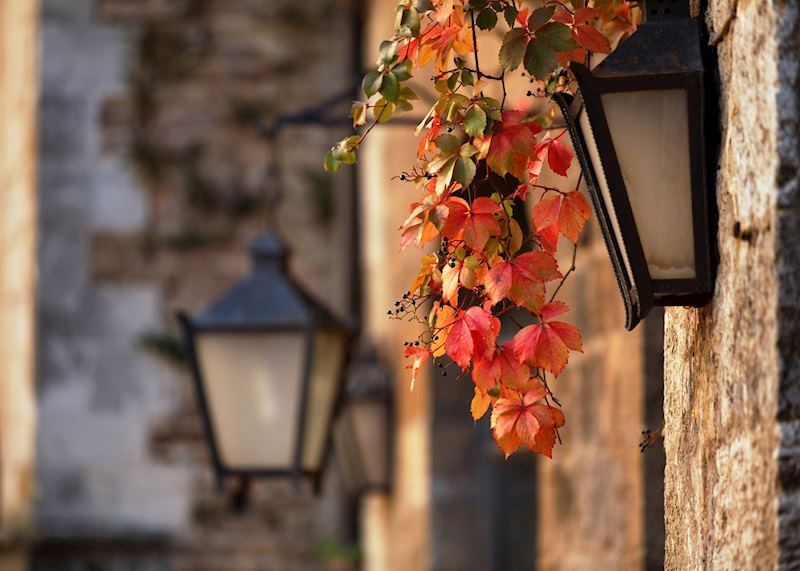
Drive to Greve in Chianti today to set off by bicycle into the hills of Chianti. You’ll pass vineyards and hill towns before ending back in the town, and the remainder of the day is yours to visit other hill towns of Chianti or relax.

Today, you’ll continue south to the Val d’Orcia. Set your own pace, visiting some of the region's towns and enjoying the stunning scenery at your leisure before reaching your next hotel just outside Montepulciano.
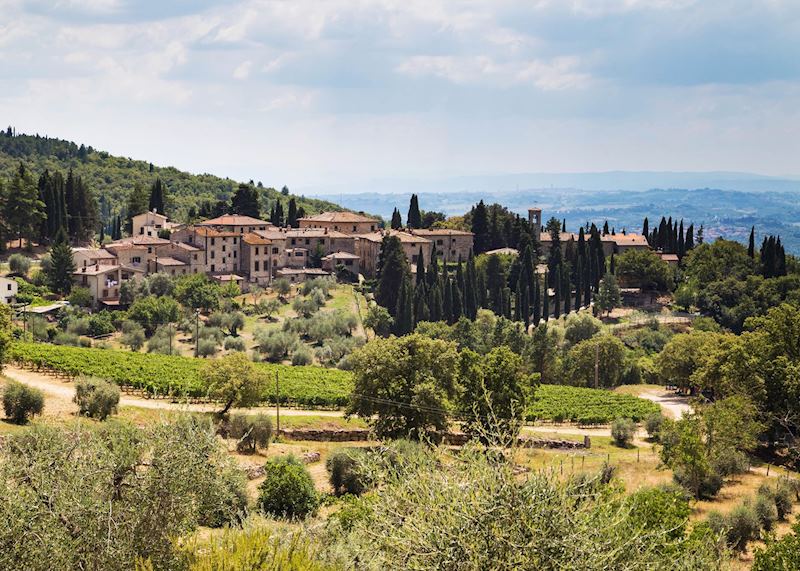
Learn how to make cheese today on a visit to a family-owned cheese maker’s farm where you’ll have a demonstration of how to make cheese, a tour of the facilities and lunch complete with the cheese you’ve made.
Explore the countryside south of Pienza today on a guided hike through the spectacular scenery in this area of the Val d’Orcia. The afternoon is free to visit the town or Pienza or return to your hotel.
Today, you’ll drive into Umbria and to the town of Perugia, where you’ll stay in a medieval borgo. You can set your own pace along the drive and explore as you like.
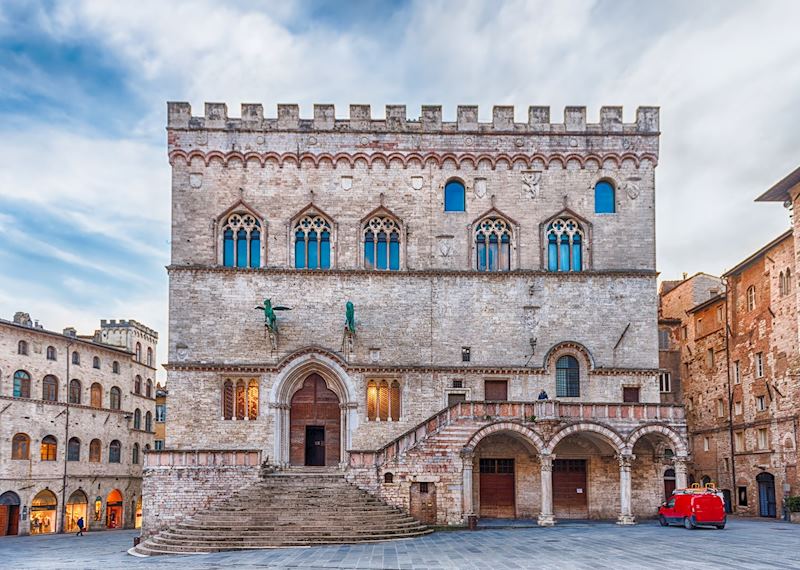
You’ll have a privately guided tour of Perugia today, learning about the history of the city and visiting some of the highlights, including the Carducci Gardens and the Piazza 4th of November.

Drive to Assisi for the day today, where you’ll meet your guide for a private tour of the town, including the Basilica of St Francis, among other important landmarks.
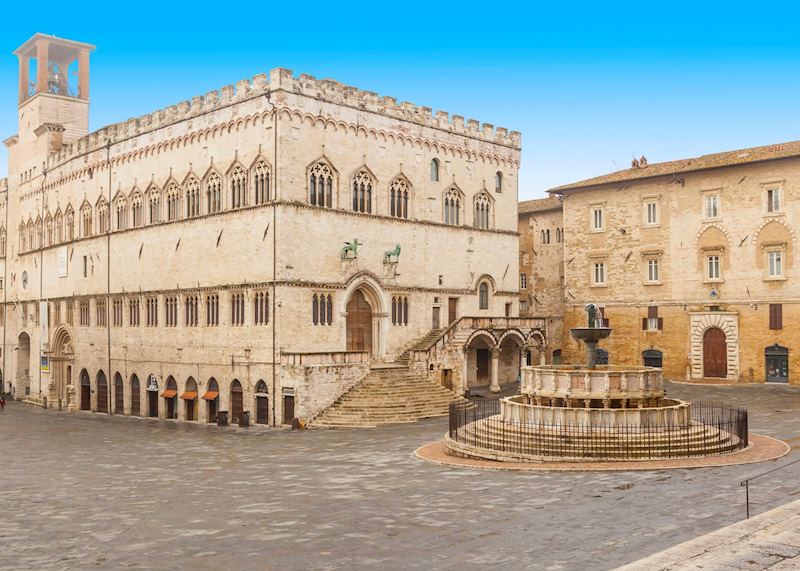
You’ll drive to Orvieto today. After checking into your hotel, you’ll meet your guide for an E-bike excursion through the countryside to the charming hill town of Bagnoregio enjoying lunch at a local agriturismo along the way.

You’ll make the drive south to Rome airport today to return your car and depart for your flight home.
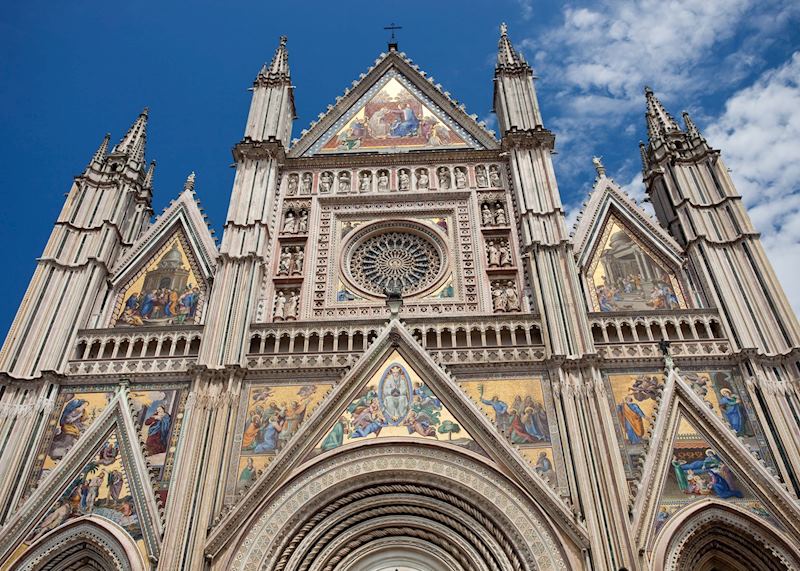
Accommodation options
While the itinerary price reflects the suggested accommodations, Audley trips are 100% tailor-made, and a specialist can help you select the option best suited to your tastes and budget.
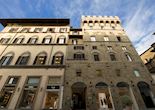
Antica Torre di Via Tornabuoni 1
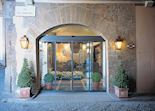
Hotel Degli Orafi
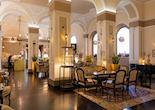
Hotel Bernini Palace
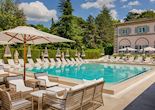
View more accommodations in Florence

Villa Il Poggiale
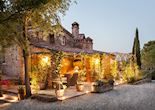
Borgo dei Conti Resort

Locanda Palazzone
- Tuscany region
- Val d'Orcia

The specialist who designs your trip to Italy will have explored the country many times and, in some cases, lived there. Their first-hand knowledge gives us the belief that no other travel company can match our expertise in helping you plan your trip.

Watch our tailor-made process
Other tours you may be interested in.
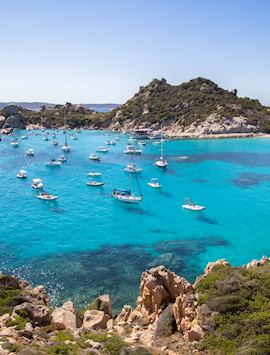
Sardinia in-depth
9 days from $6,895pp

Classic Italy tour: Rome, Venice, Florence & Tuscany
13 days from $13,085pp
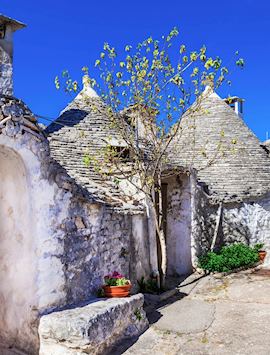
Puglia & Matera
10 days from $10,185pp

Florence & Rome explored
8 days from $6,925pp
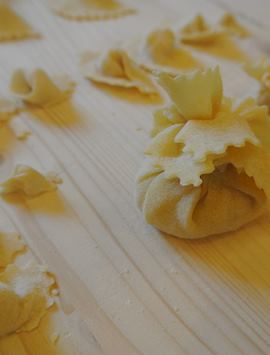
Classic Italian family adventure: Venice, Florence & Rome
10 days from $10,115pp
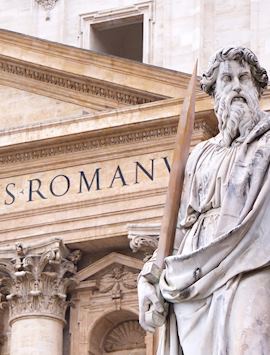
Italy beyond the summer
9 days from $6,815pp
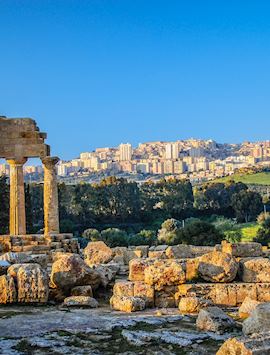
Classic Sicily tour
8 days from $8,055pp

North Italy & the Lakes
8 days from $8,330pp
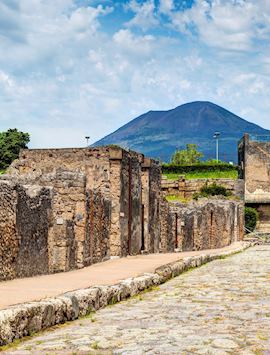
Southern Italy & Amalfi Coast tour
8 days from $7,555pp

Tuscany and Umbria
Travel guide.
- The Best Towns to Visit
- The Best Wines & Vineyards
- Frommer's Favorite Experiences
- The Greatest Artistic Masterpieces
- Best Dining Bets
- The Best Etruscan Sights
- The Best Festivals and Celebrations
- The Best Places to Avoid the Crowds
- The Best Luxury Hotels
- The Best Local Food Experiences
- The Best Mid-Range Hotels
- The Best Museums
- Planning a Trip
- Suggested Itineraries
The Best Towns to Visit in Tuscany and Umbria
- San Gimignano : The "Medieval Manhattan" bristles with more than a dozen tall stone towers, all slightly askew. It wins the "Most Densely Decorated Church" award for its old Duomo, whose interior walls are slathered with 15th-century frescoes. San Gimignano's skyline and back alleys, especially when moonlit, make it one of Italy's most atmospheric hill towns. Stay until all the tour buses have left, when you'll have the gardens and small piazze all to yourself.
- Volterra : Proud Volterra has been important in western Tuscany since the Etruscan era. From its magnificent rocky promontory, the ocher city surveys the sometimes wild, vast countryside surrounding it. Volterra is full of workshops where artisans craft the native alabaster into translucent souvenirs.
- Cortona : This stony hill town is no longer big enough to fill its medieval walls, but it still has its museums of paintings by Fra' Angelico and local boys Luca Signorelli and Pietro da Cortona. The restaurants serve steak from the famed Chianina cattle, raised in the valley below, where Etruscan tombs hint at the city's importance in a pre-Caesar Tuscany.
- Gubbio : This ancient Umbrian stronghold is like the last outpost of civilization before the wilderness of the high Apennines. The central piazza cantilevers over the lower town like a huge terrace. The square is bounded on one end by a mighty palace, all sharp stone lines and squared-off battlements. Inside is a cluttered archaeological museum and the same echoey medieval atmosphere that pervades the entire town.
- Todi : Umbria's most picturesque hill town somehow avoids most of the tourists. Many of its streets are so steep they've been chipped with shallow staircases down the middle. Vistas across the valley open up unexpectedly, and on the perfectly proportioned medieval main piazza is a town hall sprouting a staircase perfect for an Errol Flynn sword-fight scene.
Note : This information was accurate when it was published, but can change without notice. Please be sure to confirm all rates and details directly with the companies in question before planning your trip.

- All Regions
- Australia & South Pacific
- Caribbean & Atlantic
- Central & South America
- Middle East & Africa
- North America
- Washington, D.C.
- San Francisco
- New York City
- Los Angeles
- Arts & Culture
- Beach & Water Sports
- Local Experiences
- Food & Drink
- Outdoor & Adventure
- National Parks
- Winter Sports
- Travelers with Disabilities
- Family & Kids
- All Slideshows
- Hotel Deals
- Car Rentals
- Flight Alerts
- Credit Cards & Loyalty Points
- Cruise News
- Entry Requirements & Customs
- Car, Bus, Rail News
- Money & Fees
- Health, Insurance, Security
- Packing & Luggage
- -Arthur Frommer Online
- -Passportable
- Road Trip Guides
- Alaska Made Easy
- Great Vacation Ideas in the U.S.A.
- Best of the Caribbean
- Best of Mexico
- Cruise Inspiration
- Best Places to Go 2024
Umbria Travel Guide
Book your individual trip , stress-free with local travel experts
Select Month
- roughguides.com
- Travel guide
- Itineraries
- Local Experts
- Travel Advice
- Accommodation
Plan your tailor-made trip with a local expert
Book securely with money-back guarantee
Travel stress-free with local assistance and 24/7 support
Rakesh, USA
It was my first time using rough guides and it will not be my last. From the first time I connected with the team it had been great. They were easy to comm...
Often referred to as “the green heart of Italy”, Umbria is a predominantly beautiful and – despite the many visitors – largely unspoiled region of rolling hills, woods, streams and valleys. Within its borders it also contains a dozen or so classic hill-towns, each resolutely individual and crammed with artistic and architectural treasures to rival bigger and more famous cities. To the east, pastoral countryside gives way to more rugged scenery, none better than the dramatic twists and turns of the Valnerina and the high mountain landscapes of the Parco Nazionale dei Monti Sibillini.
Brief history of Umbria
Umbrian cuisine, lago trasimeno, città di castello, the valnerina.
Historically, Umbria is best known as the birthplace of several saints, St Benedict and St Francis of Assisi being the most famous, and for a religious tradition that earned the region such names as Umbra santa, Umbra mistica and la terra dei santi (“the land of saints”). The landscape itself has contributed much to this mystical reputation, and even on a fleeting trip it’s impossible to miss the strange quality of the Umbrian light, an oddly luminous silver haze that hangs over the hills.
After years as an impoverished backwater, Umbria has capitalized on its charms. Foreign acquisition of rural property is now as rapid as it was in Tuscany thirty years ago, though outsiders have done nothing to curb the region’s renewed sense of identity and youthful enthusiasm, nor to blunt the artistic initiatives that have turned Umbria into one of the most flourishing cultural centres in Italy.
Most visitors head for Perugia , Assisi – the latter with its extraordinary frescoes by Giotto in the Basilica di San Francesco – or Orvieto , whose Duomo is one of the greatest Gothic buildings in the country. For a taste of the region’s more understated charms, it’s best to concentrate on lesser-known places such as Todi, an increasingly chic but still unspoiled hill-town; Gubbio , ranked as the most perfect medieval centre in Italy, and Spoleto , for many people the outstanding Umbrian town. Although there are few unattractive parts of the Umbrian landscape (the factories of Terni and the Tiber Valley being the largest blots), some areas are especially enticing: the Valnerina, a beautiful valley surrounded by mountains and remote hilltop villages; the Piano Grande, a vast, featureless plain best visited in spring, when it's carpeted with wild flowers; and Lago Trasimeno, the largest lake in the Italian peninsula, with plenty of opportunities for swimming and watersports.
Travel ideas for Italy, created by local experts

Experience the hit TV show 'The White Lotus' in Sicily
Stay in beautiful Taormina with gorgeous views of Mount Etna and discover Sicily, including famous filming locations. Go on exclusive wine tastings, discover the Greek theater in Taormina with a private guide, visit other Sicilian towns and enjoy the crystal clear water on this week-long trip.

Enchanting Italian Lakes
Experience the picturesque lakes of Northern Italy, including Lake Garda, Como, Lugano and Maggiore; explore the charming Borromean Islands – former favourites of Ernest Hemingway – and stroll the romantic streets of Verona and Milan. All of this, and much more, with this self-drive trip!

From Venice to Florence: A Grand Tour of Northern Italy
From the atmospheric canals of Venice and the picturesque coastline of Cinque Terre, to the trendy designer boutiques of Milan and the Renaissance-infused streets of Florence, Northern Italy has plenty to offer. Experience it all with this comprehensive trip.
_listing_1475755133743.jpeg)
Florence: A Trip Back In Time
Florence. A mere mention of the name conjures up grand images of Renaissance romance, awe-inspiring art and astonishing architecture. Come and see for yourself.

Eternal Rome for the Weekend
Welcome to this whirlwind tour of Rome, also known as the Eternal City. Rome is one of the most photogenic cities on earth, so make sure you pack your camera.

Wine and food in Tuscany
Stay at a beautiful hotel in San Gimignano, a medieval hill town half way between Florence and Siena. Tuscany is known for its wines and food and that's what you'll be exploring on this itinerary - several wine and food pairings await. All hand-picked by your local travel specialist.
Umbria was named by the Romans after the mysterious Umbrii, a tribe cited by Pliny as the oldest in Italy, and one that controlled territory reaching into present-day Tuscany and Le Marche. Although there is scant archeological evidence about them, it seems that their influence was mainly confined to the east of the Tiber; the darker and more sombre towns to the west – such as Perugia and Orvieto – were founded by the Etruscans, whose rise forced the Umbrii to retreat into the eastern hills. Roman domination was eventually undermined by the so-called barbarian invasions, in the face of which the Umbrians withdrew into fortified hill-towns, paving the way for a pattern of bloody rivalry between independent city-states that continued through the Middle Ages. Weakened by constant warfare, most towns eventually fell to the papacy, entering a period of economic and cultural stagnation that continued up until the very recent past.
The cuisine of landlocked, hilly Umbria relies heavily on rustic staples – pastas and roast meats – and in the past tended to be simple and homely. The region is also the only area outside Piemonte where truffles are found in any abundance, and their perfumed shavings, particularly in the east of the region, find their way onto eggs, pasta, fish and meat – but at a price that prohibits overindulgence.
Meat plays a leading role – especially lamb and pork, which is made into hams, sausage, salami and, most famously, porchetta, whole suckling pig stuffed with rosemary or sage, roasted on a spit. Game may also crop up on some menus, most often as pigeon, pheasant or guinea fowl. The range of fish is restricted by the lack of a coast, but trout can be caught from the Nera River and Clitunno springs, while the lakes of Piediluco and Trasimeno yield eel, pike, tench and grey mullet. Vegetable delicacies include tiny lentils from Castelluccio, beans from Trasimeno, and celery and cardoons from around Trevi. Umbrian olive oil, though less hyped than Tuscan oils, is of excellent quality – about 90 percent is extra virgin – particularly that from around Trevi and Spoleto .
As for desserts, Perugia is renowned for its chocolate and pastries. Cheeses tend to be standard issue, although some smaller producers survive in the mountains around Norcia and Gubbio .
Umbria used to be best known outside Italy for fresh, dry white wines. Orvieto , once predominantly a medium-sweet wine, has been revived in a dry style. The wine was beloved of the artists and architects of Orvieto’s Duomo: Luca Signorelli requested a thousand litres per year by contract. In recent years the pre-eminence of Orvieto in the domestic market has been successfully challenged by Grechetto, an inexpensive and almost unfailingly good wine made by countless producers across the region. Umbria’s quest for quality is also increasingly reflected in a growing number of small producers, many of whom have followed the lead of Giorgio Lungarotti, one of the pioneers of Umbrian viticulture (any wine with his name on is reliable), and in some outstanding reds, notably the Torgiano Rosso Riserva DOCG and the Sagrantino DOCG of Montefalco. The region has four wine routes ( strade del vino ): the Strada del Sagrantino, around Montefalco; the Strada dei Vini del Cantico between Todi, Perugia, Torgiano, Spello and Assisi ; the Strada del Vino Colli del Trasimeno; and the Strada dei Vini Etrusco-Romano, in the province of Terni .
The most tempting destination around Perugia – whose surroundings are generally pretty lacklustre – is Lago Trasimeno, an ideal spot to hole up in for a few days, and particularly recommended if you want to get in some swimming, windsurfing or sailing. The lake is about 30km from Perugia and is easy to get to on public transport. It’s the biggest inland stretch of water on the Italian peninsula, though you wouldn’t think so to look at it, never deeper than 7m – hence bath-like warm water in summer.
A winning combination of tree-covered hills to the north, Umbria’s subtle light, and placid lapping water produces some magical moments, but on overcast and squally days the mood can turn melancholy. Not all the reed-lined shore is uniformly pretty either; steer clear of the northern coast and head for the stretches south of Magione and Castiglione if you’re after relative peace and quiet.
On the trail of Hannibal
Somewhere along the Lago Trasimeno shore towards the rambling village of Tuoro, probably at Sanguineto (“the Place of Blood”) or Ossaia (“the Place of Bones”), is the spot where the Romans suffered their famous clobbering at the hands of Hannibal in 217 BC. Hannibal was headed for Rome, having just crossed the Alps, when he was met by a Roman force under the Consul Flaminius. Things might have gone better for Flaminius if he’d heeded the omens that piled up on the morning of battle: first he fell off his horse; next the legionary standards had to be dug out of the mud; and finally – and this really should have raised suspicions – the sacred chickens refused their breakfast. Poultry accompanied all Roman armies and, by some means presumably known to the legionnaire in charge of chickens, communicated the will of the gods to waiting commanders in the field. Hannibal lured Flaminius into a masterful ambush, with the only escape a muddy retreat into the lake. Sixteen thousand Romans, including the hapless commander, were killed.
A hard-to-find drive and walkway have been laid out, starting and finishing just west of Tuoro on the road to Cortona, which take in salient features of the old battlefield; Tuoro's irregularly open Pro Loco office has some information on the site, walkway and drive, and occasionally offers guided tours.
Activities on Lago Trasimeno
There are plenty of things to do on Lake Trasimeno from operators based in Castiglione del Lago, including windsurfing (contact Club Velico ), canoeing, waterskiing and horseriding (ask at the tourist office for recommended operators). You can rent bikes at Cicli Valentini .
The best of the little beaches is at the public lido on the southern side of Castiglione’s promontory, with pedalos for rent and boat trips, including regular excursions to the strangely rectangular island of Isola Maggiore, a fun ride if you don’t mind the summer crowds. There’s a pretty walk round the edge of the island, and one good, popular hotel, the three-star Da Sauro , Via Guglielmi 1, which also doubles as a fine restaurant.
Città di Castello is a charming and relatively little-visited town 56km north of Perugia in the Upper Tiber Valley, with a sedate and ordered medieval centre that’s well worth a few hours. It’s also the focus for visitors staying in the many rented villas and farmhouses in the hills to the east and west. In late August and early September the town becomes busier than usual during its renowned Festival of Chamber Music , dedicated to a different country each year.
Once an important Roman centre – the gridiron of streets is virtually the only legacy – today the town preserves just a handful of fairly mediocre medieval monuments. Its main attractions are its museums and art galleries, along with some quiet, pleasant medieval streets.
The Valnerina is the most beautiful part of Umbria. Strictly translated as the “little valley of the Nera”, it effectively refers to the whole eastern part of the region, a self-contained area of high mountains, poor communications, steep wooded valleys, upland villages and vast stretches of barren nothingness. Wolves still roam the summit ridges and the area is a genuine “forgotten corner”, deserted farms everywhere bearing witness to a century of emigration.
Mountains in the region are 1500m high, creeping up as you move east to about 2500m in the wonderful Monti Sibillini, the most outstanding parts of which fall under the protection of the Parco Nazionale dei Monti Sibillini. It’s difficult to explore with any sort of plan (unless you stick to the Nera), and the best approach is to follow your nose, poking into small valleys, tracing high country lanes to remote hamlets. More deliberately, you could make for Vallo di Nera, the most archetypal of the fortified villages that pop up along the Lower Nera. Medieval Triponzo is a natural focus of communications, little more than a quaint staging post and fortified tower (and a better target than modernish Cerreto nearby).
Norcia for foodies
Meat-eaters would be daft not to try the deservedly famous local pork products. Anything that can be made from a pig, the Norcians apparently make – and supposedly better than anyone else. For this reason, alimentari throughout Italy who pride themselves on their hams and salamis will call themselves norcineria. If finances stretch, you could also indulge in the area’s prized black truffle. The season runs from January to April (though you may come across the lesser-prized white summer truffles too). Plenty of shops, an attraction in themselves, are on hand to sell you all manner of local specialities, not just truffles, but also hams, the famed lentils of Castelluccio and lots of rare mountain cheeses.
The Piano Grande
The eerie, expansive Piano Grande, 20km east of Norcia, is an extraordinary prairie ringed by bare, whaleback mountains and stretching, uninterrupted by tree, hedge or habitation, for miles and miles. A decade or so ago, it was all but unknown: now, in summer at least, it can be disconcertingly busy. It’s much photographed – especially in spring when it’s ablaze with wild flowers of every description – and was used by Zeffirelli as a setting for his Franciscan film Brother Sun, Sister Moon. The desperately isolated village of Castelluccio hangs above it at around 1400m, and although no longer the sole preserve of shepherds, it remains an unspoilt base and the ideal starting point for any number of straightforward mountain walks. To plan routes, get hold of the 1:50,000 Kompass map no. 666 or the more detailed 1:25,000 CAI maps (the latter are often available in Norcia’s or Castelluccio’s bars).
Note that there's no public transport into the area (save for one bus in and out on a Thursday, market day in Norcia), though you might try your luck at catching lifts in high season.
Narni claims to be the geographical centre of Italy, with a hilltop site jutting into the Nera Valley on a majestic spur and crowned by another of Cardinal Albornoz’s formidable papal fortresses. Commanding one end of a steep gorge (about ten minutes of fairly spectacular train travel), it was once the gateway into Umbria, the last post before the Tiber Valley and the undefended road to Rome. However, while the town retains a fine medieval character, the views from its heights are marred by steel and chemical works around Narni Scalo, the new town in the valley below.
The heart of the old town has all the standard fittings: the medieval piazzas, the warren of streets, a modest art gallery, the usual crop of Romanesque churches and a huge rocca, open for occasional events. There’s a Roman bridge on the outskirts, the subject of considerable local hype; when Goethe arrived in Narni in the middle of the night he was peeved not to have seen it but he was only missing a solitary arch in the middle of the river – just as easily viewed from the train.
Todi is one of the best-known Umbrian hill-towns, its central Piazza del Popolo widely held to be among the most perfect medieval piazzas in Italy, and the town itself to be the country’s most liveable. At heart a thriving and insular agricultural centre, Todi is also a favoured trendy retreat for foreign expats and Rome’s arts and media types. In the way of these things the visitors haven’t been far behind, but neither fact should deter you from making a day-trip: few places beat it for sheer location – its hilltop position is stunning – and fairy-tale medievalism. Many festivals and events are held in Todi throughout the year, including the increasingly popular Todi Festival (late Aug or early Sept).
Discover more places in Italy

- Spello and around
The Rough Guides to Italy and related travel guides
In-depth, easy-to-use travel guides filled with expert advice.

Find even more inspiration here

Planning your own trip? Prepare for your trip
Use Rough Guides' trusted partners for great rates
written by Rough Guides Editors
updated 26.04.2021
Ready to travel and discover Italy?
Get support from our local experts for stress-free planning & worry-free travels.
- Where to stay
- Travel advice
Spotify is currently not available in your country.
Follow us online to find out when we launch., spotify gives you instant access to millions of songs – from old favorites to the latest hits. just hit play to stream anything you like..

Listen everywhere
Spotify works on your computer, mobile, tablet and TV.

Unlimited, ad-free music
No ads. No interruptions. Just music.

Download music & listen offline
Keep playing, even when you don't have a connection.

Premium sounds better
Get ready for incredible sound quality.

Enjoy fast, free delivery, exclusive deals, and award-winning movies & TV shows with Prime Try Prime and start saving today with fast, free delivery
Amazon Prime includes:
Fast, FREE Delivery is available to Prime members. To join, select "Try Amazon Prime and start saving today with Fast, FREE Delivery" below the Add to Cart button.
- Cardmembers earn 5% Back at Amazon.com with a Prime Credit Card.
- Unlimited Free Two-Day Delivery
- Streaming of thousands of movies and TV shows with limited ads on Prime Video.
- A Kindle book to borrow for free each month - with no due dates
- Listen to over 2 million songs and hundreds of playlists
- Unlimited photo storage with anywhere access
Important: Your credit card will NOT be charged when you start your free trial or if you cancel during the trial period. If you're happy with Amazon Prime, do nothing. At the end of the free trial, your membership will automatically upgrade to a monthly membership.
Buy new: .savingPriceOverride { color:#CC0C39!important; font-weight: 300!important; } .reinventMobileHeaderPrice { font-weight: 400; } #apex_offerDisplay_mobile_feature_div .reinventPriceSavingsPercentageMargin, #apex_offerDisplay_mobile_feature_div .reinventPricePriceToPayMargin { margin-right: 4px; } $9.99 $ 9 . 99 FREE delivery Wednesday, September 4 on orders shipped by Amazon over $35 Ships from: Amazon.com Sold by: Amazon.com
Return this item for free.
We offer easy, convenient returns with at least one free return option: no shipping charges. All returns must comply with our returns policy.
- Go to your orders and start the return
- Select your preferred free shipping option
- Drop off and leave!
Save with Used - Very Good .savingPriceOverride { color:#CC0C39!important; font-weight: 300!important; } .reinventMobileHeaderPrice { font-weight: 400; } #apex_offerDisplay_mobile_feature_div .reinventPriceSavingsPercentageMargin, #apex_offerDisplay_mobile_feature_div .reinventPricePriceToPayMargin { margin-right: 4px; } $9.49 $ 9 . 49 FREE delivery September 5 - 10 Ships from: ZBK Wholesale Sold by: ZBK Wholesale

Download the free Kindle app and start reading Kindle books instantly on your smartphone, tablet, or computer - no Kindle device required .
Read instantly on your browser with Kindle for Web.
Using your mobile phone camera - scan the code below and download the Kindle app.

Image Unavailable

- To view this video download Flash Player

Follow the author

Insight Guides Pocket Tuscany and Umbria (Travel Guide with Free eBook) (Insight Pocket Guides) Paperback – January 1, 2019
Purchase options and add-ons.
- Part of series Insight Pocket Guides
- Print length 144 pages
- Language English
- Publisher Insight Guides
- Publication date January 1, 2019
- Dimensions 4 x 0.5 x 5.5 inches
- ISBN-10 1786718170
- ISBN-13 978-1786718174
- See all details

Frequently bought together

Customers who bought this item also bought

Editorial Reviews
About the author, product details.
- Publisher : Insight Guides; 1st edition (January 1, 2019)
- Language : English
- Paperback : 144 pages
- ISBN-10 : 1786718170
- ISBN-13 : 978-1786718174
- Dimensions : 4 x 0.5 x 5.5 inches
- #21 in Umbria Travel Guides
- #35 in San Marino & Umbria Travel Guides
- #1,893 in general Italy Travel Guides
About the author
Insight guides.
Insight Guides is a pioneer of full-colour guide books, with almost 50 years' experience of publishing high-quality, visual travel guides with user-friendly, modern design.
We produce around 400 full-colour print guide books and maps, as well as phrase books, picture-packed eBooks and apps to meet different travellers' needs.
Insight Guides' unique combination of beautiful travel photography and focus on history and culture create a unique visual reference and planning tool to inspire your next adventure.
insightguides.com
Customer reviews
- 5 star 4 star 3 star 2 star 1 star 5 star 64% 17% 8% 11% 0% 64%
- 5 star 4 star 3 star 2 star 1 star 4 star 64% 17% 8% 11% 0% 17%
- 5 star 4 star 3 star 2 star 1 star 3 star 64% 17% 8% 11% 0% 8%
- 5 star 4 star 3 star 2 star 1 star 2 star 64% 17% 8% 11% 0% 11%
- 5 star 4 star 3 star 2 star 1 star 1 star 64% 17% 8% 11% 0% 0%
Customer Reviews, including Product Star Ratings help customers to learn more about the product and decide whether it is the right product for them.
To calculate the overall star rating and percentage breakdown by star, we don’t use a simple average. Instead, our system considers things like how recent a review is and if the reviewer bought the item on Amazon. It also analyzed reviews to verify trustworthiness.
- Sort reviews by Top reviews Most recent Top reviews
Top reviews from the United States
There was a problem filtering reviews right now. please try again later..
Top reviews from other countries
- Amazon Newsletter
- About Amazon
- Accessibility
- Sustainability
- Press Center
- Investor Relations
- Amazon Devices
- Amazon Science
- Sell on Amazon
- Sell apps on Amazon
- Supply to Amazon
- Protect & Build Your Brand
- Become an Affiliate
- Become a Delivery Driver
- Start a Package Delivery Business
- Advertise Your Products
- Self-Publish with Us
- Become an Amazon Hub Partner
- › See More Ways to Make Money
- Amazon Visa
- Amazon Store Card
- Amazon Secured Card
- Amazon Business Card
- Shop with Points
- Credit Card Marketplace
- Reload Your Balance
- Amazon Currency Converter
- Your Account
- Your Orders
- Shipping Rates & Policies
- Amazon Prime
- Returns & Replacements
- Manage Your Content and Devices
- Recalls and Product Safety Alerts
- Registry & Gift List
- Conditions of Use
- Privacy Notice
- Consumer Health Data Privacy Disclosure
- Your Ads Privacy Choices
Blog Outline
Home > Blog > Travel > Insurance > Top Places to Visit in Italy: A Complete Guide for Indians

Top Places to Visit in Italy: A Complete Guide for Indians
30sec Snapshot
Italy has something for everyone, from history buffs to natural enthusiasts. Here are the famous places to visit in Italy to add to your bucket list.
Italy is an amazing country nestled in the heart of southern Europe. Millions of people visit Italy from all over the world every year. Places to visit in Italy are countless, including the history of Rome , the canals of Venice, the architecture of Florence, the delicious wines of Tuscany and many more. You may get confused about what to visit and avoid with limited time. In this blog we got you covered by providing you a list of the most beautiful places in Italy .
1. Famous Cities in Italy
Overview of italy’s iconic cities.
Let us explore the places to visit in Italys’ iconic cities.
Top Places to Visit in Rome : Rome is a city you should never miss on your trip to Italy. It is known for its historical and cultural trove. You can visit places like the Colosseum, Vatican museums, and structures like the Roman Forum and Pantheon. The city of seven hills also attracts pilgrims worldwide as it is the heart of many religious sites. Rome is a romantic gateway for couples with its beautiful ambience, picturesque landscapes, and charming streets.
Best Places to Visit in Venice : The city of love is built in a coasted area with 118 islands connected by many canals. It is famous for its beautiful canals and gondola rides. Some historical places to visit in Venice include Doge’s palace, St. Marks’s Square, the bridge of Sighs, and the Grand Canal. Venice is a pedestrian city with narrow, winding streets, so be prepared to walk a lot.
Top Places to Visit in Milan : The fashion capital of Italy is known for its fashion, cultural heritage and historical sites. You can visit Milan Cathedral, Santa Maria delle Grazie, Sforza Castle, and the Galleria Vittorio Emanuele II. You should never miss trying Milanese cuisine. Taste the mouth-watering dishes such as risotto alla Milanese, osso buco, and cotoletta alla Milanese.
2. Hidden Gems and Scenic Places to Visit in Italy
Explore italy beyond the famous cities.
Here are some beautiful places perfect for those searching for unique experiences.
Best Places to Visit in Central Italy: You can visit small towns like Cortona and San Gimignano, where you can try dry white wine and Montepulciano in Tuscany. Umbria also has many wonderful places like Siena, Orvieto, and Perugia. You can visit wine and oil treasures and cycle, bike, and hike to many places in Umbria.
Best Places to Visit in Piedmont, Italy: This wine region of Italy is housed on the border of France and Switzerland, yet it is less touristy. This place is full of hills and mountains, so you can ski and walk. You should explore places like Lake Maggiore, Borromean islands, the Langhe wine region, and Turin’s historical centres, such as the Royal Palace of Turin, Turin Cathedral, and the Egyptian Museum.
Embark on Your Italian Adventure with an Italy Visa for Indians at the Lowest Price!

3. Food and Wine Tour of Italy
Best places to visit in italy for wine and food.
Italy is a paradise for food lovers. Let us explore the places serving the Famous Food in Italy .
Places to Visit in Tuscany, Italy: Chianti is the famous wine region in Tuscany. Over 8,000 cases of wine are produced there every year. You can also choose for a wine tour in Tuscany. Florence is also known for its culinary scene, where you can enjoy visiting cooking classes and traditional cafes. Visit Panino at Procacci, Antonio Mattei Biscotti, and try Pasta Fresca.
Best Places to Visit in Naples: Naples offers you the most delicious dishes which will show the history and culture of Italy. Try Aperitivo in Dante’s Square, as well as pizza, spaghetti, Baba, and Ragù in Naples. Beyond luxury dining, street foods like cuoppo and pizza offer your most unforgettable taste experience.
Cost of Italy Trip from India for Food Lovers: The average meal cost ranges from $20 per person. The cost of breakfast is cheaper when compared to lunch and dinner. For a budget-friendly food tour, you can opt for street food ranging from 3 to 7$. While for luxury dining, there are many Michelin Star restaurants.
4. Historical Landmarks and Cultural Sites
Italy’s historical and cultural richness.
There are a plethora of options for historical sites. Check out some of the places to visit in Italy for history buffs. In Italy, you can visit Renaissance art, Baroque architectural wonders, and ancient ruins.
Top 10 Places to Visit in Pisa Italy: Beyond the Leaning Tower, here are the must-visit places in Pisa,
- Duomo di Pisa
- Museo Delle Aviotruppe
- Piazza dei Miracoli
- Battistero di San Giovanni
- Piazza dei Cavalieri
- Murale Tuttomondo di Keith Haring
- Chiesa di Santa Maria della Spina
- Palazzo Blu
- Museo Nazionale di San Matteo
Historical Places to Visit in Venice: Venice is an iconic historical city in Italy. It has numerous churches, palaces, and museums. For a historical tour, you can visit places like the Jewish Ghetto, Scuola Grande di San Rocco, and Basilica di Santa Maria Gloriosa dei Frari.
5. Things to Do in Italy
Exciting activities for every type of traveller.
Look out for outdoor and cultural activities from cities to the countryside.
Places to Visit in Italy in 2 Days: Here’s a quick two-day itinerary for those with limited time.
Day 1 – Visit Rome: You can visit key places like the Colosseum, the Roman Forum, and the Vatican Museums.
Day 2 – Visit Venice: You can see St. Mark’s Square, Grand Canal and Doge’s Palace and do the last-minute shopping in San Marco, Rialto or Dorsoduro.
Outdoor Experiences: You can hike in the Dolomites, explore Amalfi Coast trails, camp in Puglia, cycle in Tuscany, mountain bike in Molise, visit caves in Le Marche and enjoy scenic drives through the Tuscan countryside. Additionally, you can have a group boat day tour from Sorrento, Chianti safari, a private boat to Murano and Burano islands, and an excursion on a luxury yacht.
6. Planning Your Italy Trip from India
Italy trip cost from india.
Provide a breakdown of costs, including flights, accommodations, meals, and tours.
Budgeting Tips:
- Travel during shoulder seasons, during which you can get lower prices on flights and accommodations.
- Book in advance, like three months before your trip, to get great deals on flight prices.
- Choose budget-friendly accommodations like budget hotels, guest houses and dormitory beds.
- Use public transport and eat like a local in street stalls.
Cost of Italy Trip from India :
Economical Budget
- Accommodation : Expect to pay €20 to €50 per night for hostel beds and €50 to €100 per night for budget hotels or guesthouses.
- Meals : Budget-friendly meals, including street food and local eateries, typically range from €4 to €13 per meal.
Mid-Range Budget
- Accommodation : The cost of staying in a mid-range hotel or an Airbnb typically ranges from €100 to €200 per night for a double-occupancy room.
- Meals : Daily expenses for dining at casual sit-down restaurants or trattorias range from €26 to €53.
Luxury Budget
- Accommodation : In 5-star hotels, the cost starts from €300 and can go up to €1,000 or more per night depending on location and amenities.
- Meals : Dining at Michelin-starred or high-end restaurants usually costs between €44 to €116 per day.
7. Top Places to Visit in Italy by Region
Highlight key attractions by region.
Best Places to Visit Italy’s Central Region: This region is known for its Renaissance art, medieval cities, and picturesque landscapes. It is home to many iconic cities like Florence, Siena, and Pisa.
Best Places to Visit in Piedmont Italy: This region is known for its capital city Turin, world-class wines and landscapes of the Alps. You must visit places such as Turin, Alba, and Barolo wine country.
Best Places to Visit in Venice Italy: Romantic ambience, beautiful canals and historic architecture comprise this region. Do visit places like Cannaregio district, Murano, and Burano.
Top Places to Visit in Milan Italy: This region is famous for fashion, which offers a blend of modernity and sophistication. The must-visit places are Brera district, Navigli canals, and Porta Nuova.
Get an Italy Visa for Indians with an Easy and Hassle-Free Process!
Italy is a country filled with some of the world’s most beautiful places, including the ancient ruins of Rome, the scenic canals of Venice, the wonders of Florence, and more. The country promises to offer a captivating experience for everyone. Never forget to taste the world-class Italian cuisine. This guide will help you find the best places to visit in Italy . Italy’s charm is accessible to everyone, from budget travellers to luxury travellers. Start planning your trip to Italy to create the most memorable days of your life.
Frequently Asked Questions
Venice, Puglia, Rome, Sardinia, and Turin are some of the beautiful places in Italy.
Generally, the trip costs depend on the type of travel you choose, cities, amenities, and season however the average price ranges from 750 € to 2100 € per person including travel, lodging, meals, transportation, and sightseeing for a 7 to 10 days trip.
Florence, Pisa, Siena and Pienza are some places to visit in Tuscany, Italy.
A minimum of 10 days is required to see the highlights of Italy from big cities to the countryside of Italy.
The Leaning Tower, Cathedral of Santa Maria Assunta, Baptistery, Campo Santo, Museo dell’Opera del Duomo, Murale Tuttomondo, Guelfa Tower,Museum of Ancient Ships, Santa Maria della Spina, and Borgo Stretto are the top 10 places to visit in Pisa Italy
Related Blogs
Best Things to Do in Amsterdam for Indian Travellers
Let’s explore the Best Restaurants in Amsterdam Netherlands
Top Places to Visit in Paris for Indian Travellers
The Famous Food Places in Paris for Indian Palettes
How To Travel in Switzerland During Vacation from India
How to Travel in Italy: A Comprehensive Guide for Indians
Recent Blogs

Amazing Places to Visit in Netherlands for Indian Tourists
- Here is all about unboxing the beautiful places to visit in Netherlands, starting from crowded cities like Amsterdam to villages offering a slice of nature.
Shishira & Navneeth

Turkey Travel Guide: Places to Visit in Turkey for Indians
- Explore the best places to visit in Turkey, from Istanbul's historic landmarks to Cappadocia's hot air balloons. Discover cultural gems and beautiful landscapes.
- Discover the best places to visit in Italy, from the canals of Venice to the ancient wonders of Rome. Plan your dream trip with this comprehensive guide!
Related Videos

Network Partners
Download App

Partner T&Cs

Legal Policies & Documents
Verify MobileApp Checksum
SBM Bank Customer Care
© goniyo.com 2024 | FINNEW SOLUTIONS PVT. LTD.
Discover more from Niyo
Subscribe now to keep reading and get access to the full archive.
Type your email…
Continue reading
Scan QR code to download the app

Stop Paying International Transaction Fees!

Share on Mastodon

IMAGES
COMMENTS
Tuscany and Umbria are densely populated with things to see, perhaps more so than any other region in Europe. It could take months to experience all of its art, architecture, food, and wine. Lovers of Renaissance art could spend a month in Florence and still discover new gems to admire. Wine buffs could sip and sniff their way through months in ...
Piazzas -- Piazza del Campo, the scallop-shaped setting for Siena's famous Palio race, is the heart of the city and an icon of medieval town planning. Simple and serene, Todi's Piazza del Popolo is Umbria's most majestic square, with 13th-century palazzi complemented by a 12th-century Duomo. Churches -- Western art was born at the ...
Day 2: Florence (sleep in Florence) Day 3: Florence (sleep in Florence) Day 4: Florence (sleep in Florence) Day 5: Bus to Siena (1.5 hours; sleep in Siena) Day 6: Siena (sleep in Siena) Day 7: Rent car, drive Crete Senesi route to Montepulciano (sleep in Montepulciano) Day 8: Follow our guidebook's "Heart of Tuscany Drive," with a stop in ...
For Tuscany, one strategy is to spend a few days in Florence (see my suggestions below for enjoying this most Renaissance of cities), three nights in Siena, and two nights in San Gimignano. During those five days in the Tuscan countryside, be sure to take a wine tour. For Umbria, divide your time between the three main towns: Orvieto, Perugia ...
Tuscany. With its manicured fields, rustic farms, cypress-lined driveways, and towns clinging to nearly every hill, Tuscany is our romantic image of village Italy. Venture beyond the fringes of Florence and you'll find a series of sun- and wine-soaked villages, each with its own appeal. Stretching from the Umbrian border to the Ligurian Sea ...
Two weeks will give you enough time to see Tuscany's top destinations with some additional time to sample the treasures of Umbria and the pleasures of the Val d'Orcia. Days 1-2: Florence. The sights most easily tackled together are the Cathedral, the Baptistery, Giotto's bell tower, Orsanmichele, and Santa Maria Novella.
So, here are the best things to do in Umbria that will help you make the most of the region. 1. Visit Perugia, the capital of Umbria. Piazza IV Novembre in Perugia. In the centre of Umbria, Perugia is the region's main town. It boasts an impressive cultural history, with roots in its Etruscan past.
Practical travel guide to Tuscany & Umbria with a free eBook featuring points-of-interest structured lists of all sights and off-the-beaten-track treasures, with detailed colour-coded maps, practical details about what to see and to do in Tuscany & Umbria, how to get there and around, pre-departure information, as well as top time-saving tips, like a visual list of things not to miss in ...
Dimensions: 129 x 198mm. Discover the Rough Guide to Tuscany & Umbria, a comprehensive and entertaining travel guide that comes complete with detailed maps. It's packed with comprehensive sight descriptions - suited to different travellers' needs - and things to do in Tuscany & Umbria, plus practical information, when to go to Tuscany ...
The medieval hill towns of Tuscany and Umbria take center stage on this relaxed, 8-day road trip through the Italian countryside. Starting in the ancient city-state of Cortona, you'll set out on day trips to the stunning fortified towns of Montepulciano and Arezzo, discovering a treasure trove of Renaissance art and architecture. Hop over to quieter Umbria for spectacular scenery and more ...
Umbria is easily reached from Florence or Rome. Meanwhile, from Rome, Tuscany's a bit farther than Umbria. It takes two hours to drive from Rome to Pitigliano, a lovely town right over the border from Lazio in Tuscany. Umbria is much closer; it only takes one hour to drive to the medieval hill town of Narni, or 1 hour 15 minutes to drive to ...
Tuscany & Umbria. Tuscany and Umbria are, without a doubt, two of Italy's most beautiful regions. And they have a lot in common: both are known for their rolling hills and vineyards, medieval hilltowns and fantastic food. ... This food style travel guide invites you to embark on a gastronomic journey through Montefalco, where every meal is an ...
Tuscany and Umbria Travel Guide: Explore the Heart of Italy. Embark on an unforgettable journey through the picturesque landscapes, rich history, and vibrant culture of Tuscany and Umbria with this comprehensive travel guide. Nestled in the heart of Italy, these two regions beckon travelers with their timeless charm, medieval hilltop towns, and world-renowned art and cuisine.
There is a newer edition of this item: The Rough Guide to Tuscany & Umbria (Travel Guide with Free eBook) (Rough Guides) $17.56. (27) Only 20 left in stock - order soon. Your ultimate guide to the food, art, architecture, history, and beauty of one of Italy's most magnificent regions. Explore Siena, San Gimignano, Florence, Assisi, and more ...
A glance at the map of Umbria shows three likely east-west paths that can be incorporated into your Italian tourist itinerary. A cut across the northern section, from Tuscany to Citta di Castello to Gubbio and on to some pretty fascinating destinations in Le Marche like Fabriano or the monastery of Fonte Avellana would make a fine week to ten ...
Umbria is located in Central Italy and borders Tuscany, Lazio, and Le Marche. Whilst it's a landlocked region, there are many beautiful lakes to discover including the best known Lake Trasimeno. It's south of Florence, Milan, and Venice and north of Rome. By car, it takes just under two hours to reach the capital, Perugia, from Florence and ...
In writing this travel guide, we intend to serve as the best possible online resource for anyone wishing to discover this extraordinary place. Tuscany is found in central Italy, and is beloved around the world for its magnificent landscapes, medieval hilltop towns, and exquisite food and wine. As well as its outstanding natural beauty and ...
Tour highlights. Cycle through the vineyards and hill towns of Chianti on a guided E-bike tour. Learn how to make cheese on a visit to a local pecorino producer's farm. Sample Tuscan wines and cuisine at a Michelin starred restaurant in a 12th century abbey complex. Stay in a medieval borgo located close to the Umbrian capital of Perugia.
The Best Towns to Visit in Tuscany and Umbria. San Gimignano: The "Medieval Manhattan" bristles with more than a dozen tall stone towers, all slightly askew. It wins the "Most Densely Decorated Church" award for its old Duomo, whose interior walls are slathered with 15th-century frescoes. San Gimignano's skyline and back alleys, especially when ...
Tuscany & Umbria: Rustic Beauty in the Italian Heartland. Small groups of no more than 16 travelers, guaranteed. Traveler Reviews (305) 96% Traveler Excellence Rating. Italy: Lucca, Chianti region, Pienza, Spoleto, Rome. STARTING FROM $4,295.
Rough Guides® is a trademark owned by Apa Group with its headquarters at 7 Bell Yard London WC2A 2JR, United Kingdom. Plan your visit to Umbria, Italy: find out where to go and what to do in Umbria with Rough Guides. Read about itineraries, activities, places to stay and travel essentials and get inspiration from the blog in the best guide to ...
Listen to this episode from My Blog » Corey Mcpherson on Spotify. Download EPUB Fodor's Florence and Tuscany: With Assisi and the Best of Umbria (Full-color Travel Guide) by Fodor's Travel Publications Inc. on Audiobook Full Volumes read epub Fodor's Florence and Tuscany: With Assisi and the Best of Umbria (Full-color Travel Guide) by Fodor's Travel Publications Inc. is a great book ...
Insight Pocket Guides: ideal itineraries and top travel tips in a pocket-sized package. Now with free eBook, and a pull-out map. Plan your trip, plan perfect days and discover how to get around - this pocket-sized guide is a convenient, quick-reference companion to discovering what to do and see in Tuscany and Umbria, from top attractions like Florence's Duomo and Uffizi Gallery, to hidden ...
Italy is an amazing country nestled in the heart of southern Europe. Millions of people visit Italy from all over the world every year. Places to visit in Italy are countless, including the history of Rome, the canals of Venice, the architecture of Florence, the delicious wines of Tuscany and many more. You may get confused about what to visit and avoid with limited time.